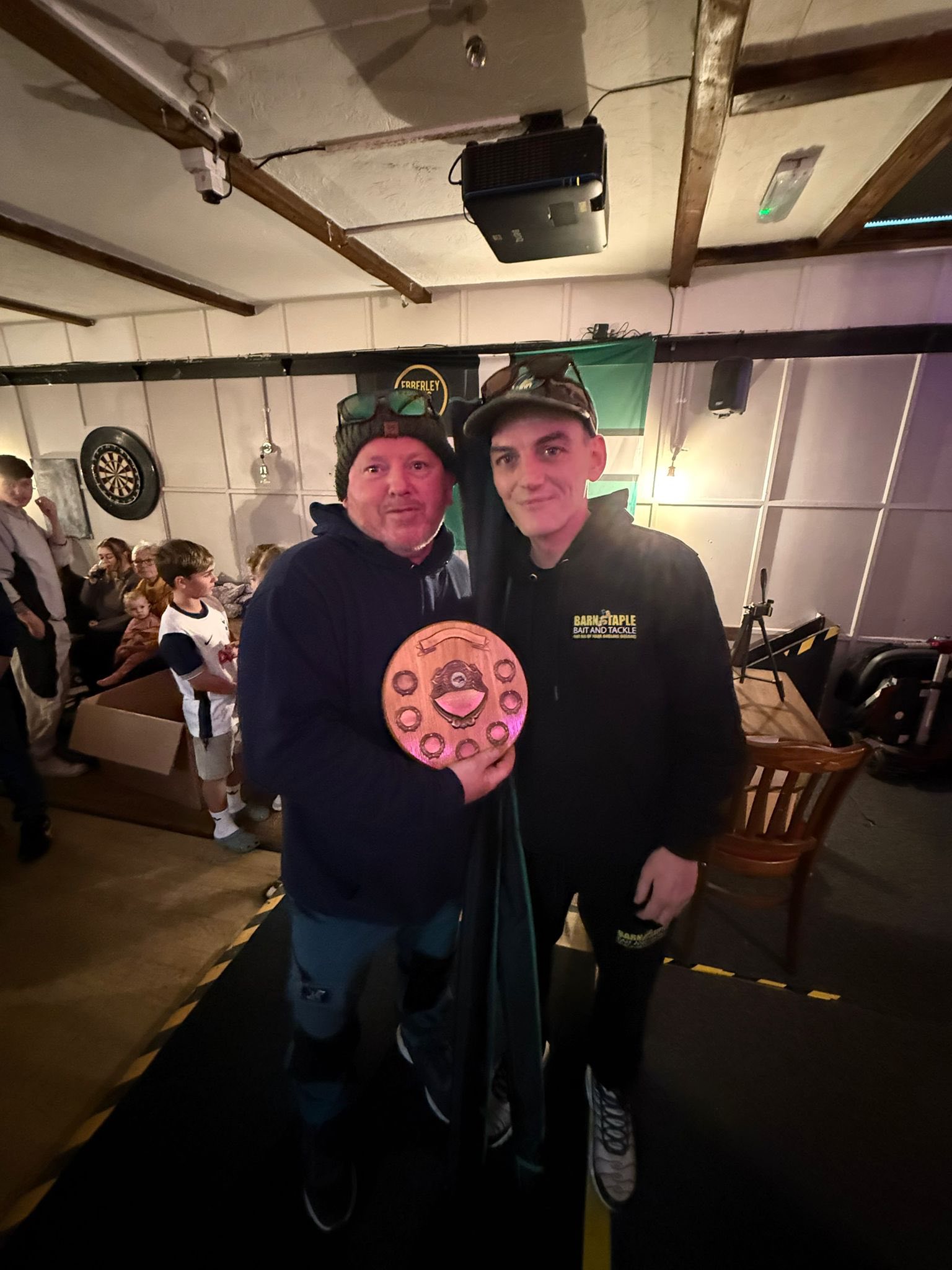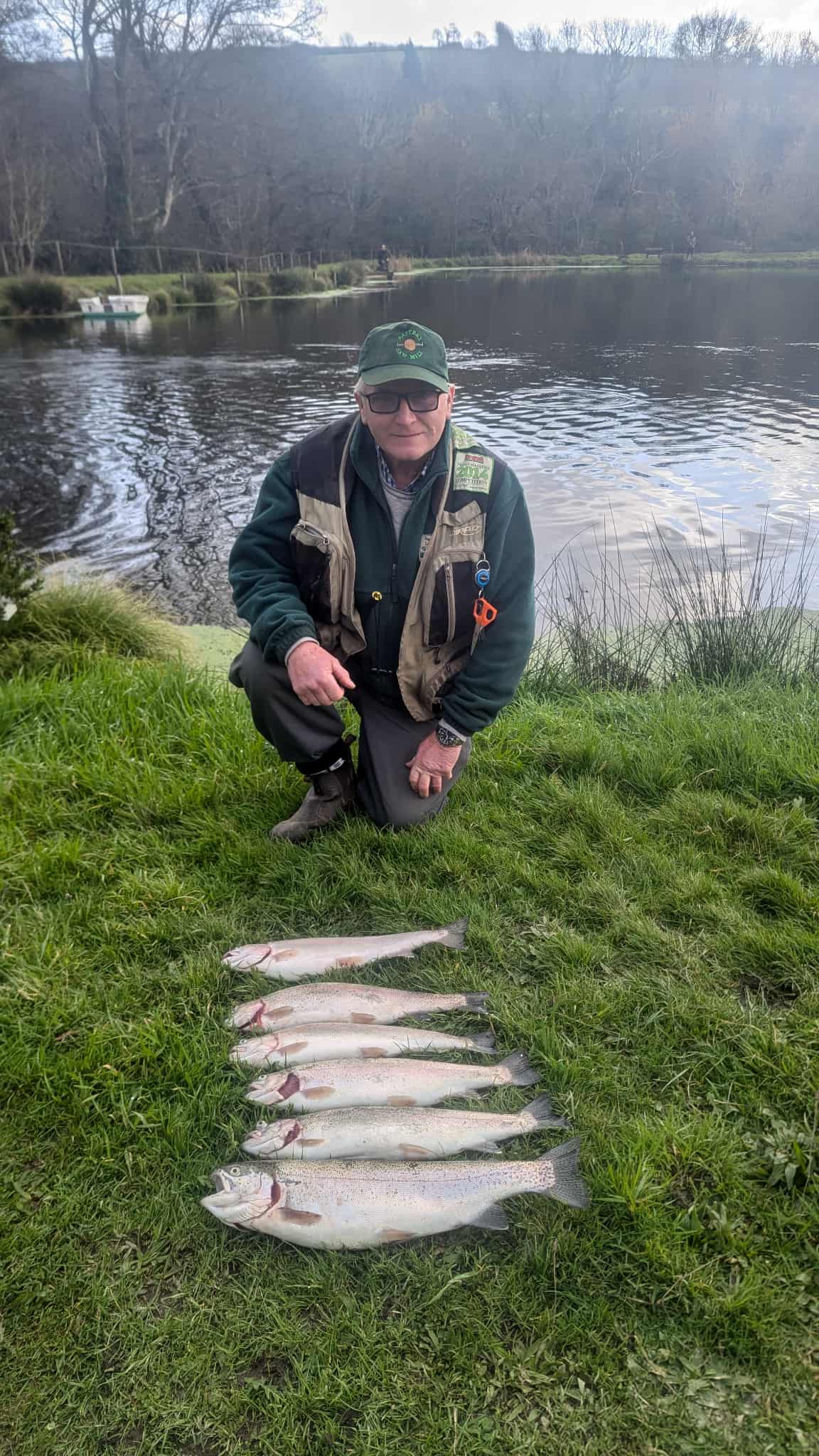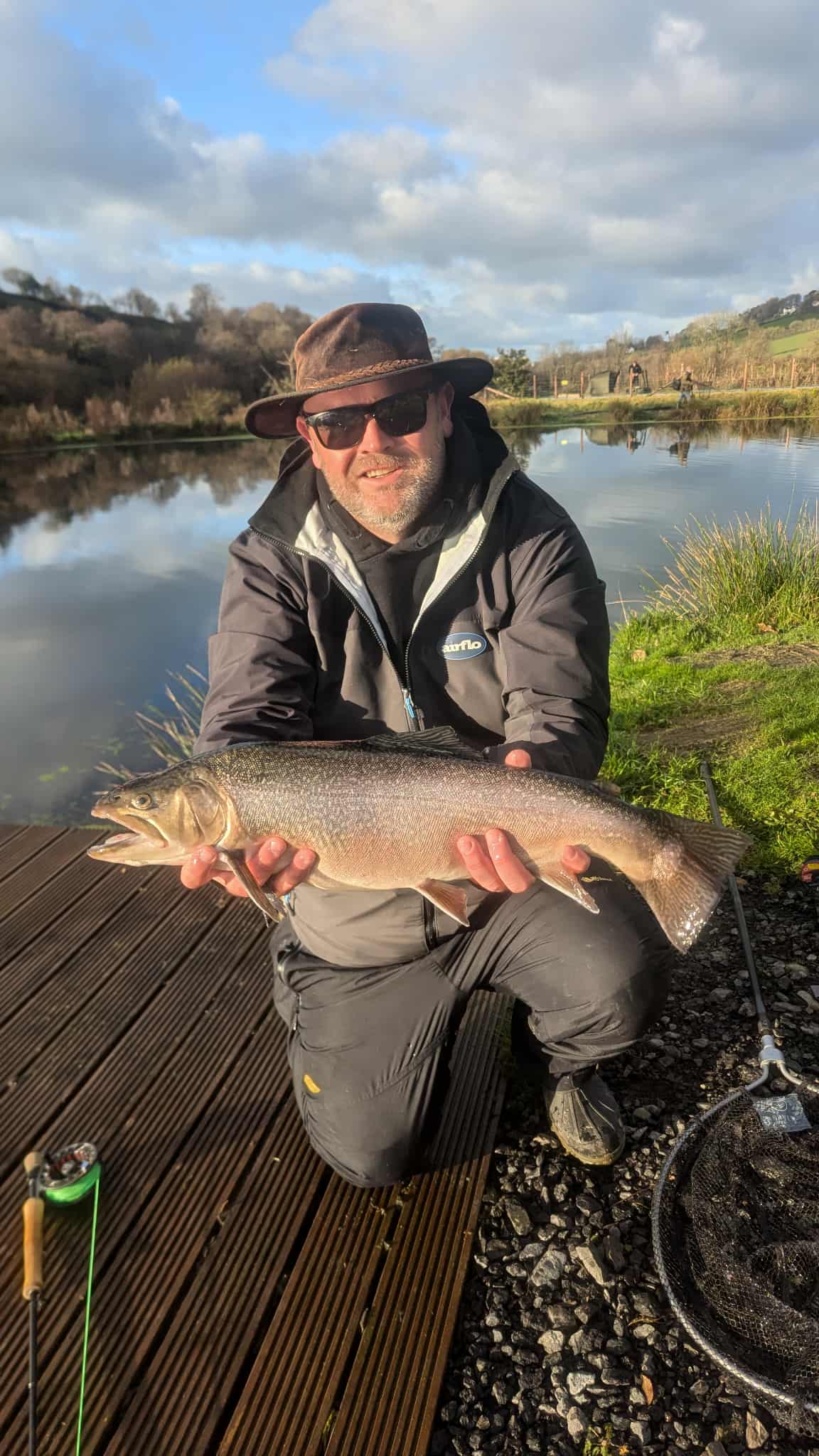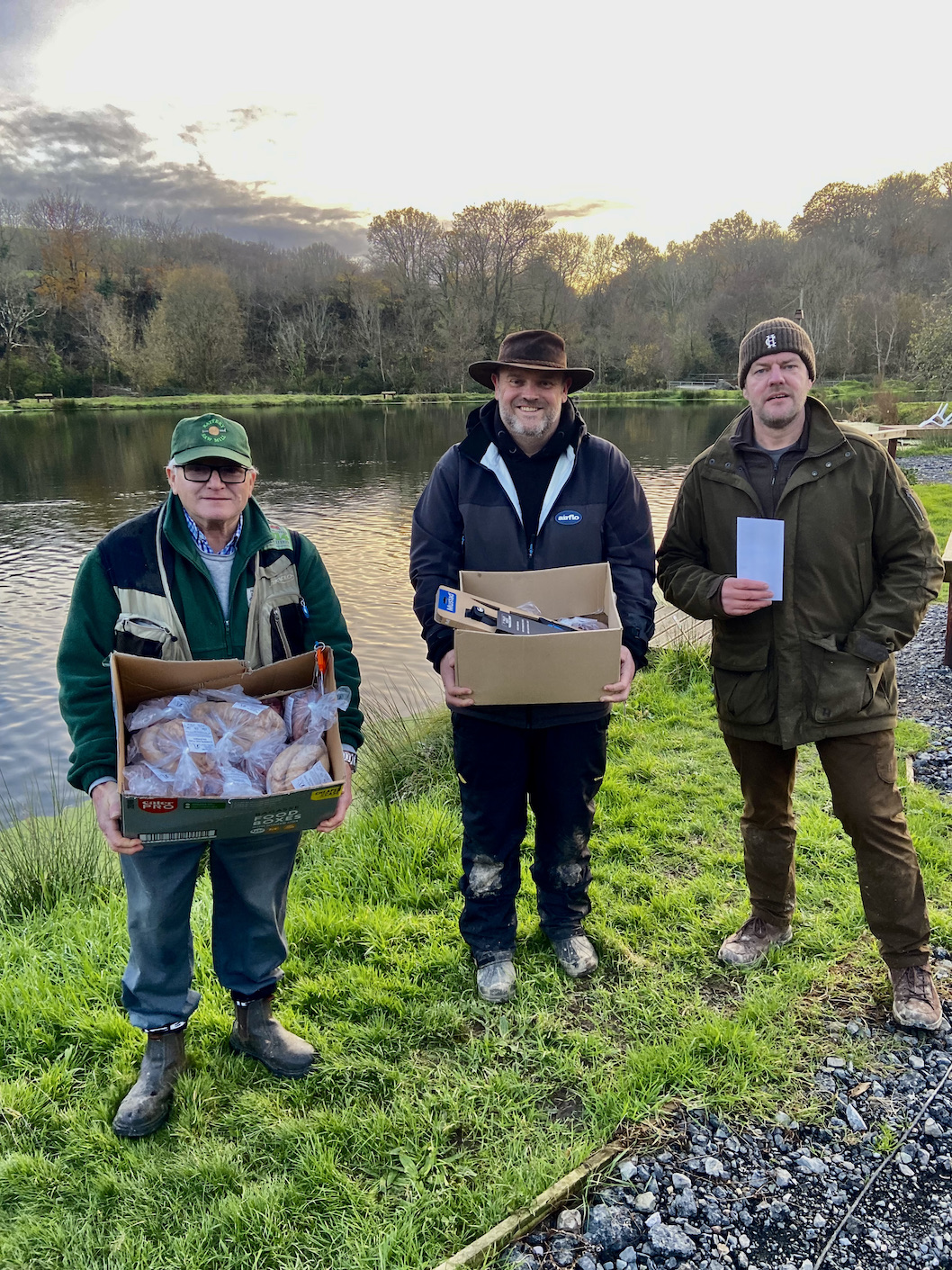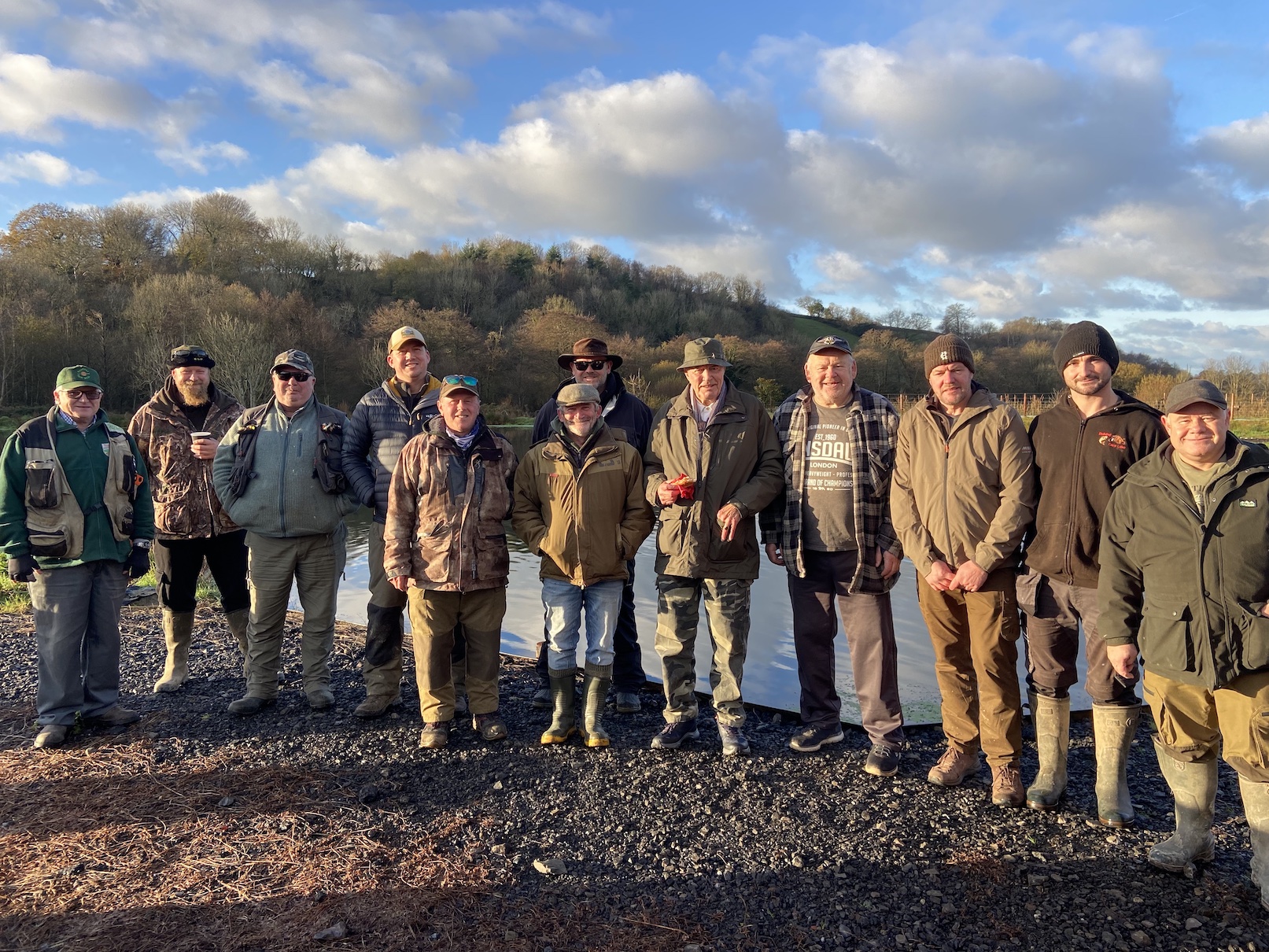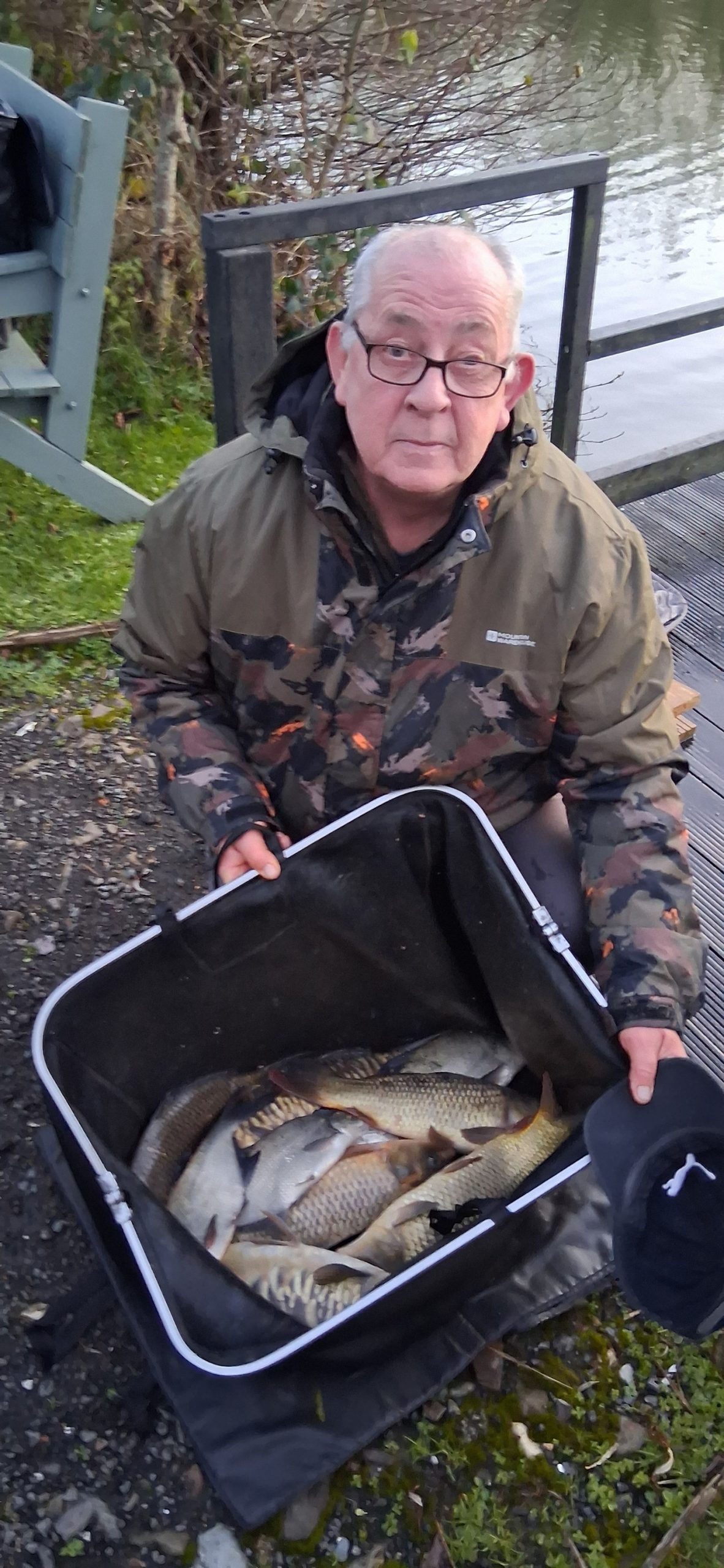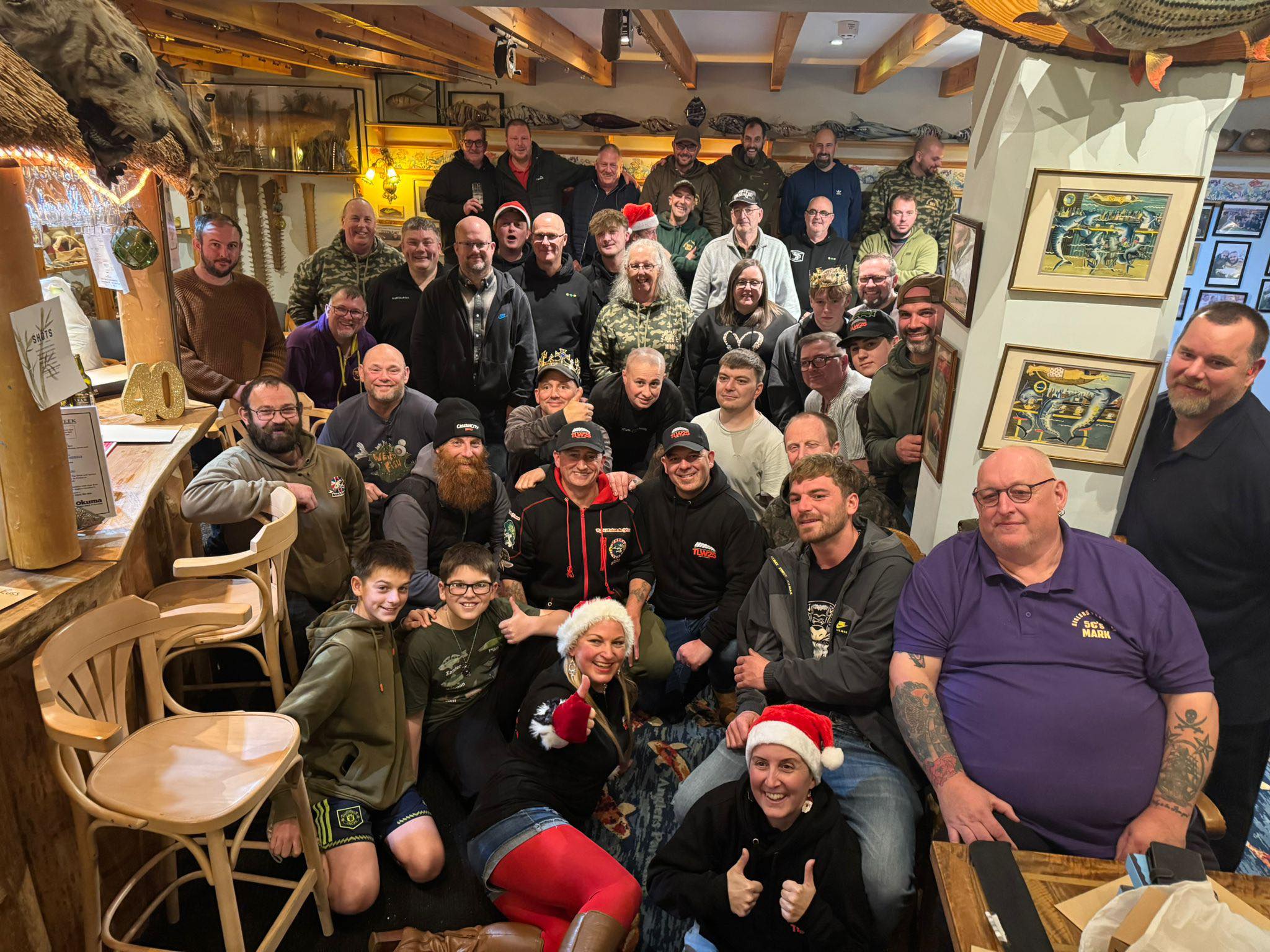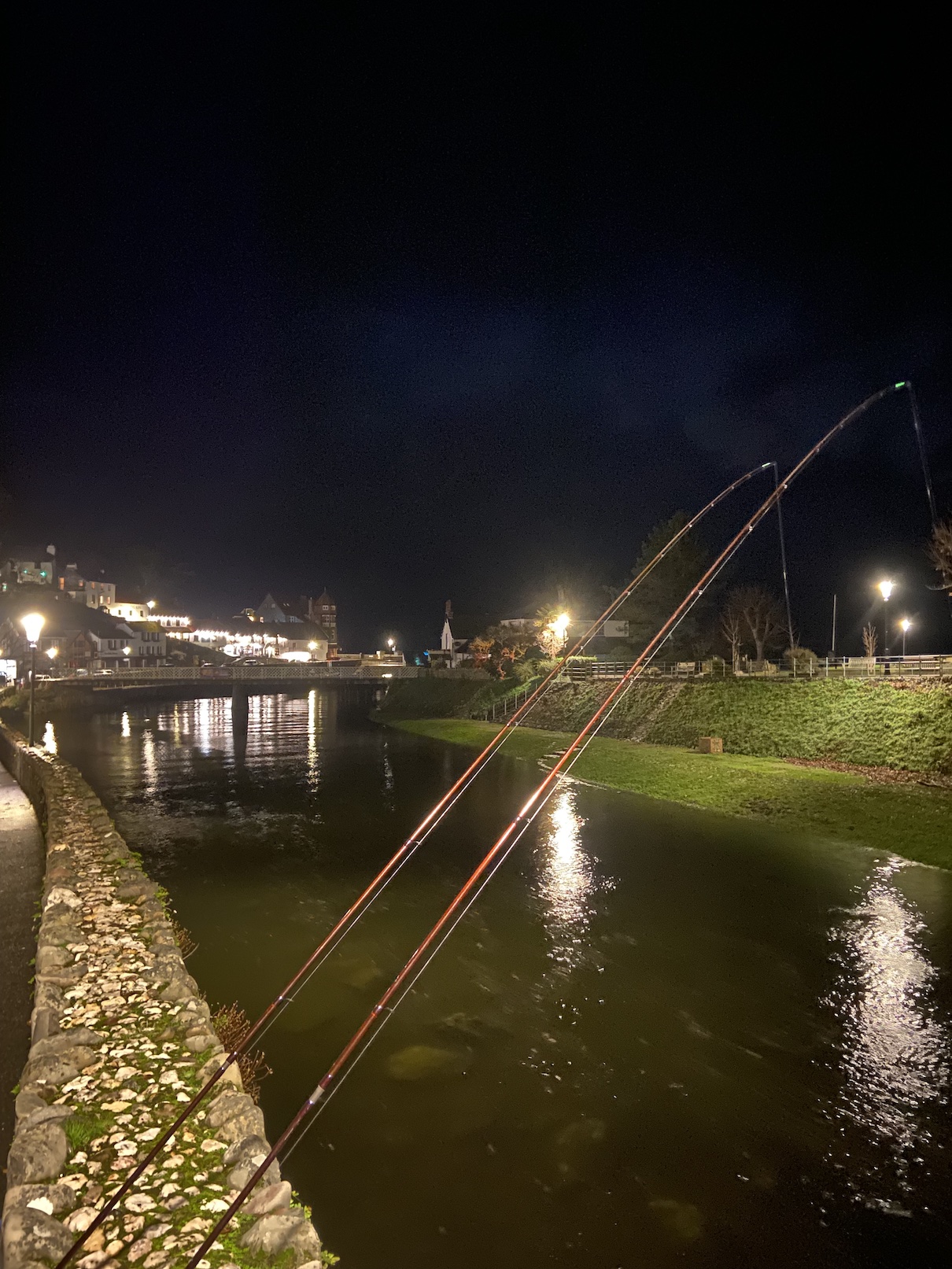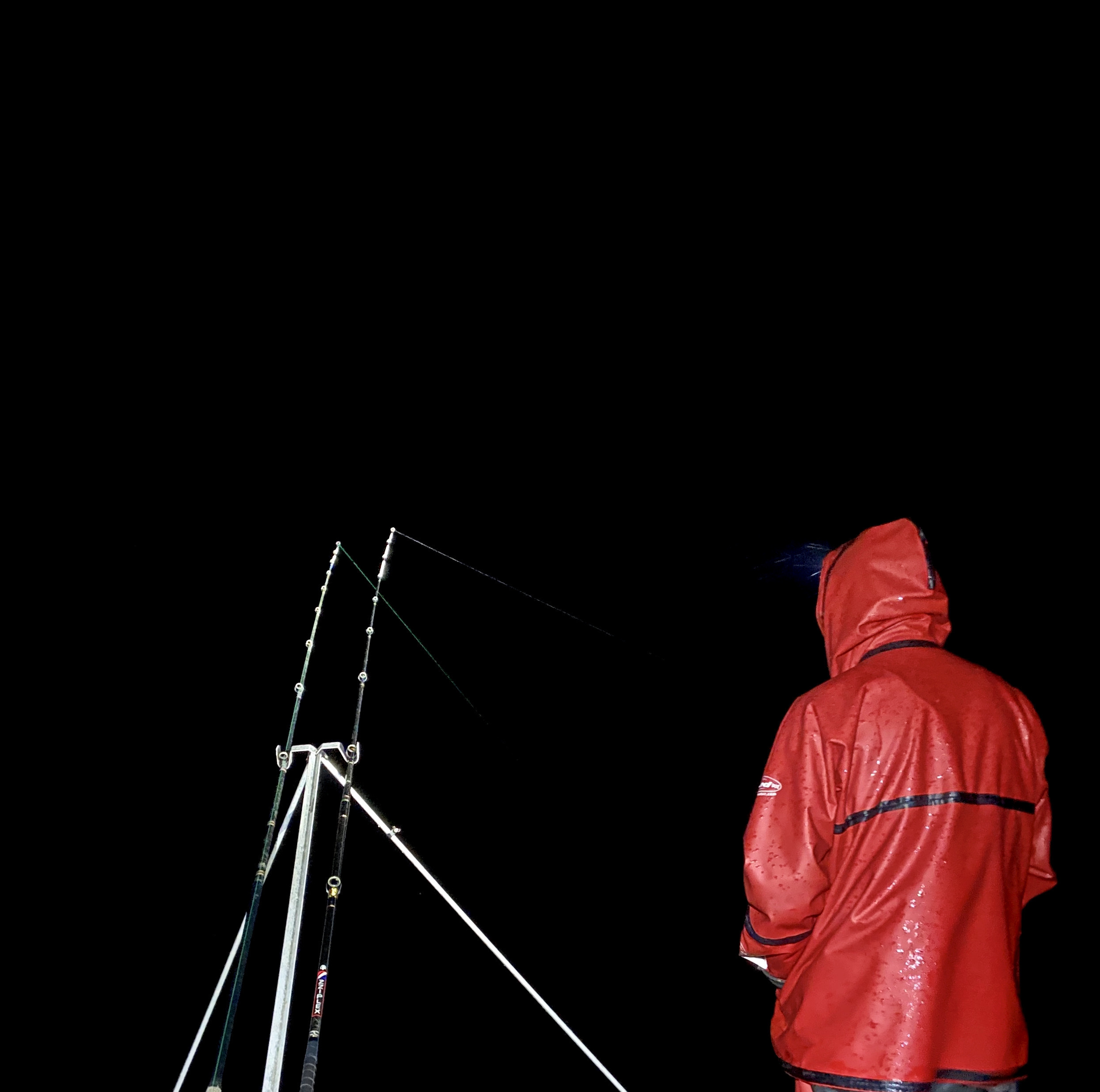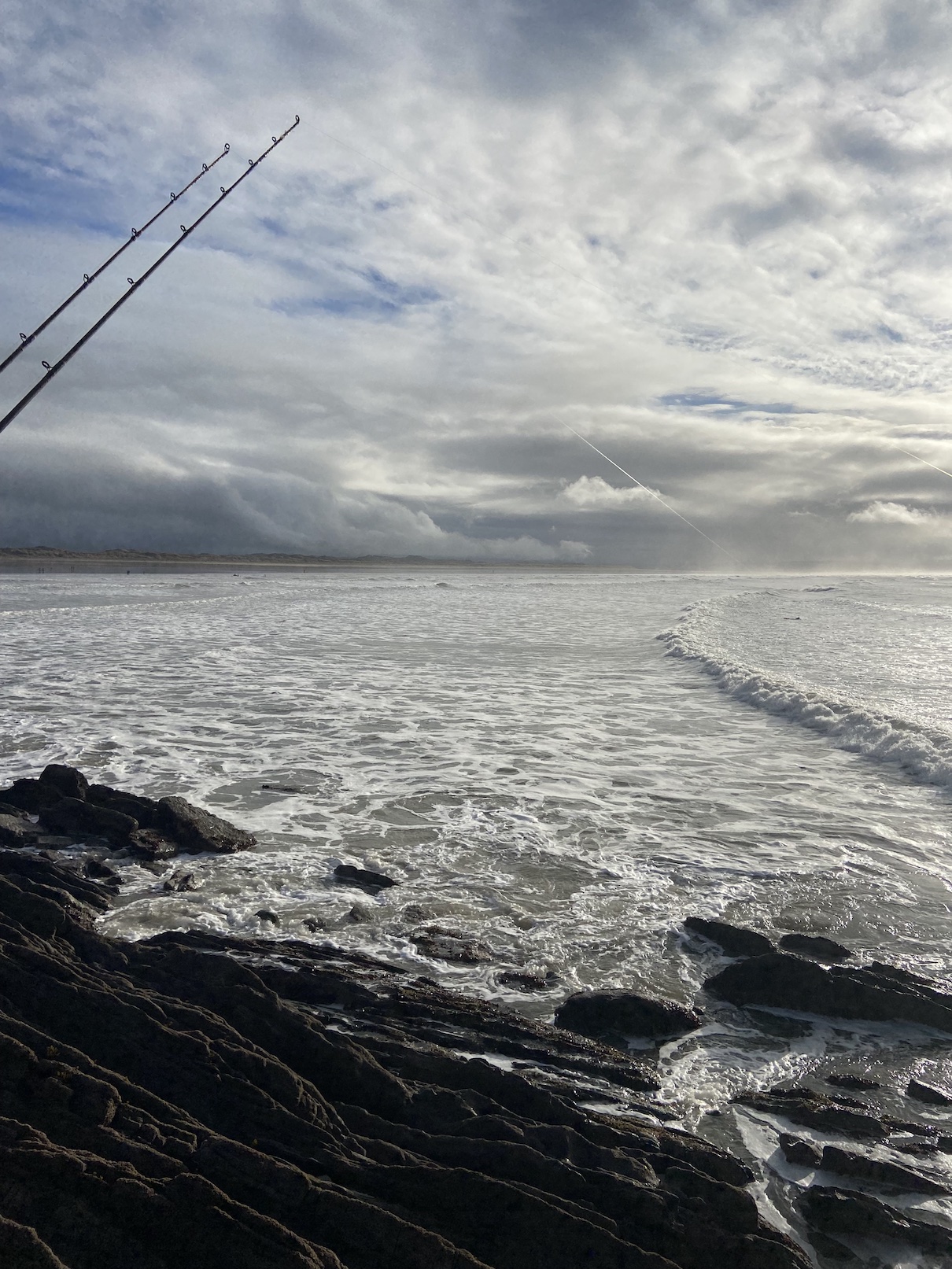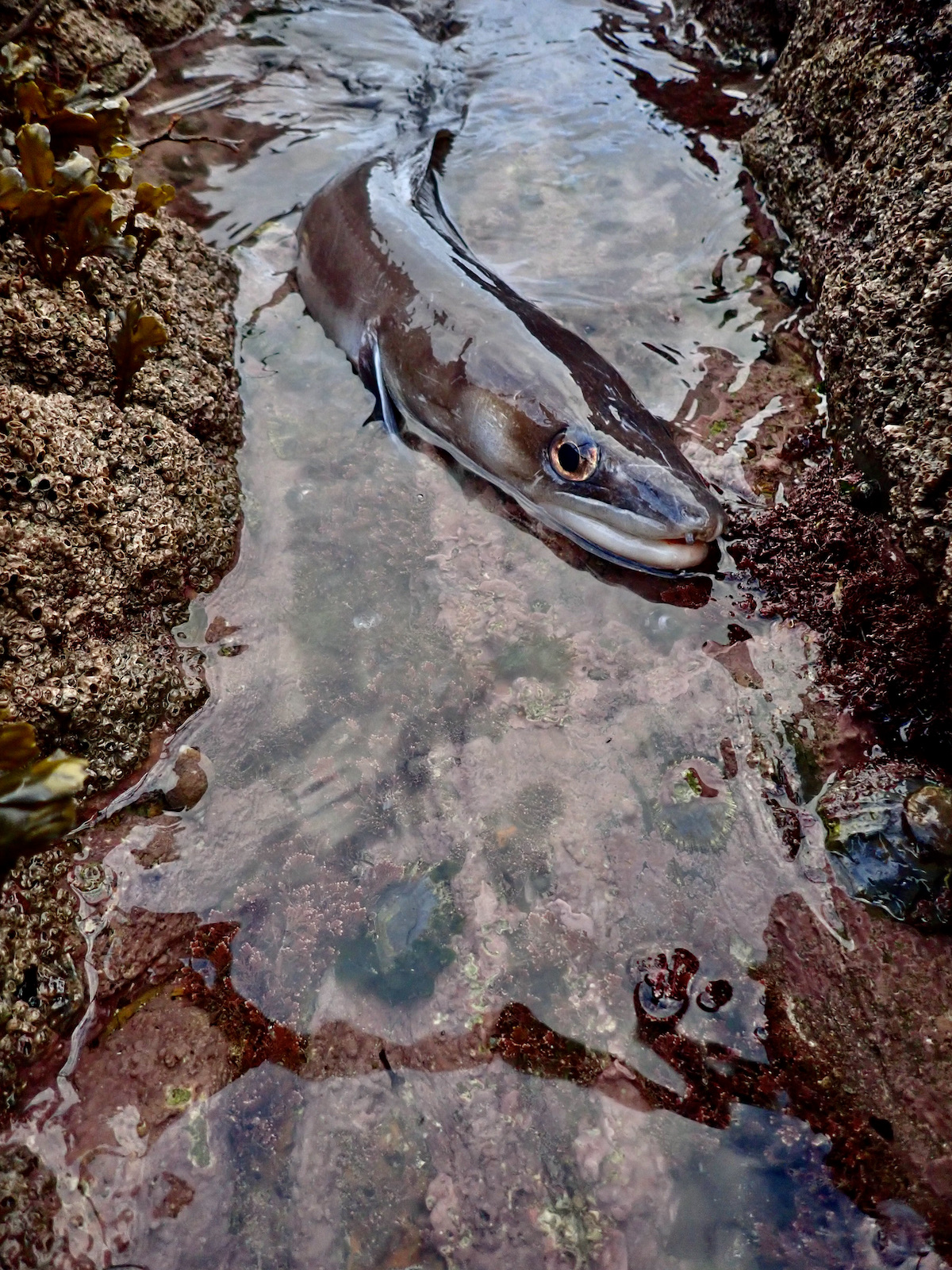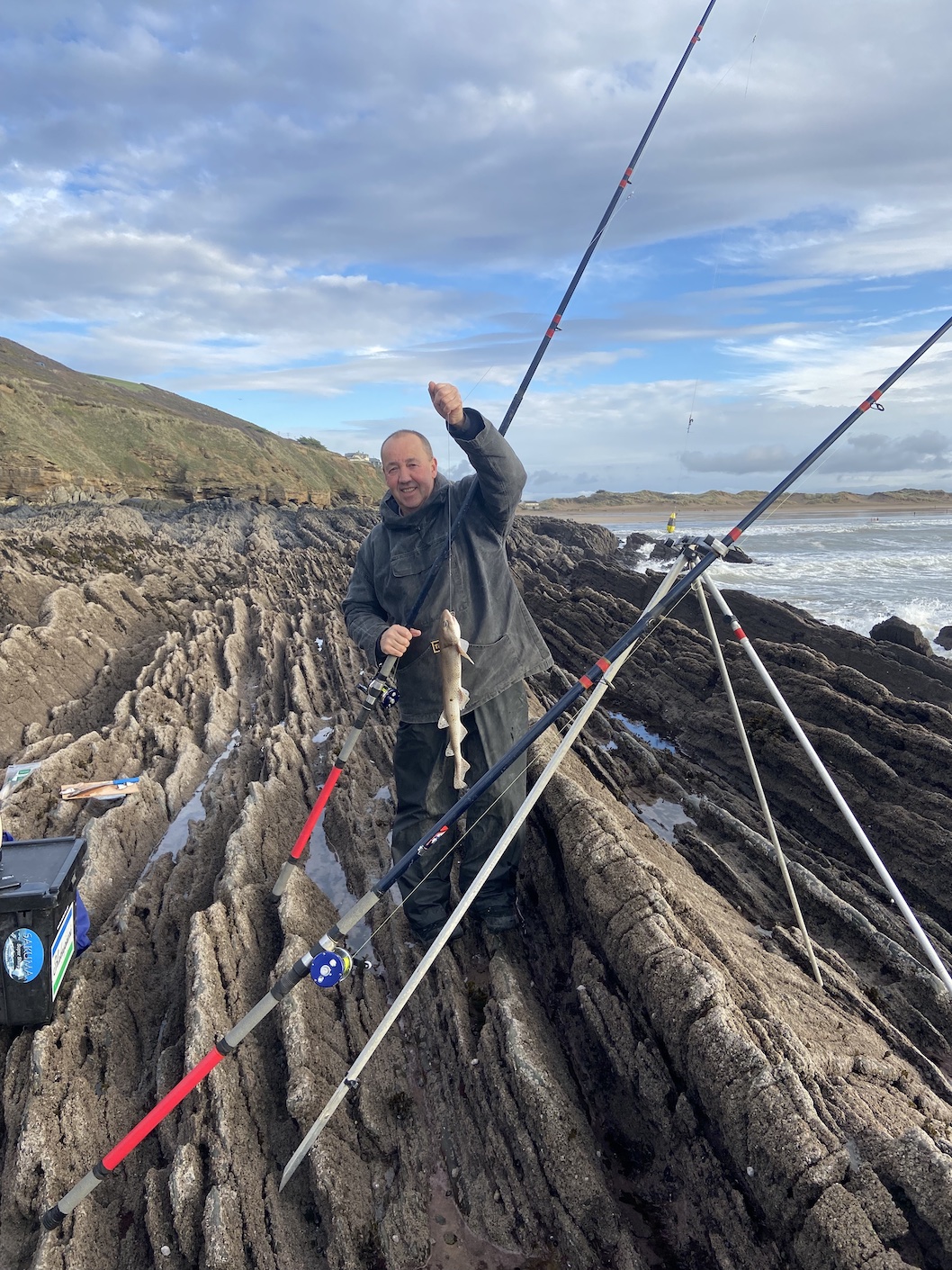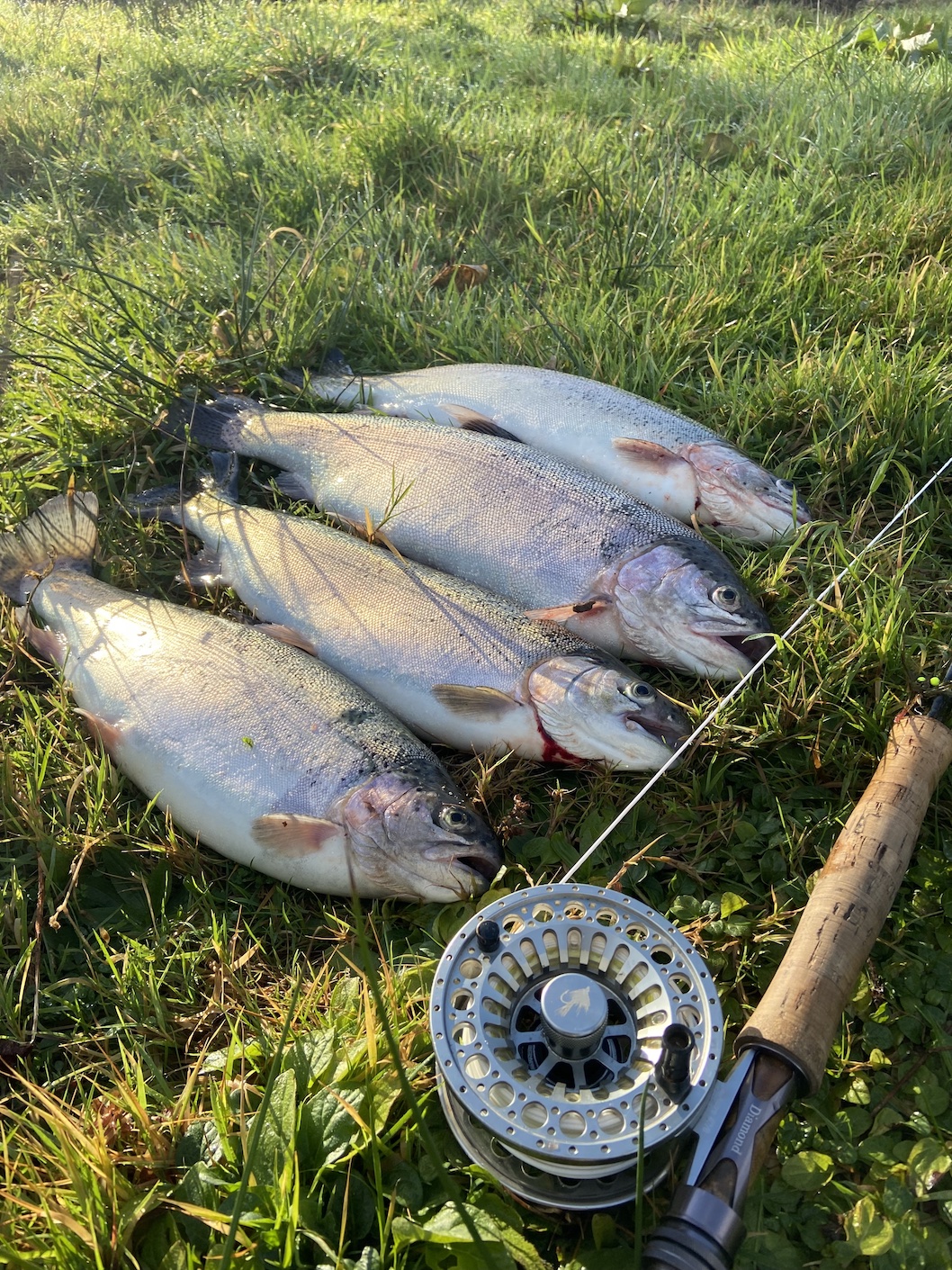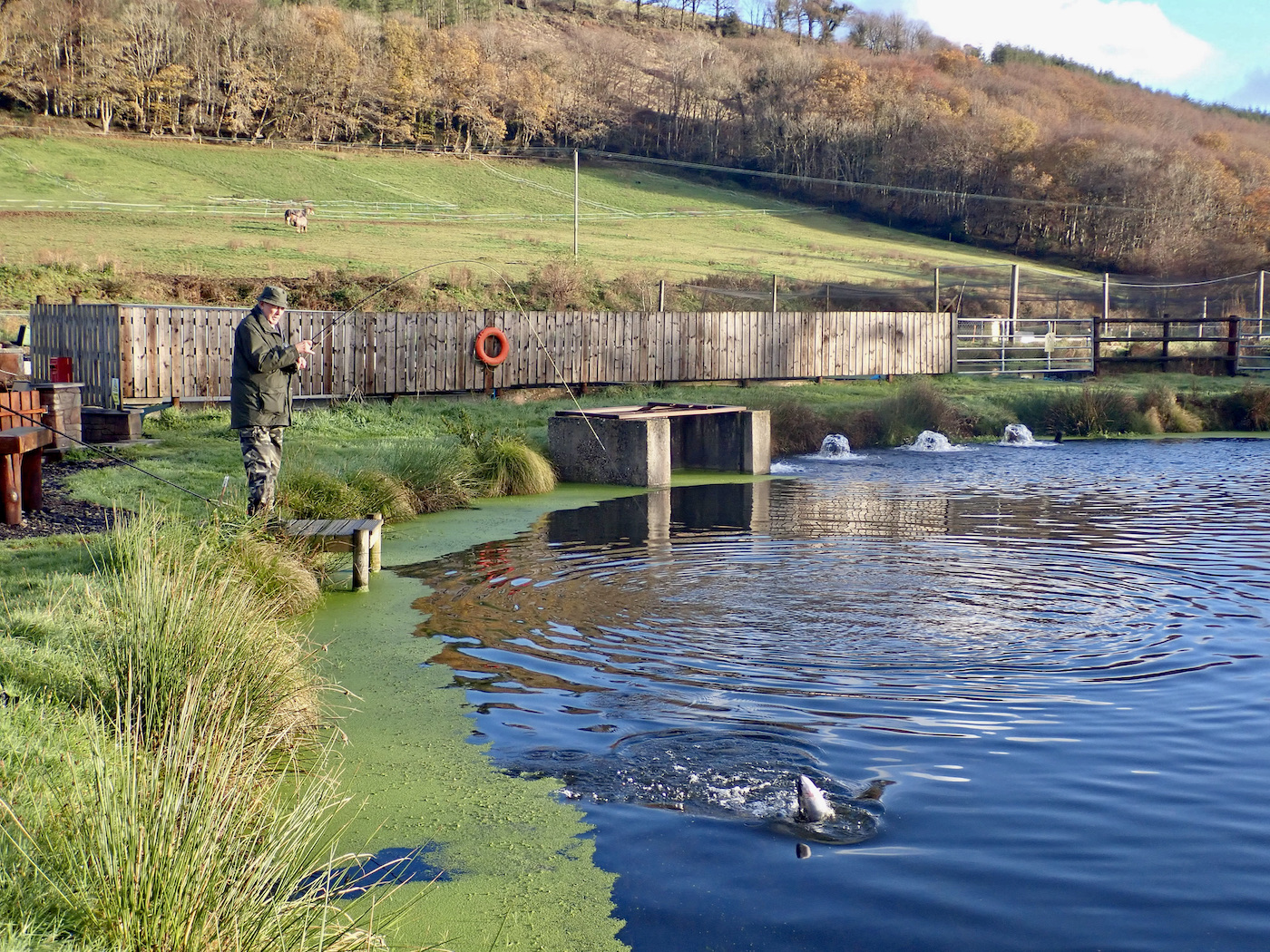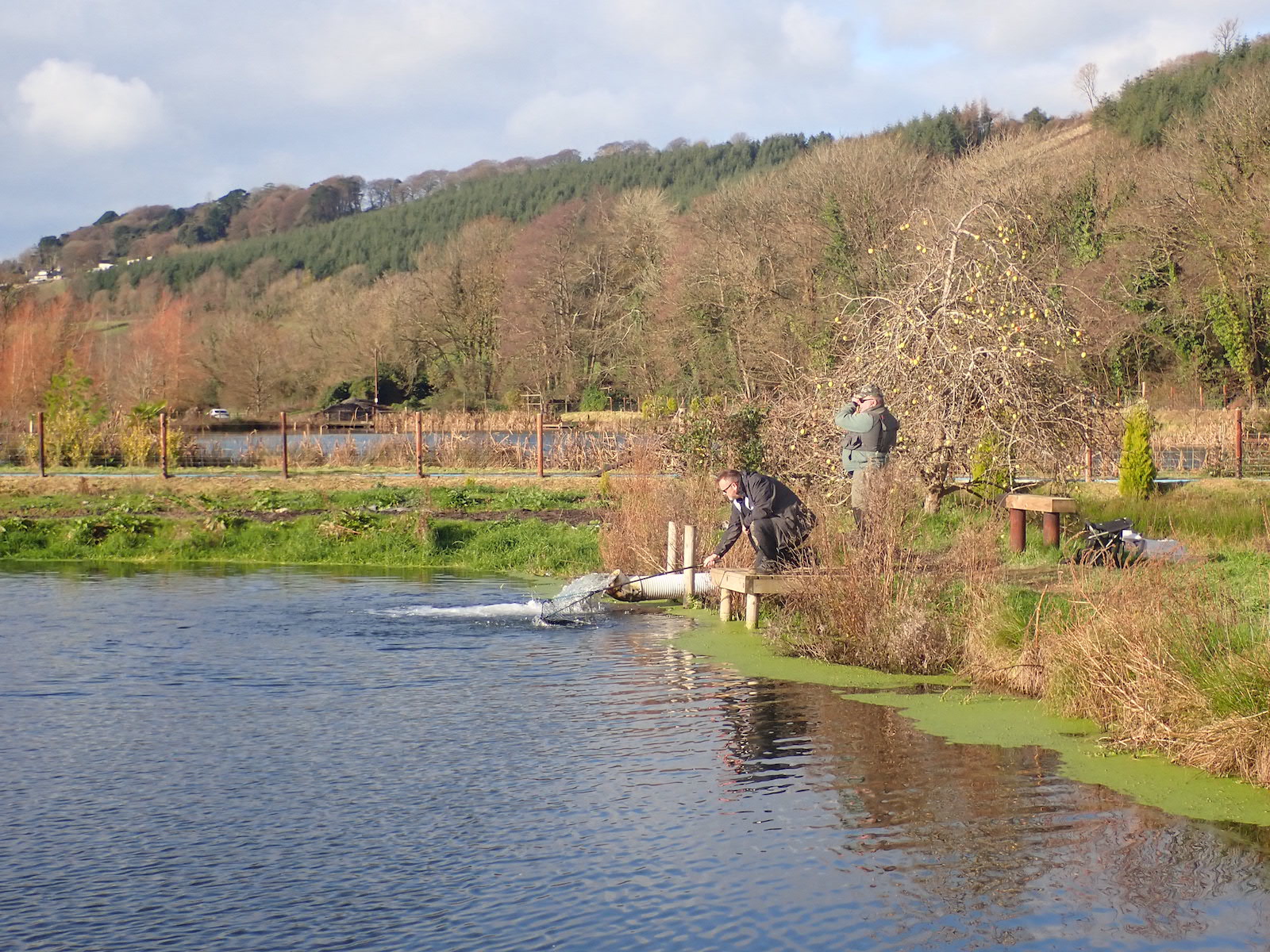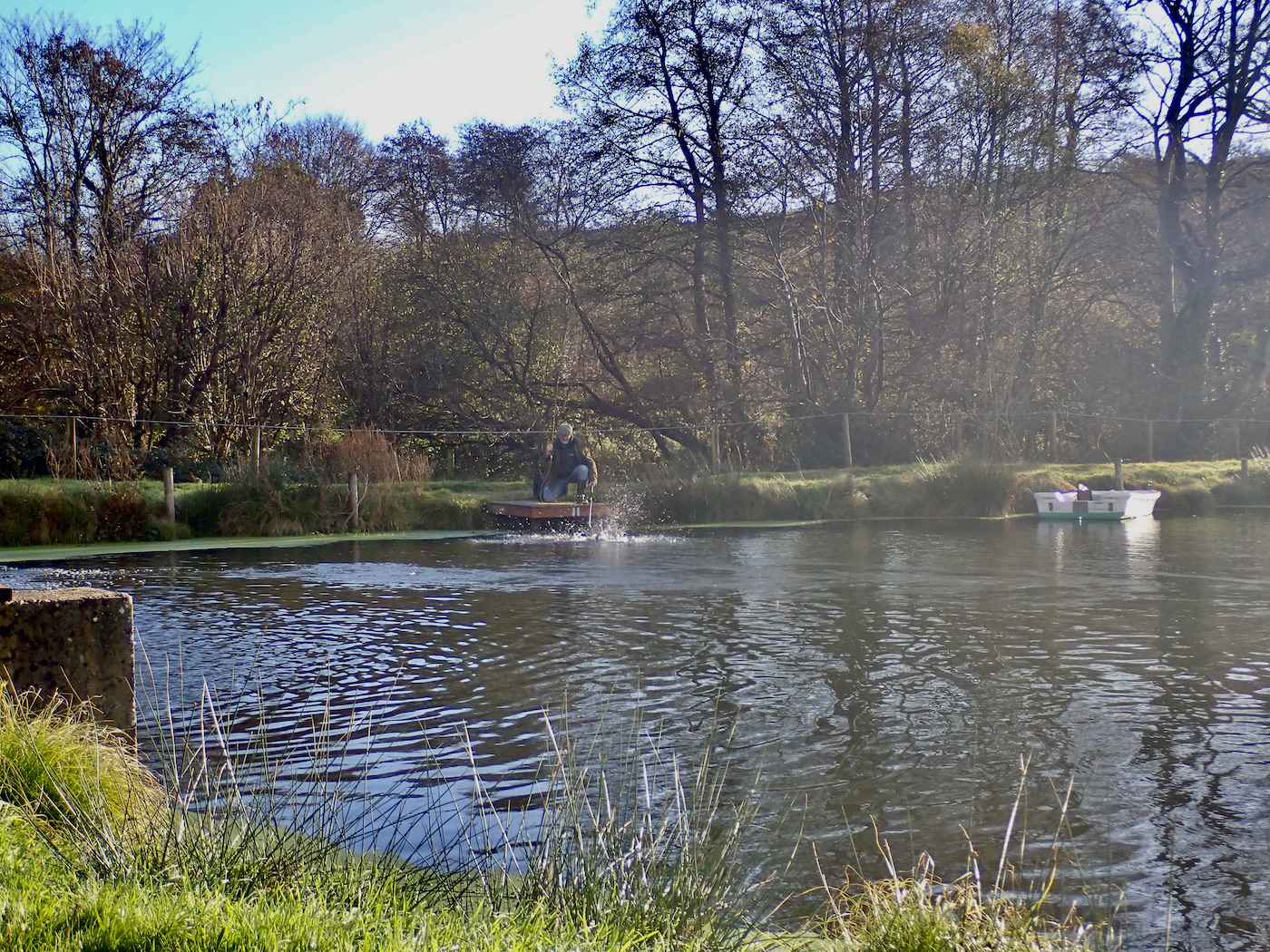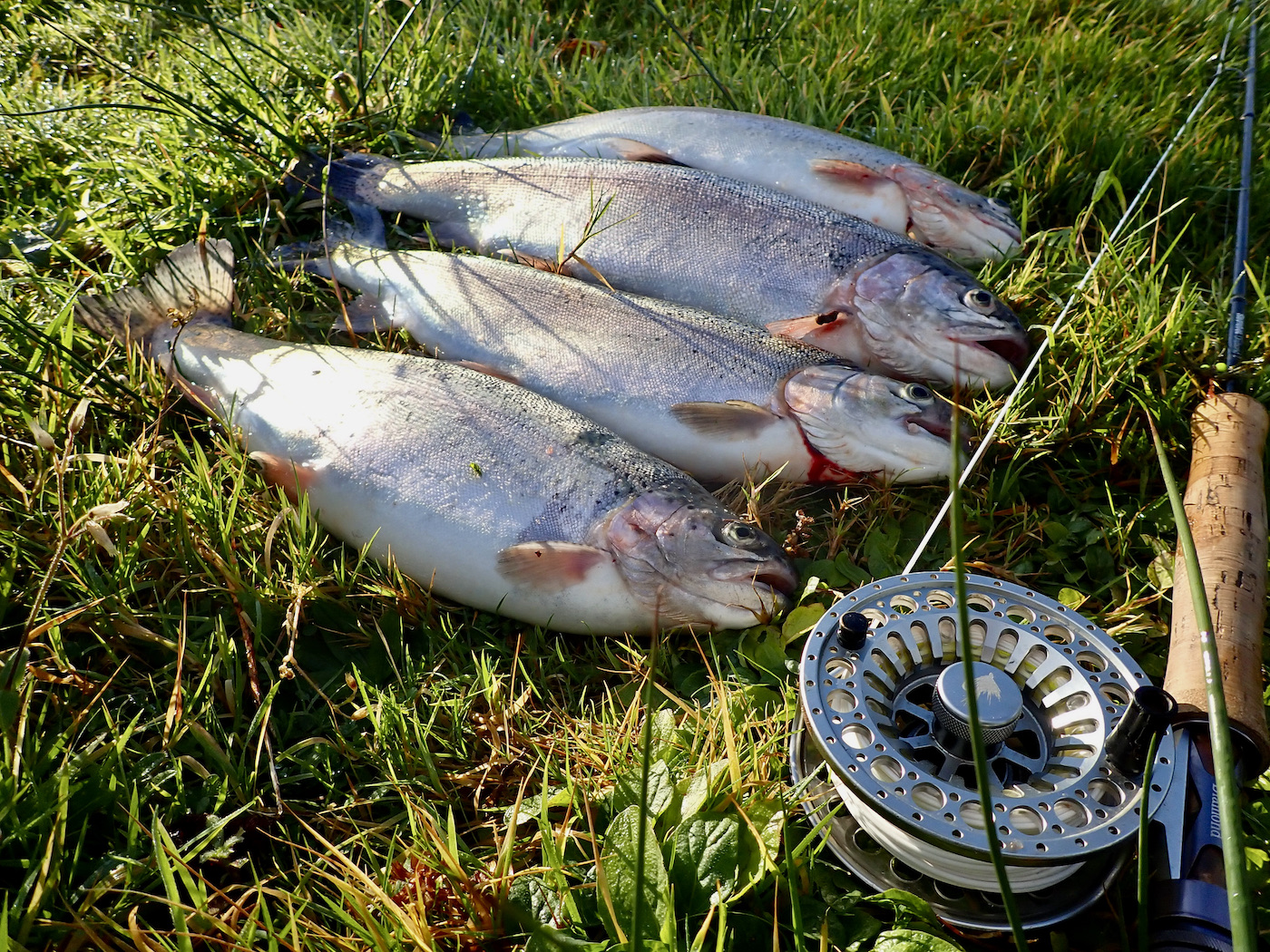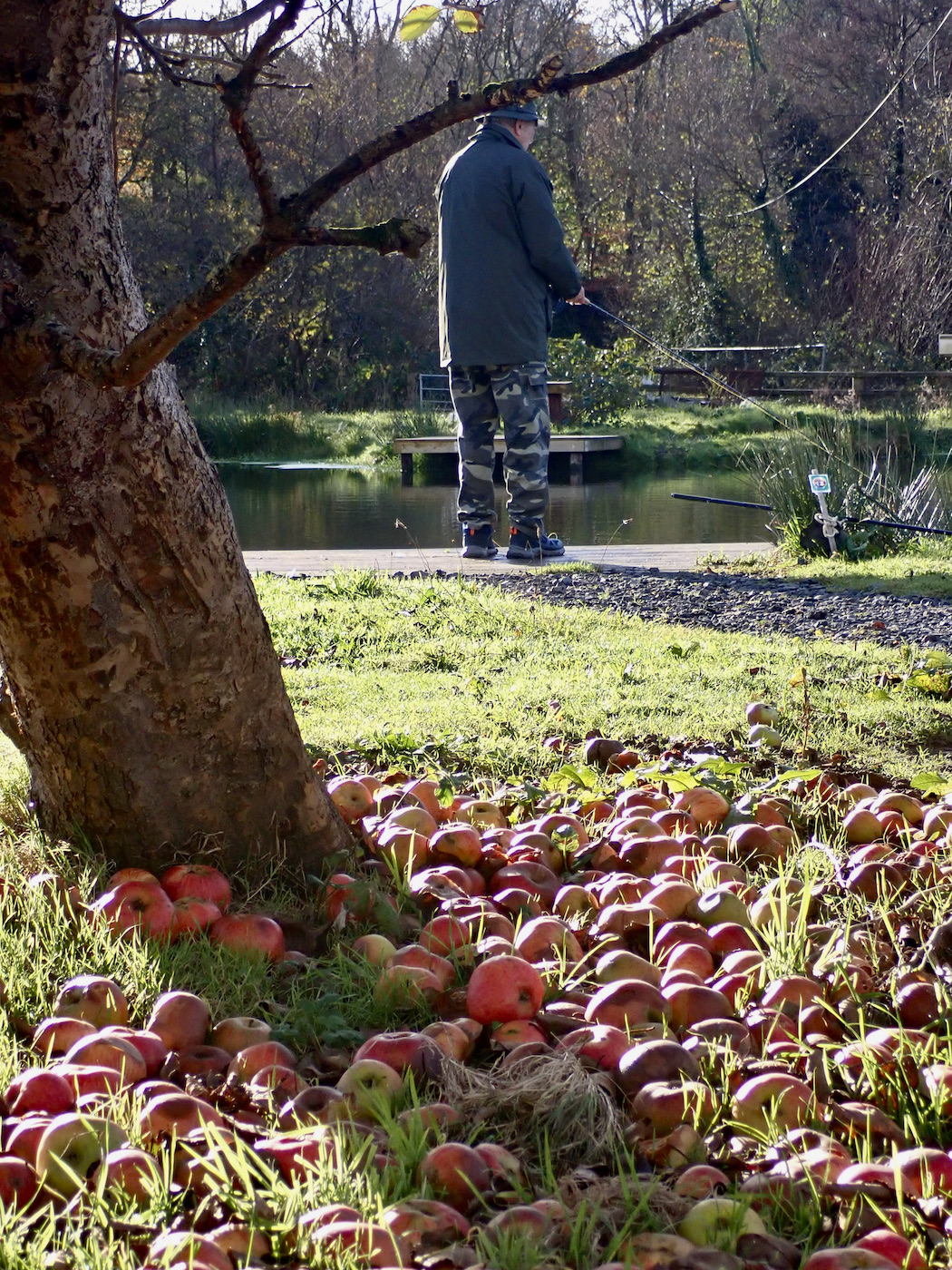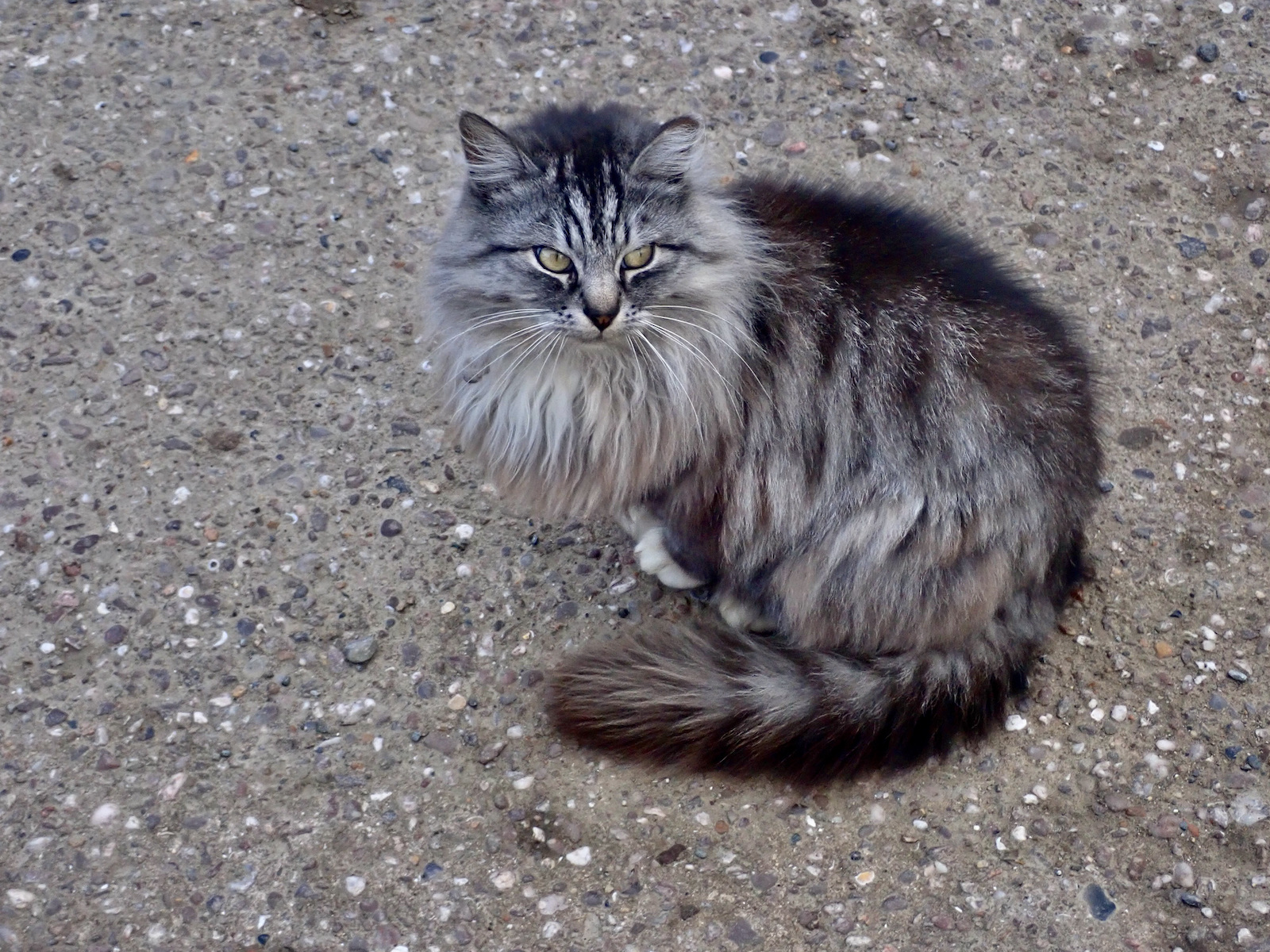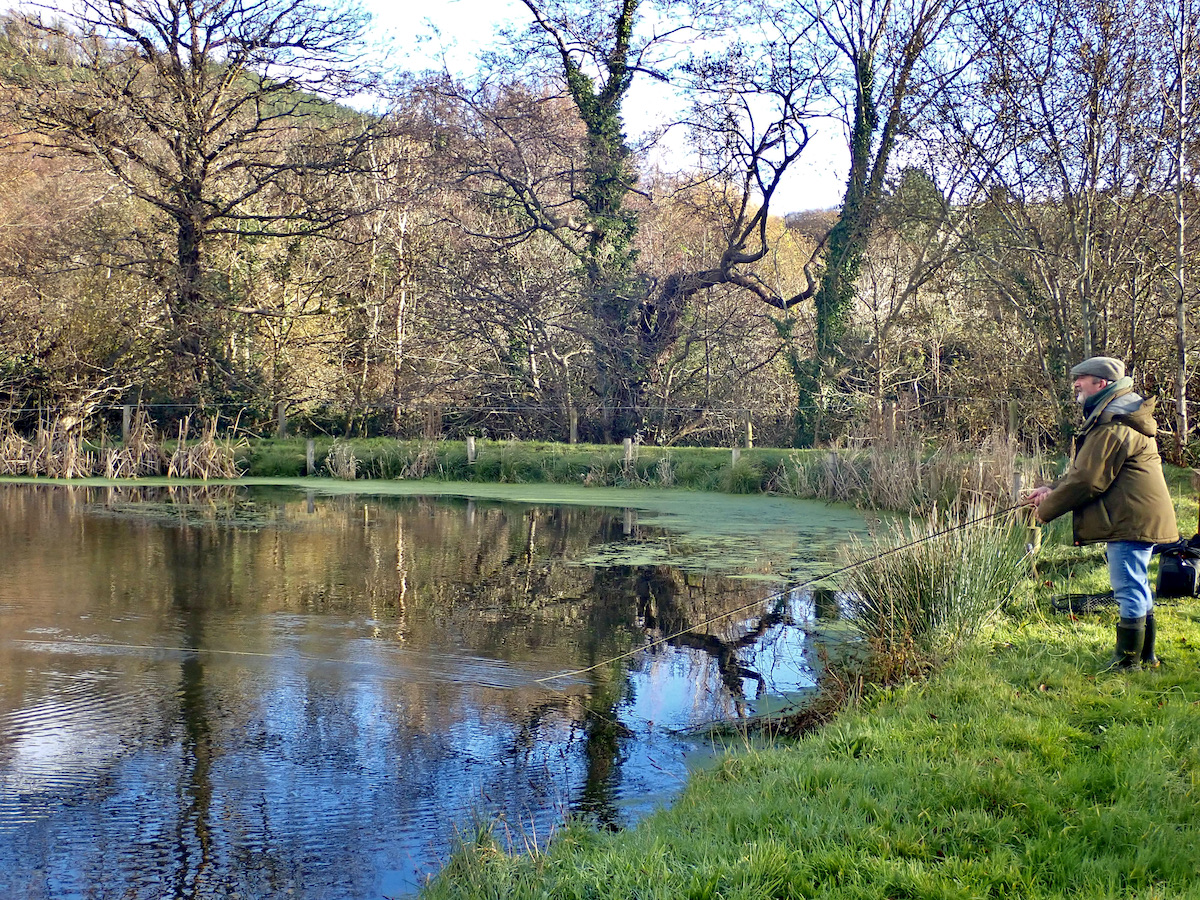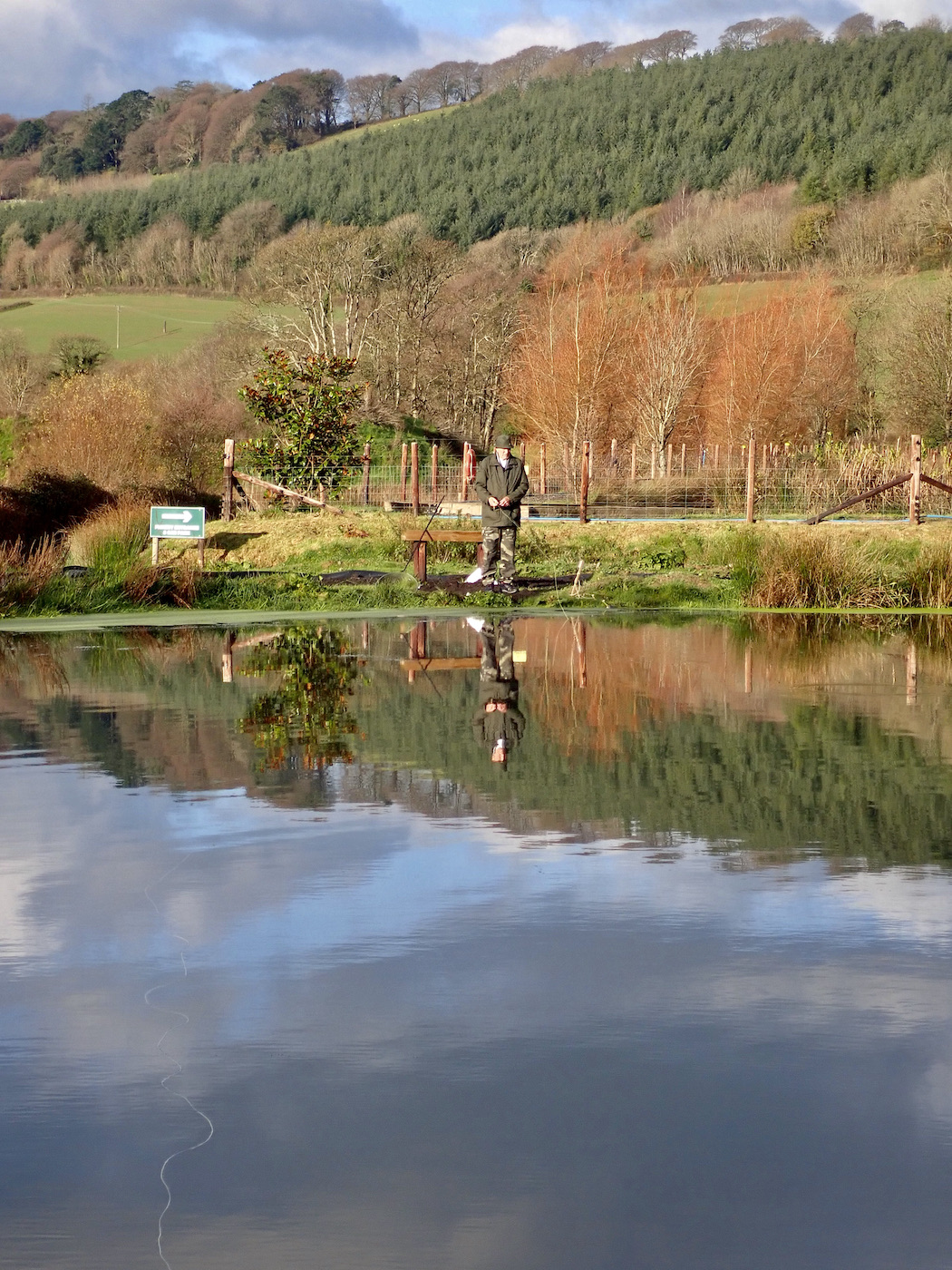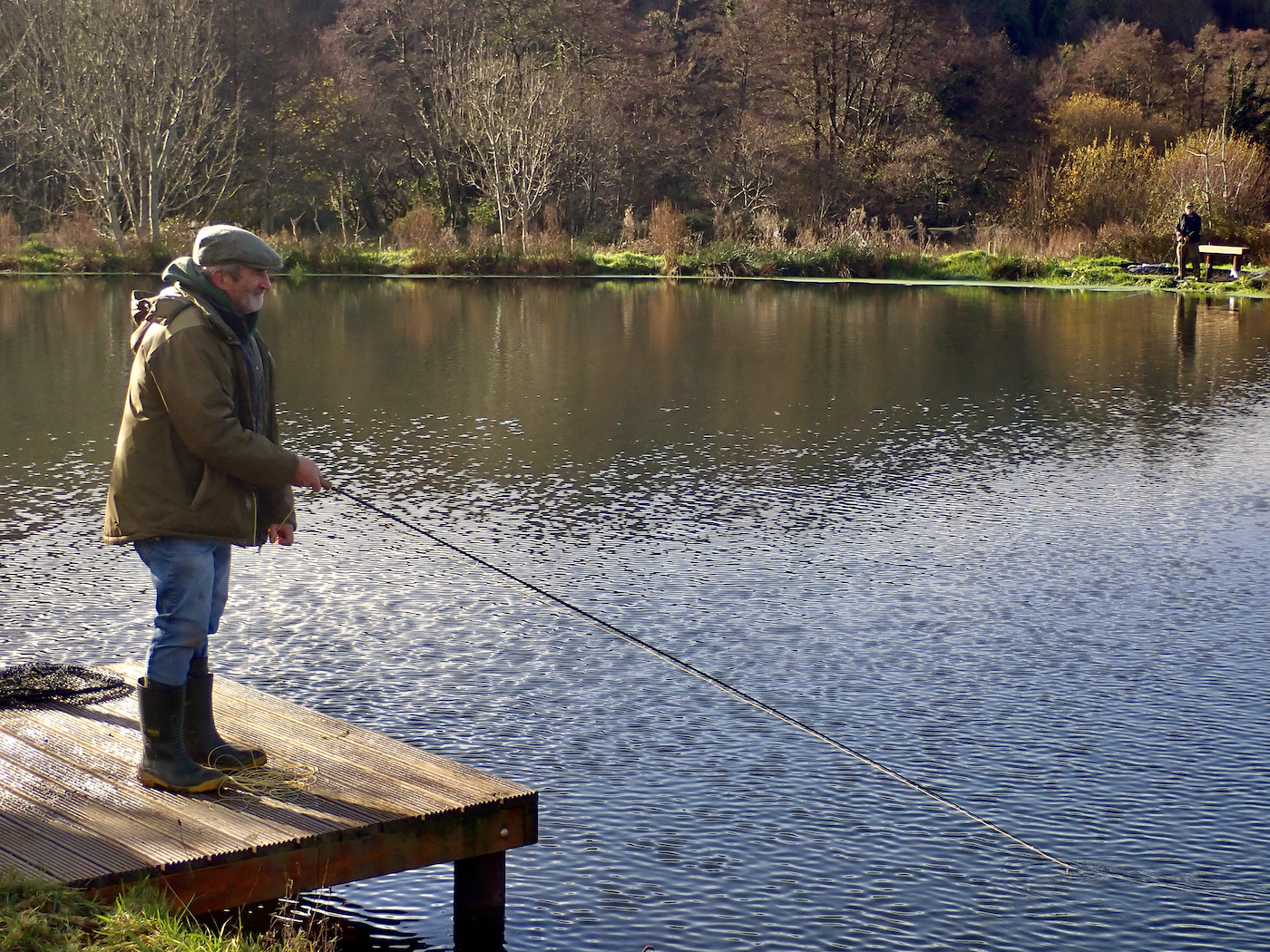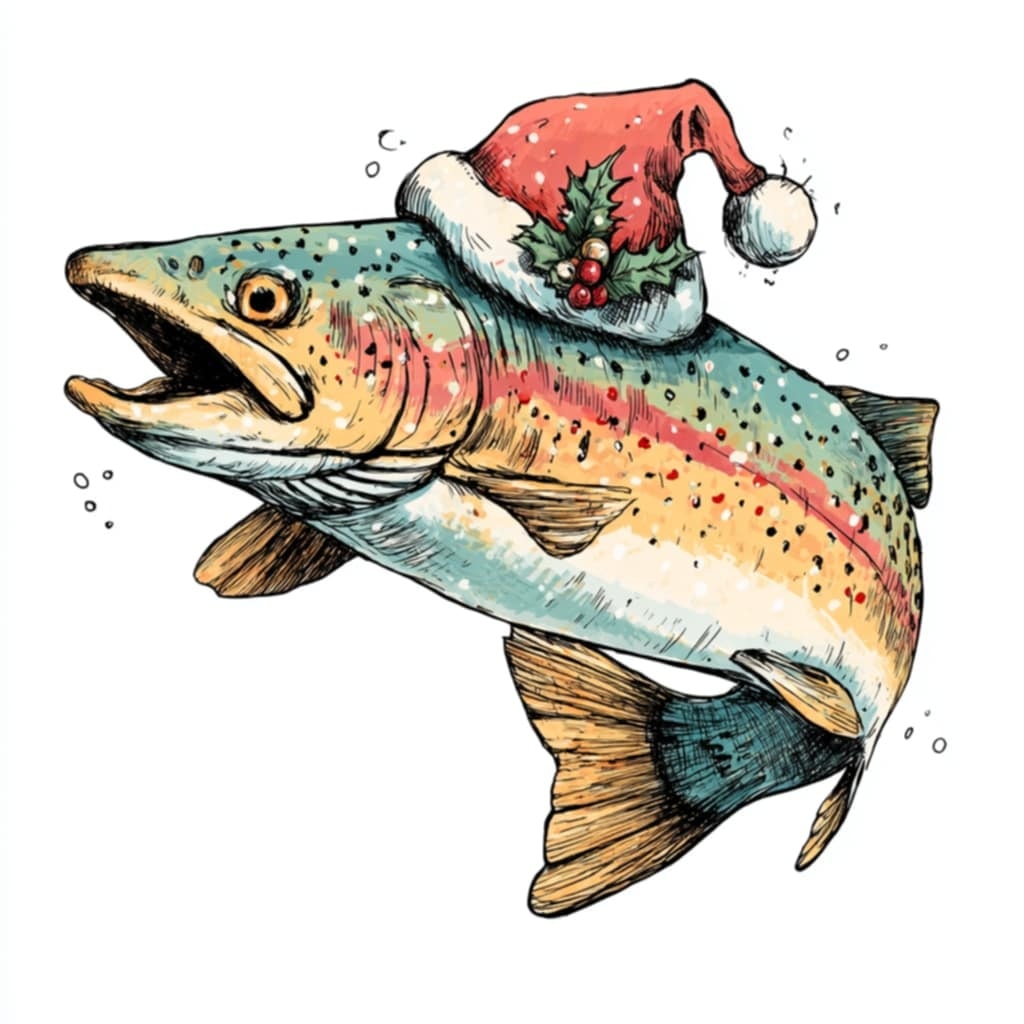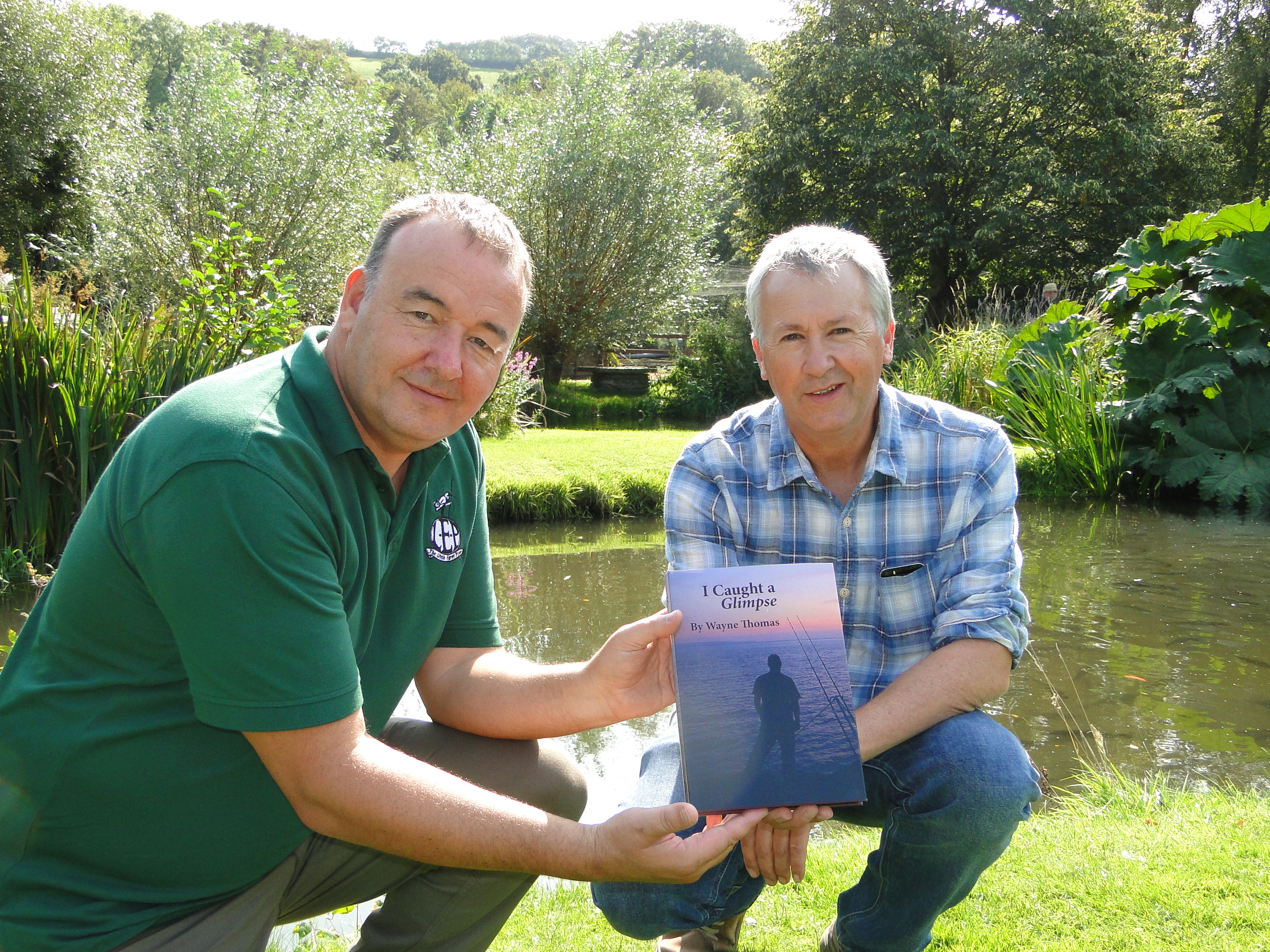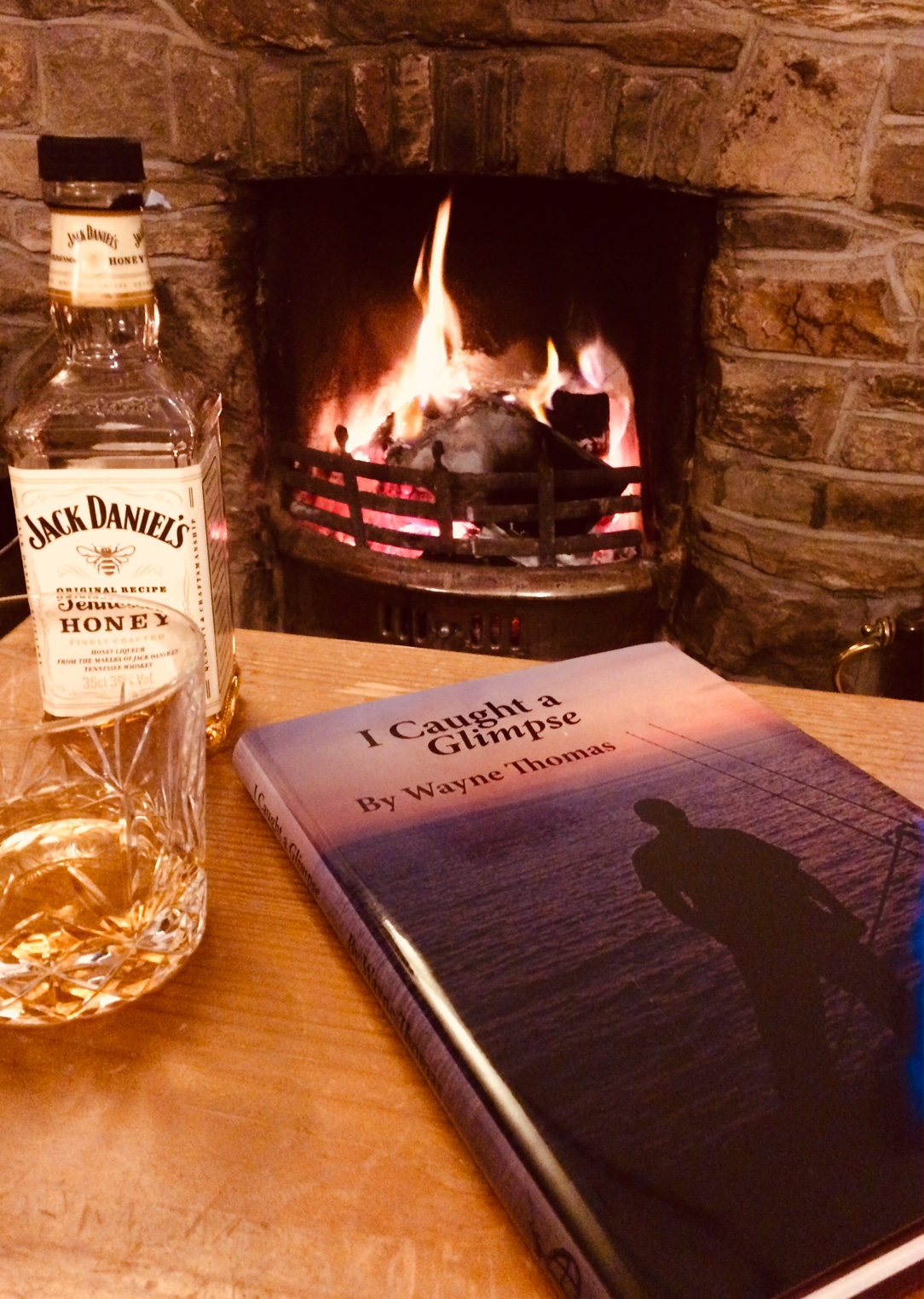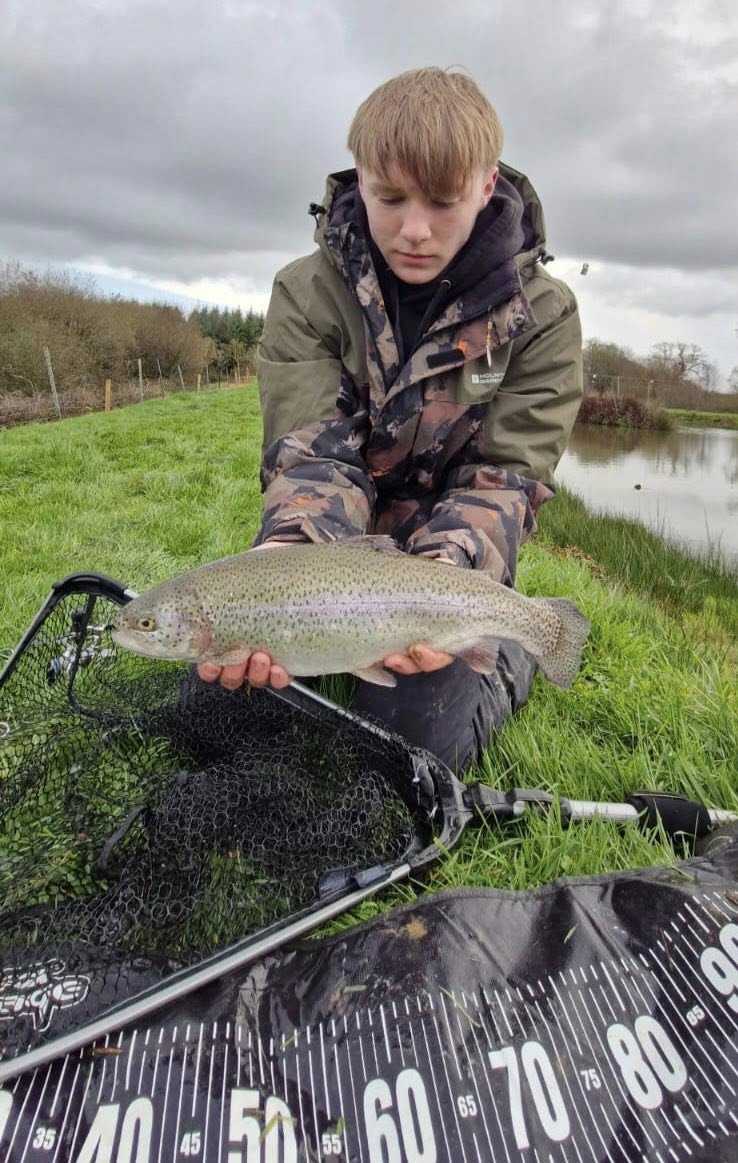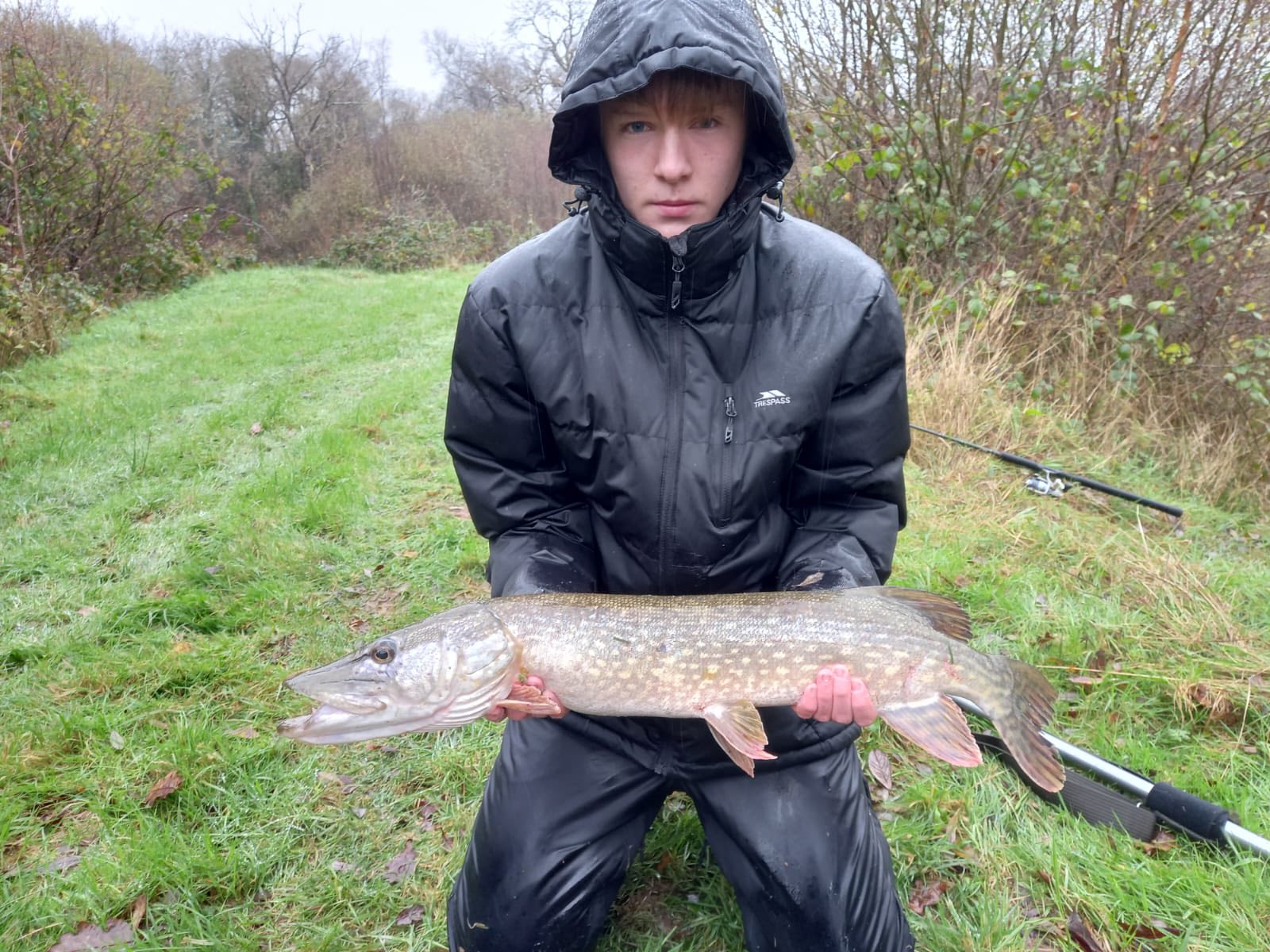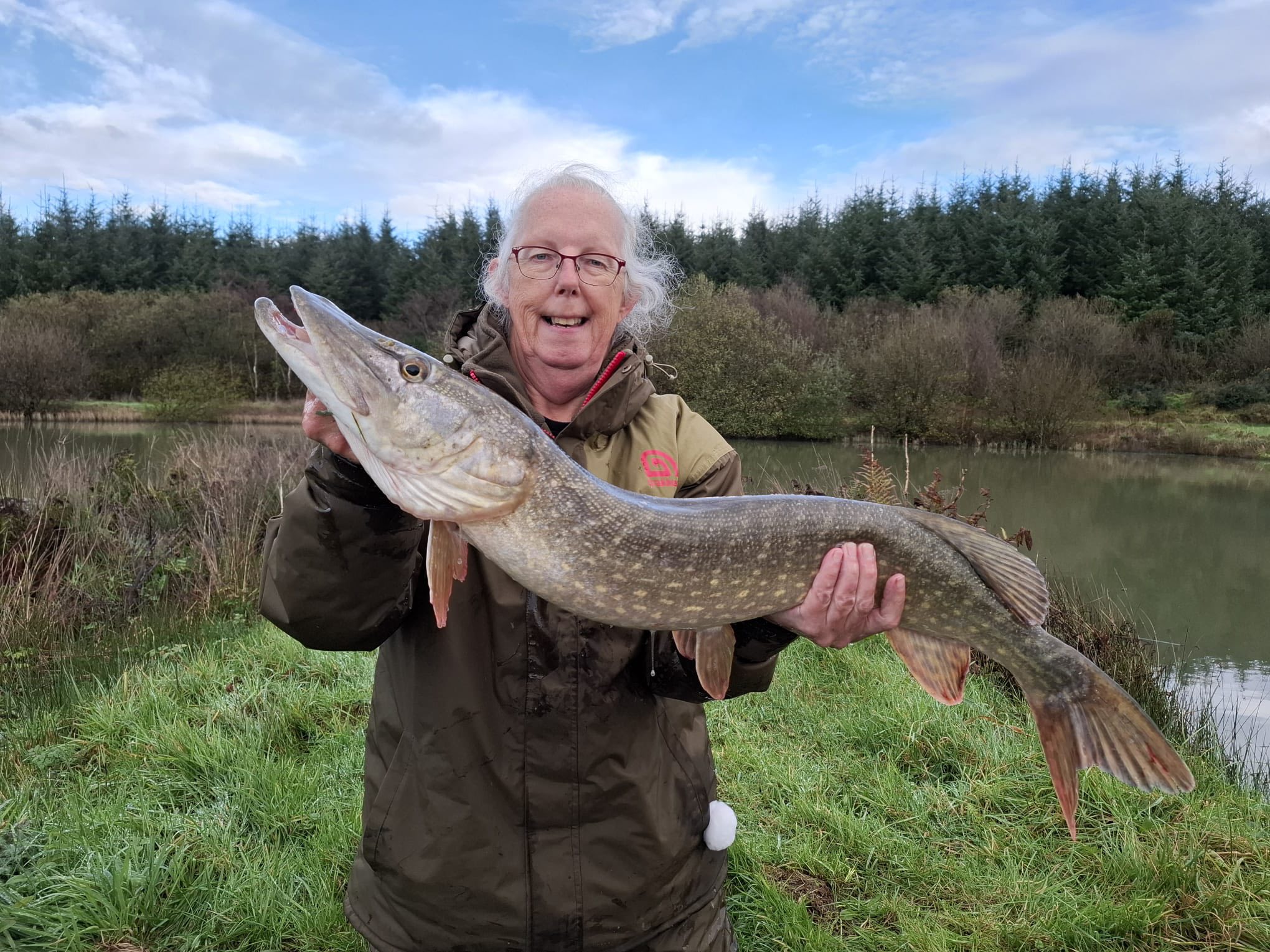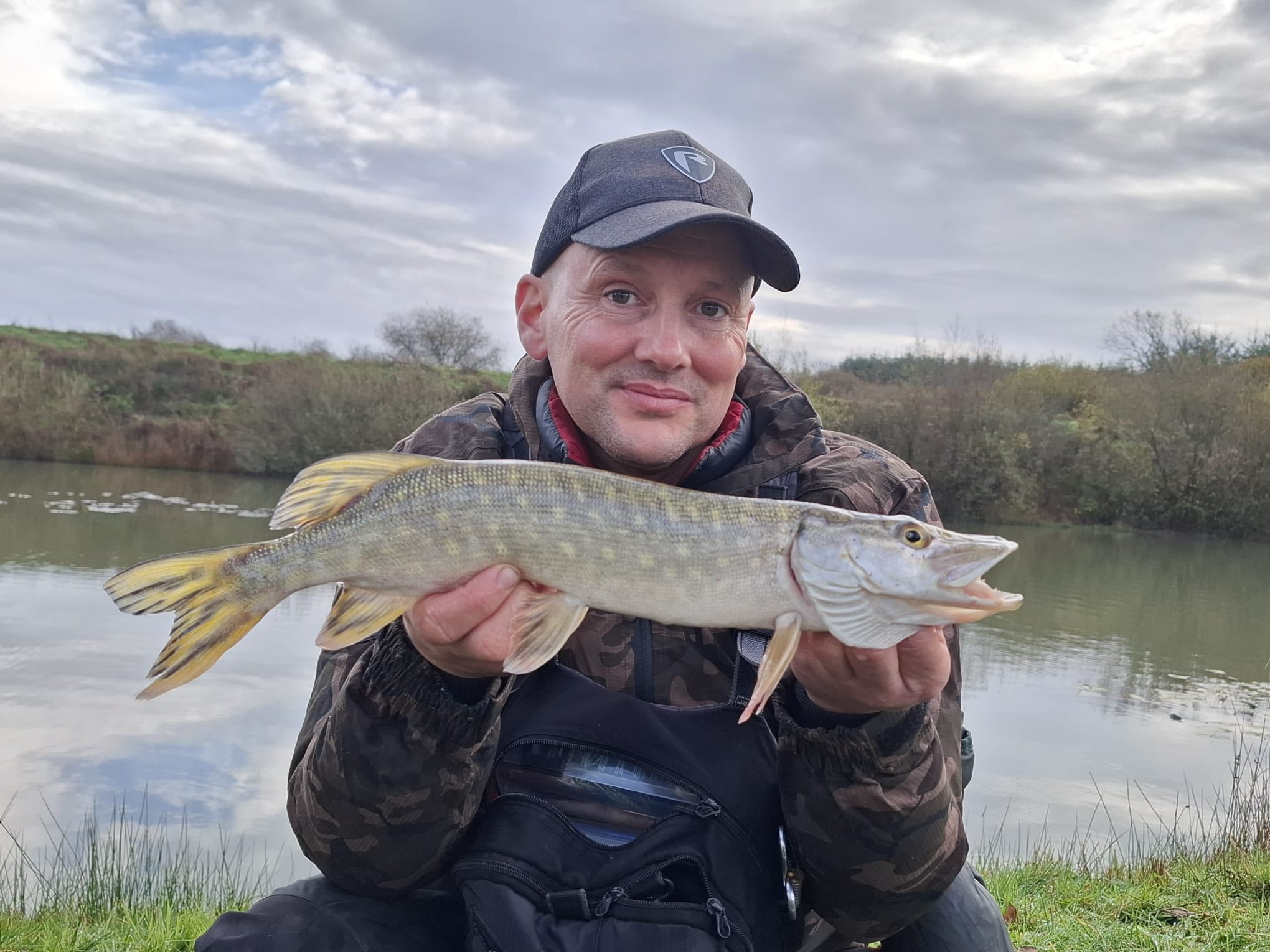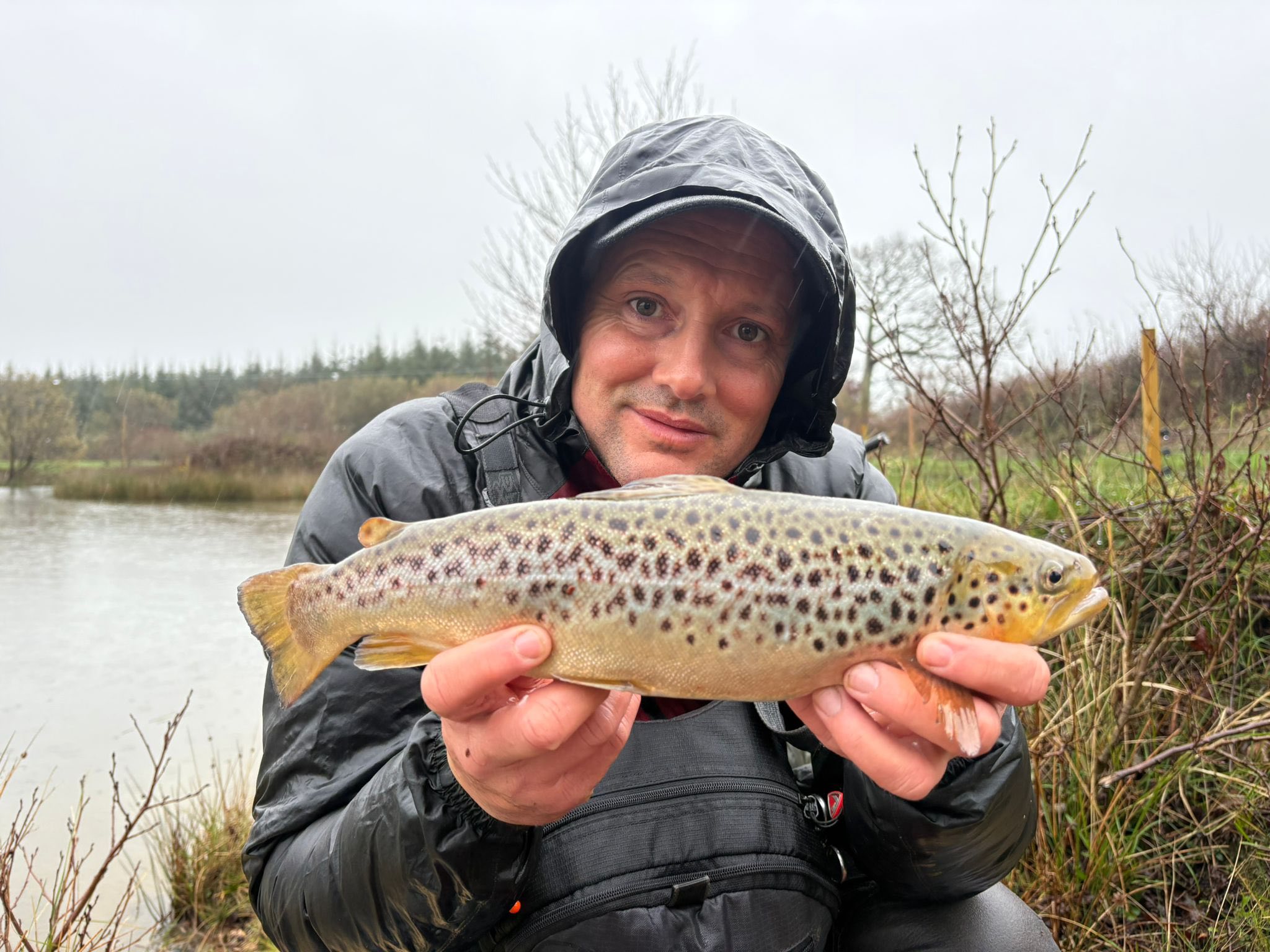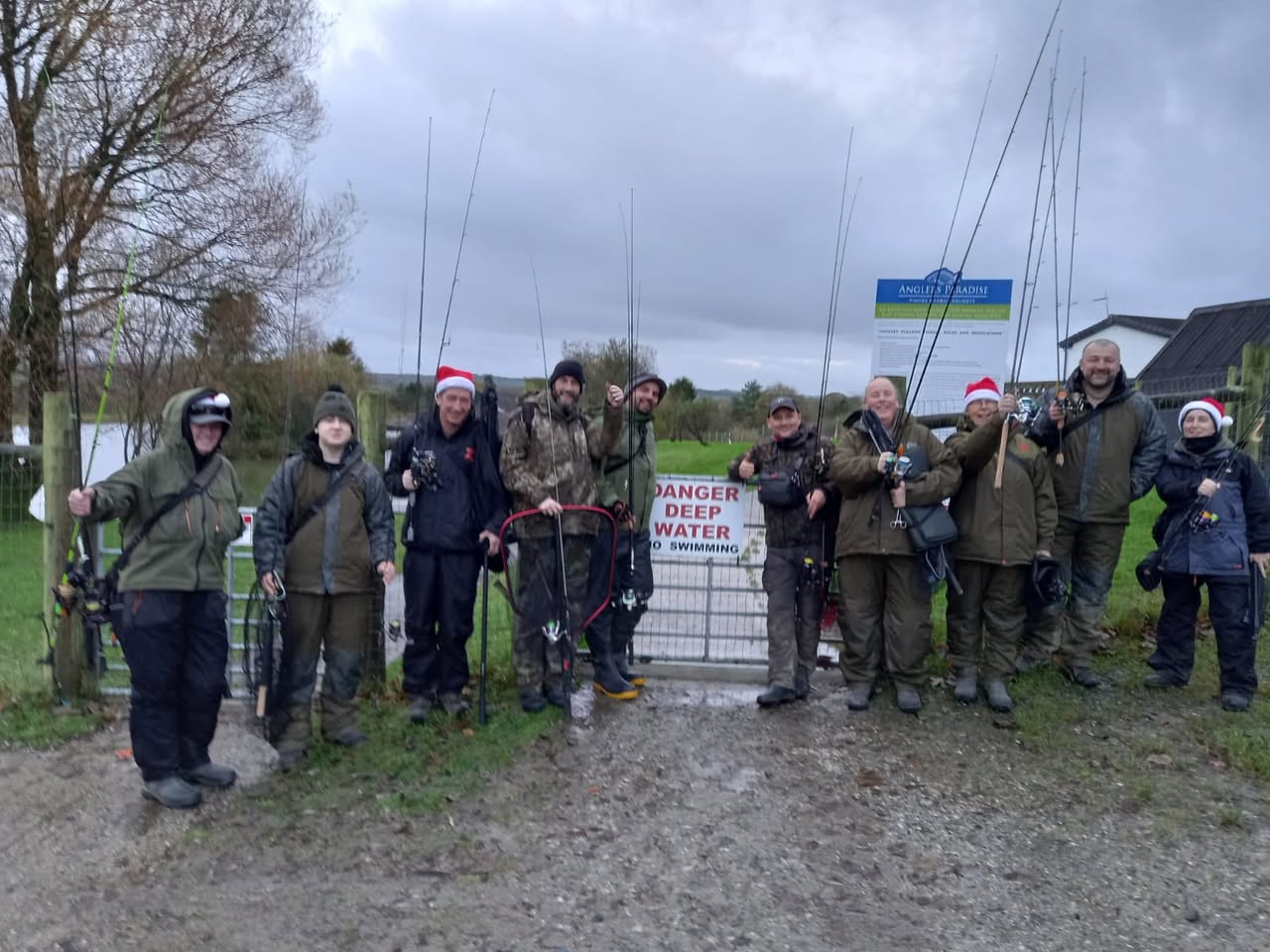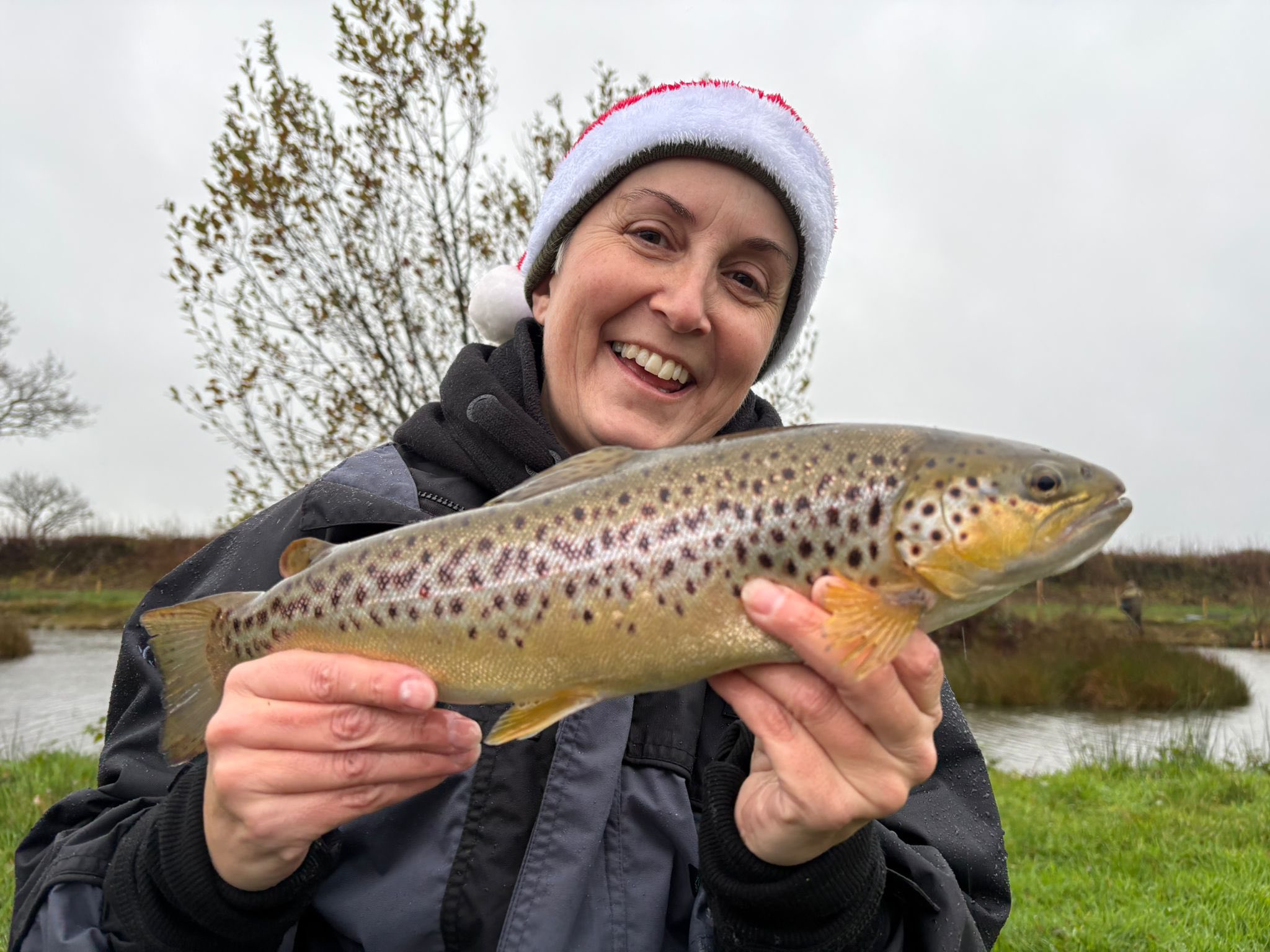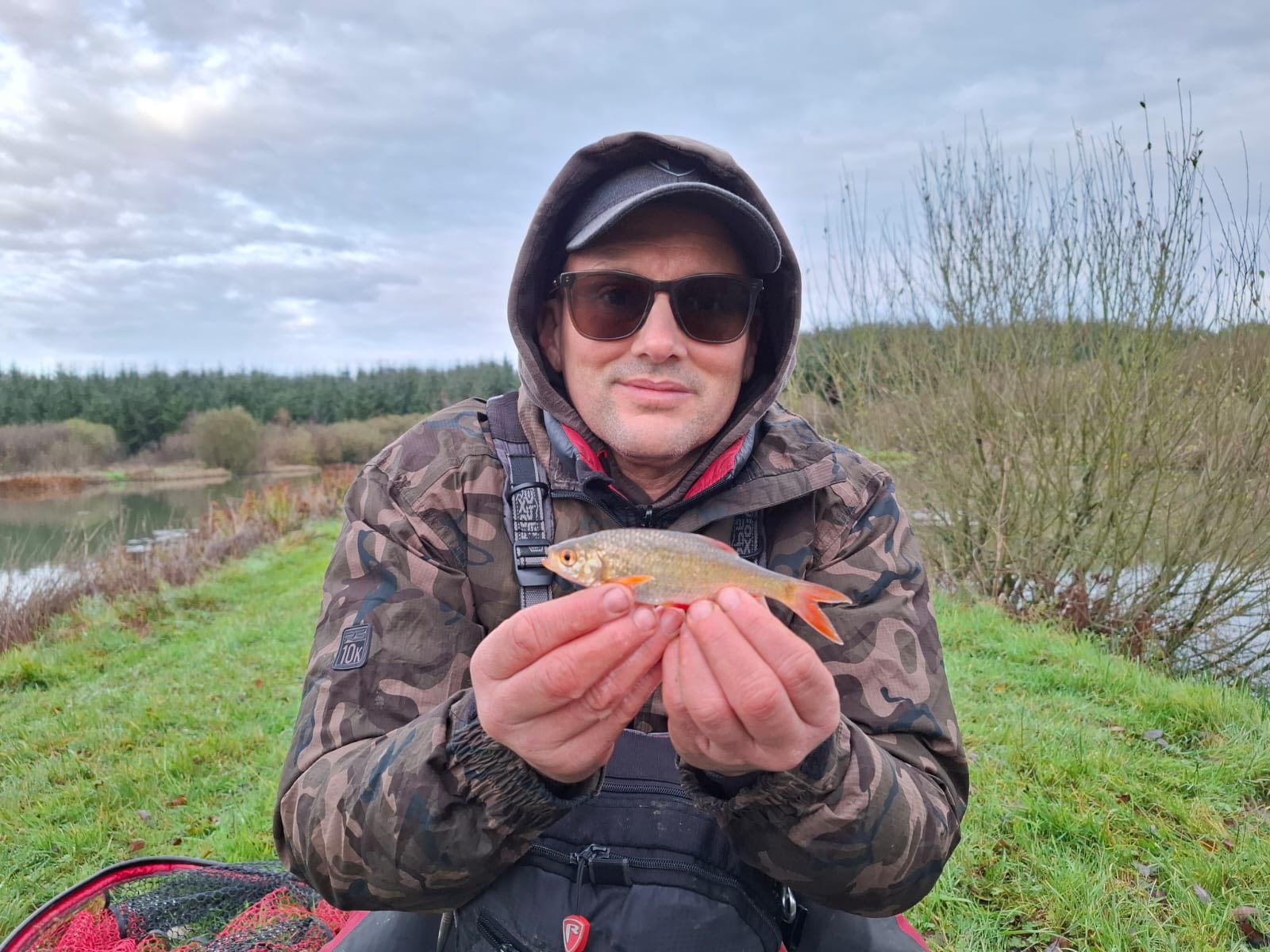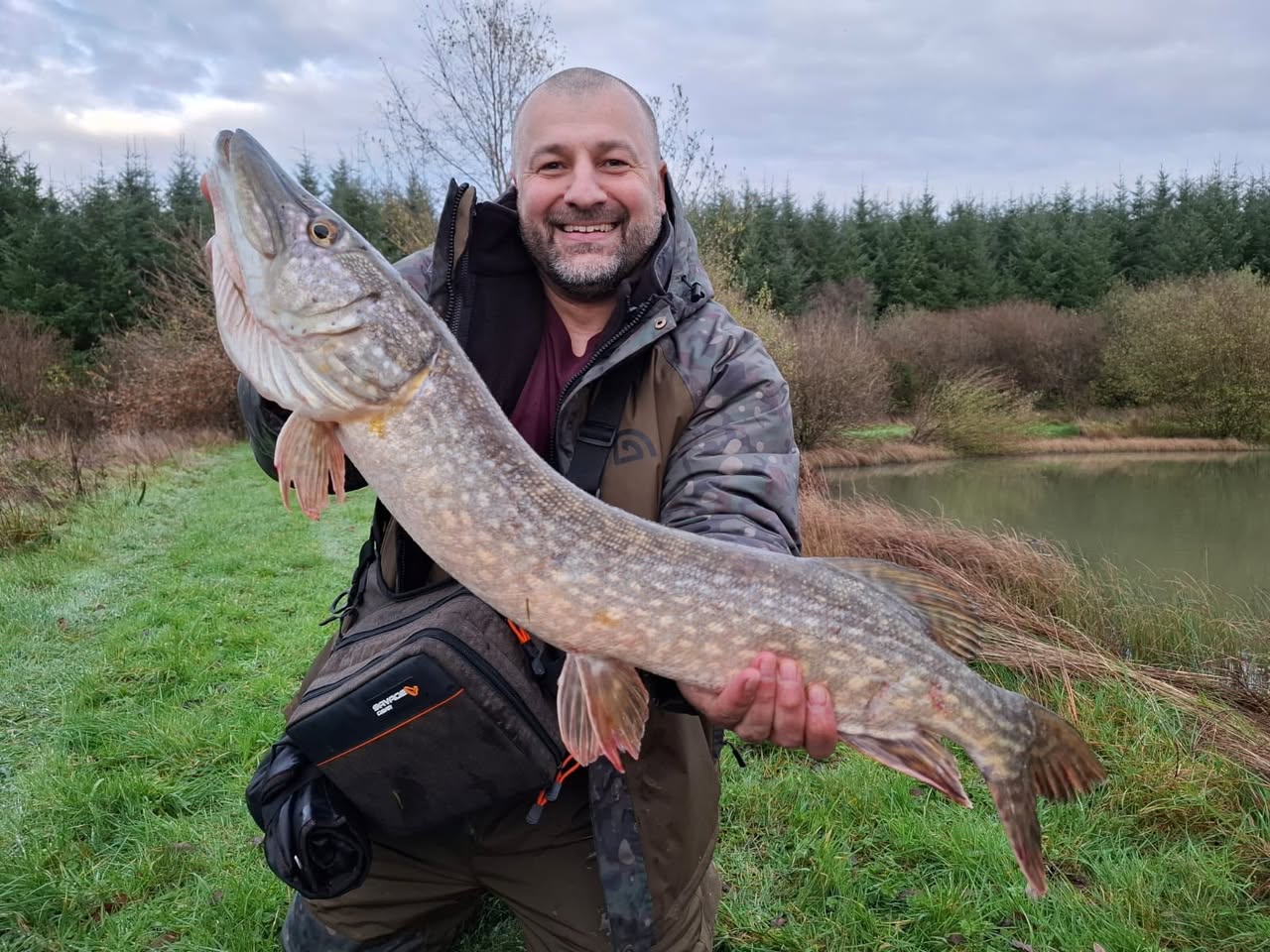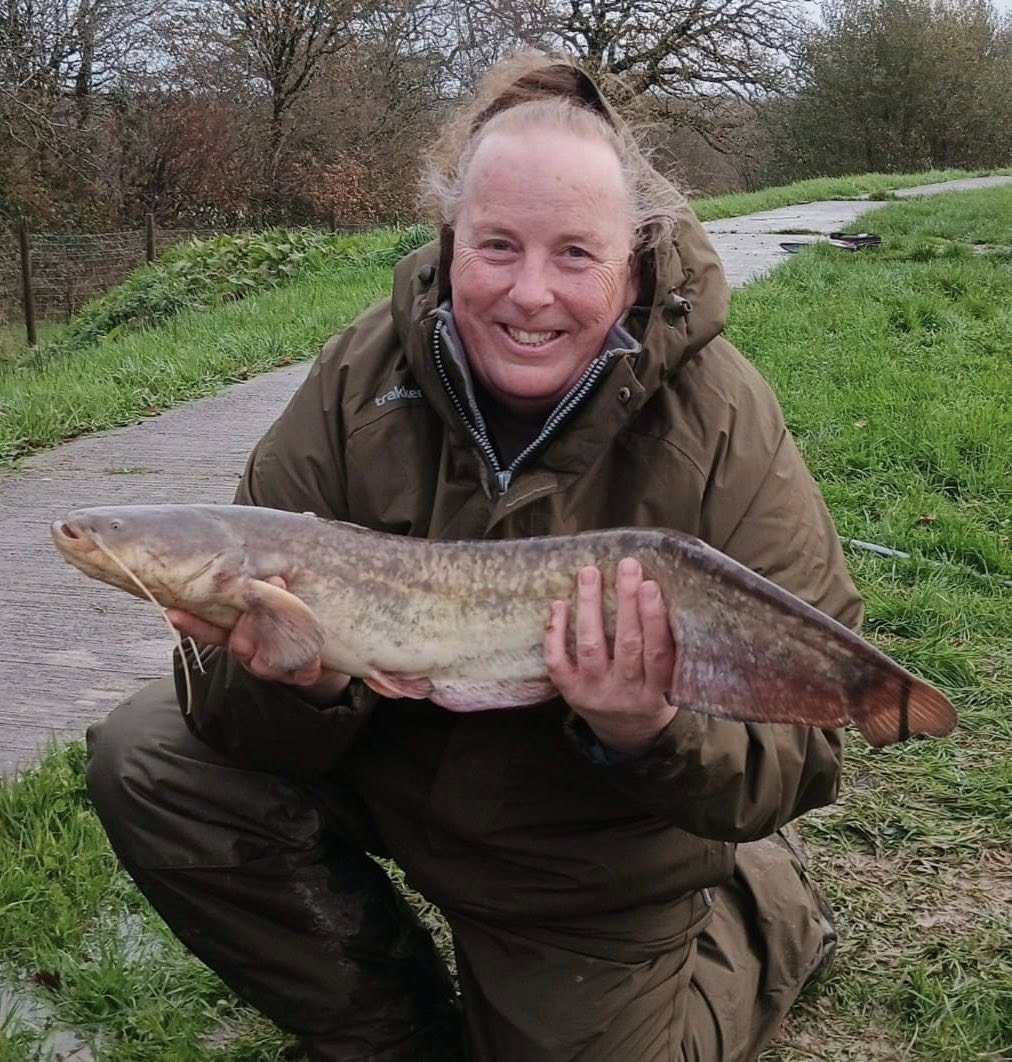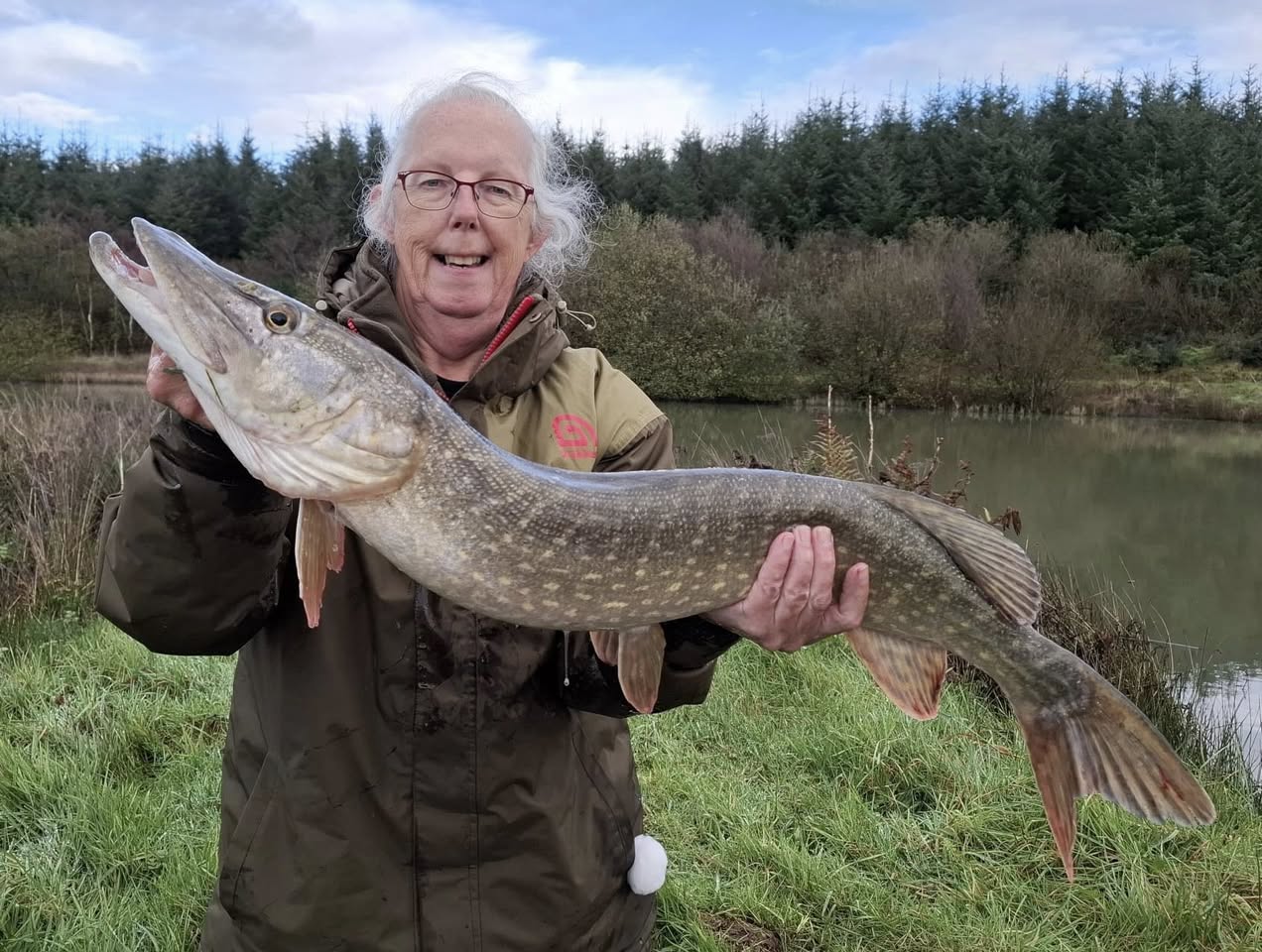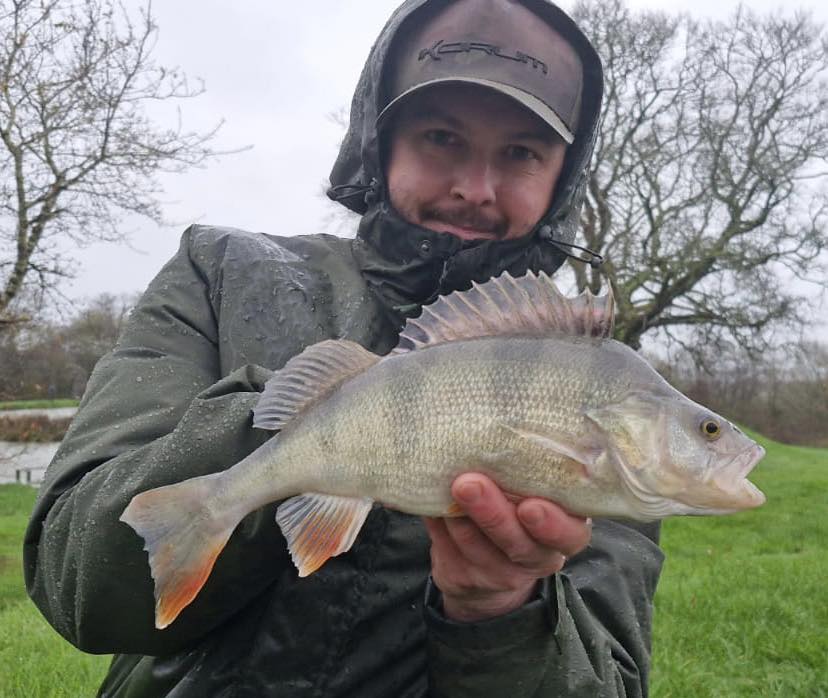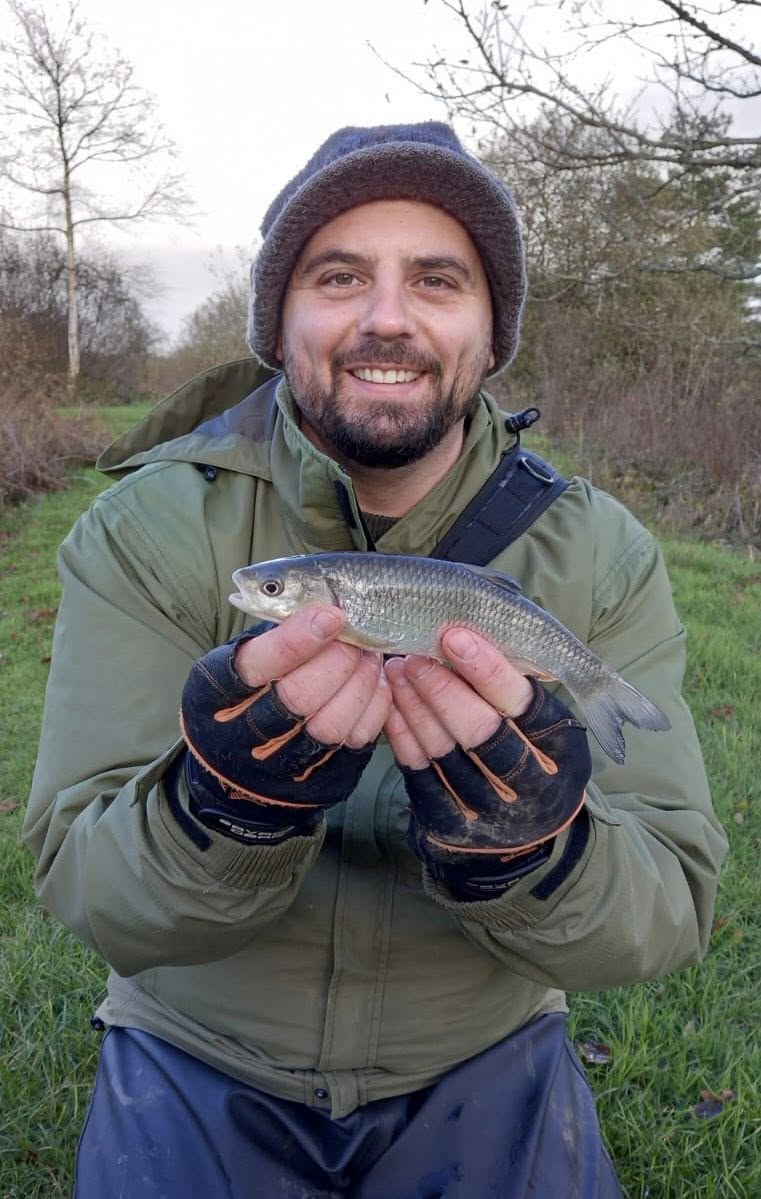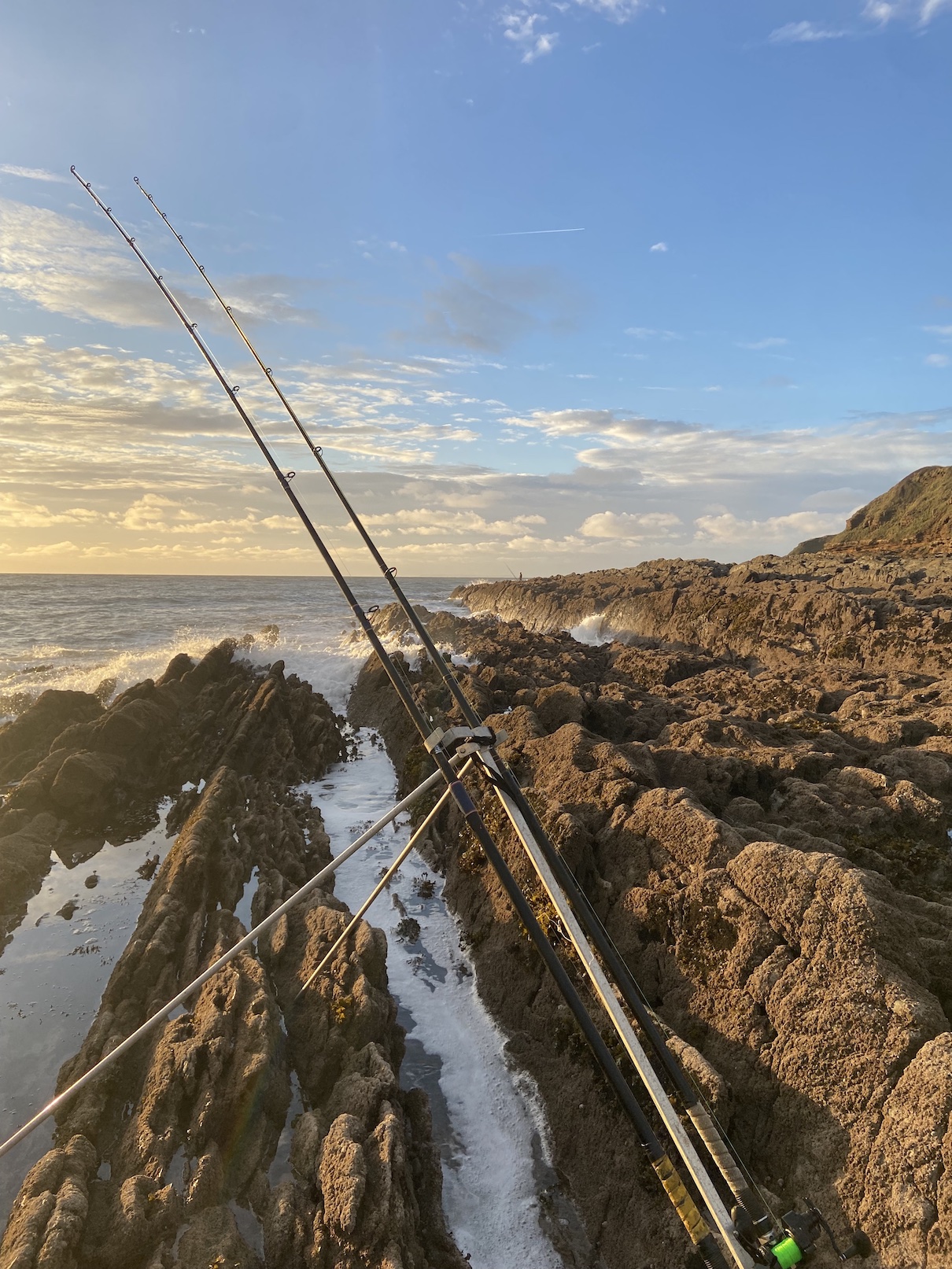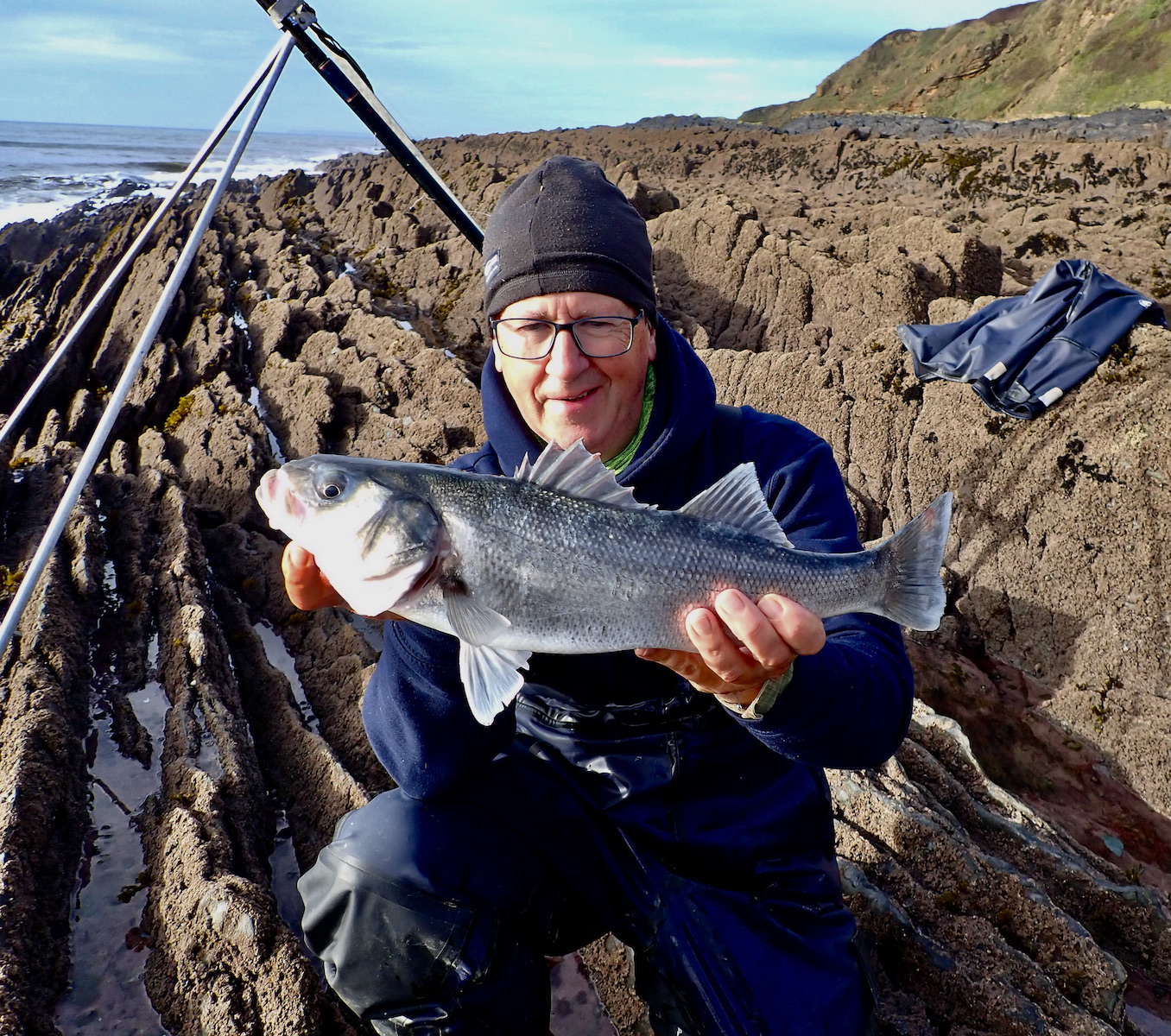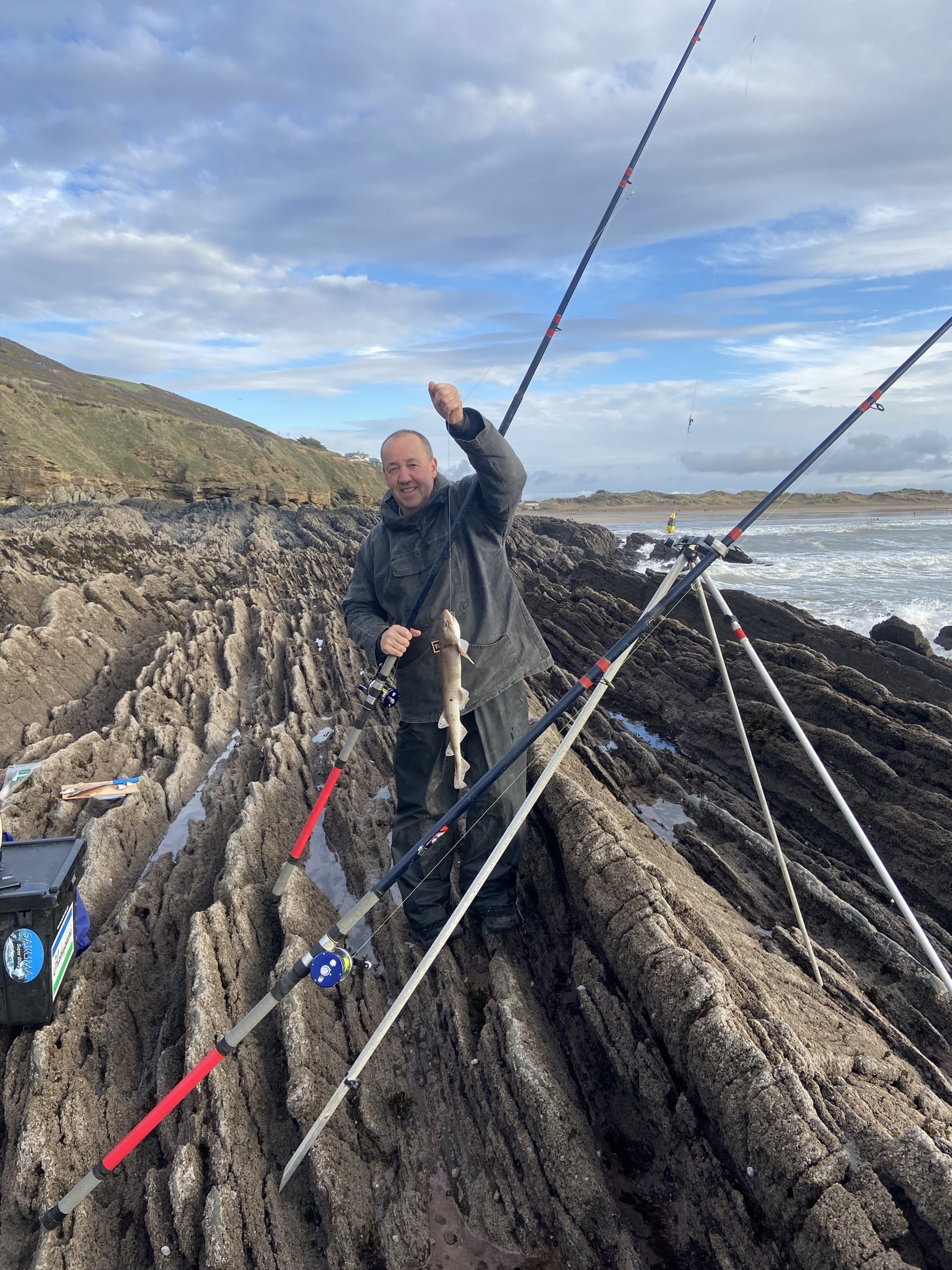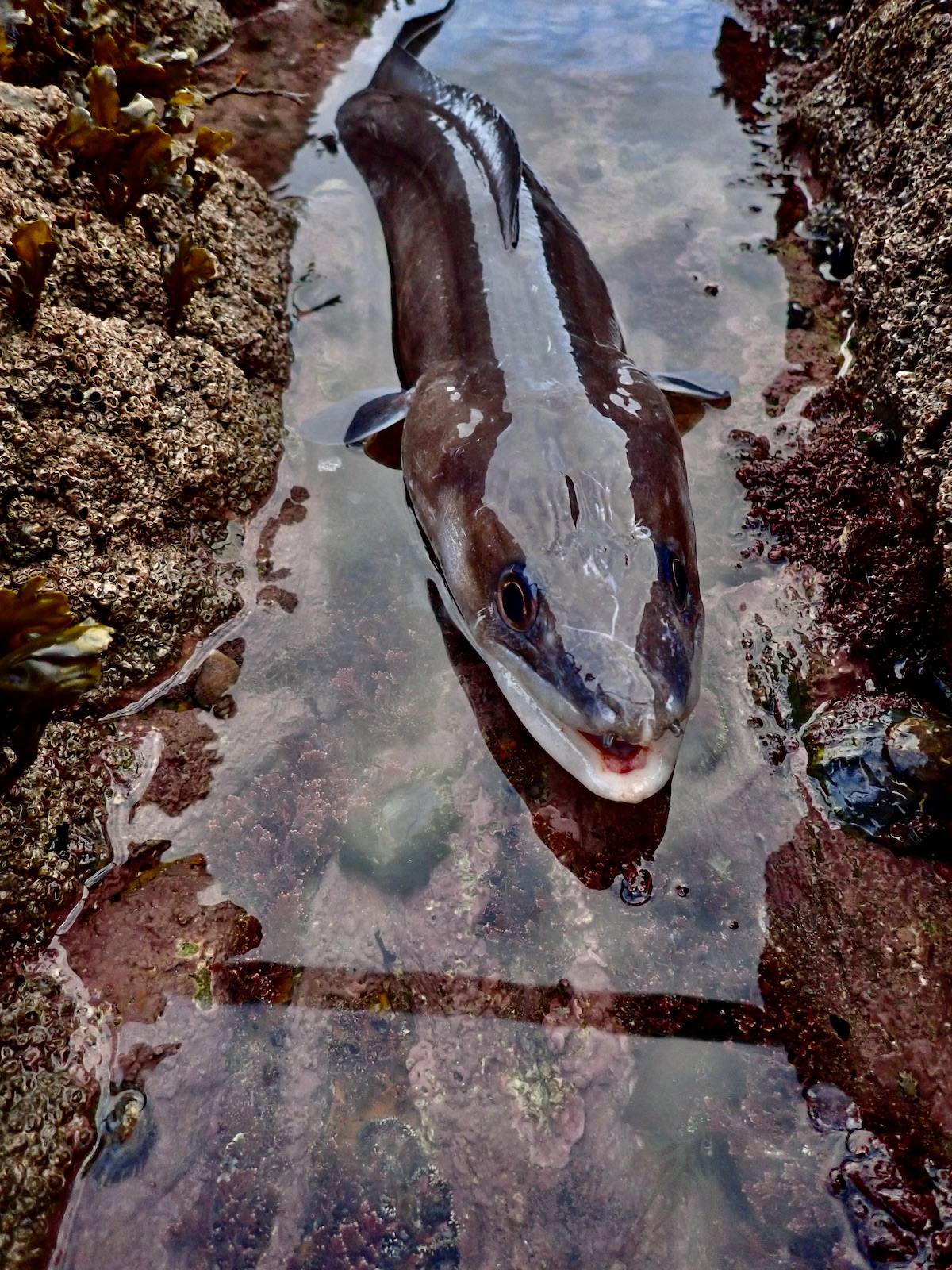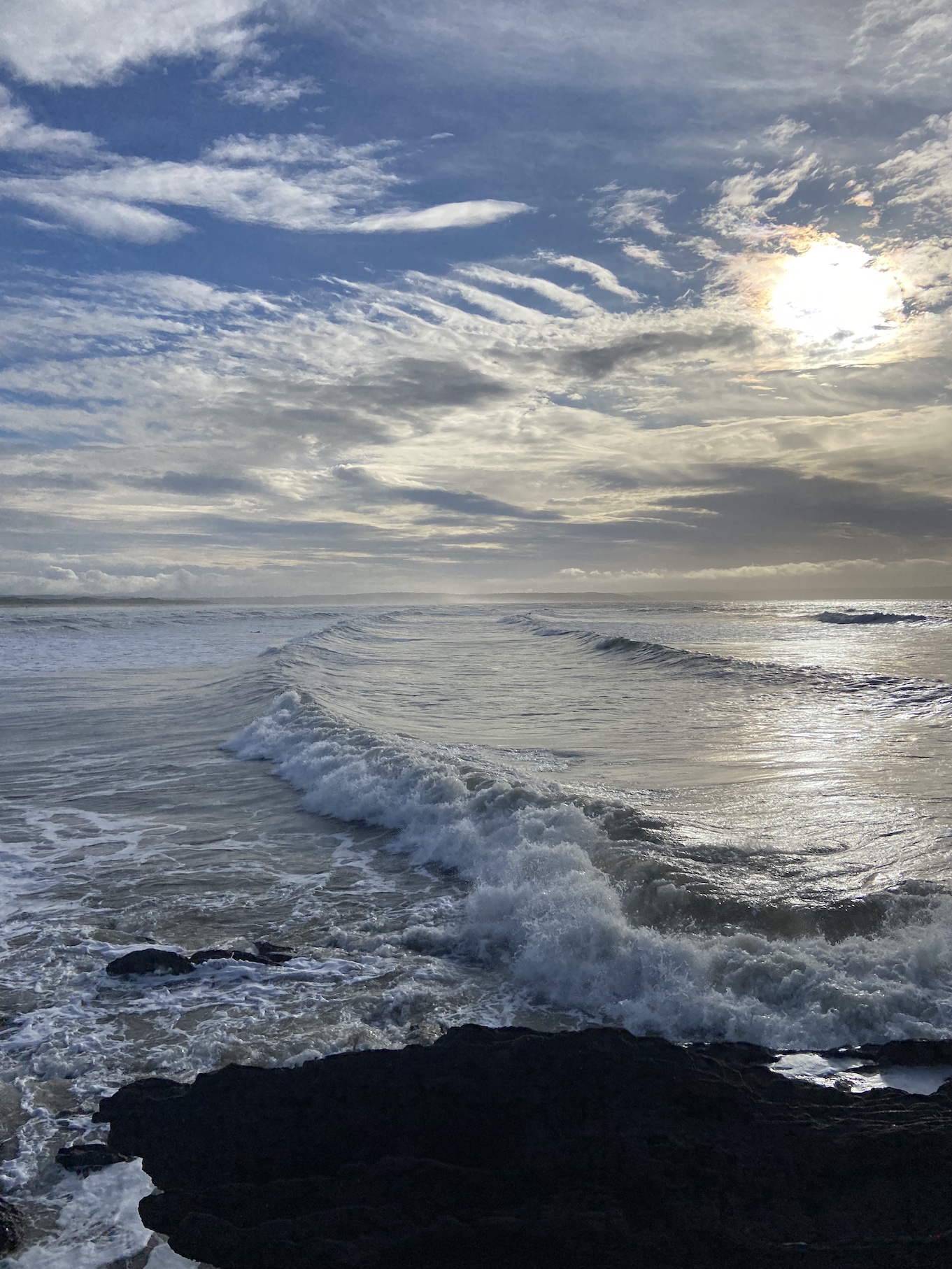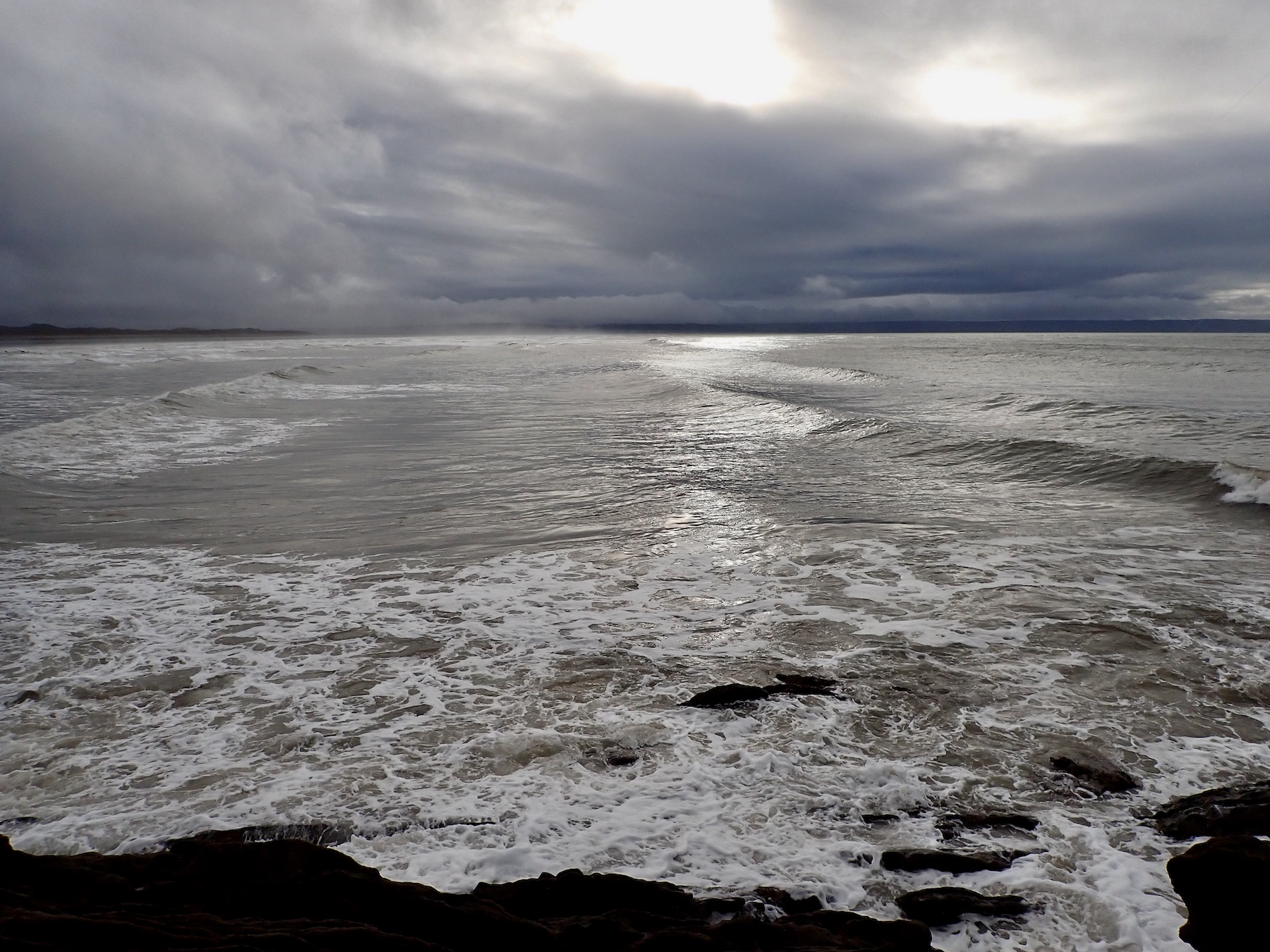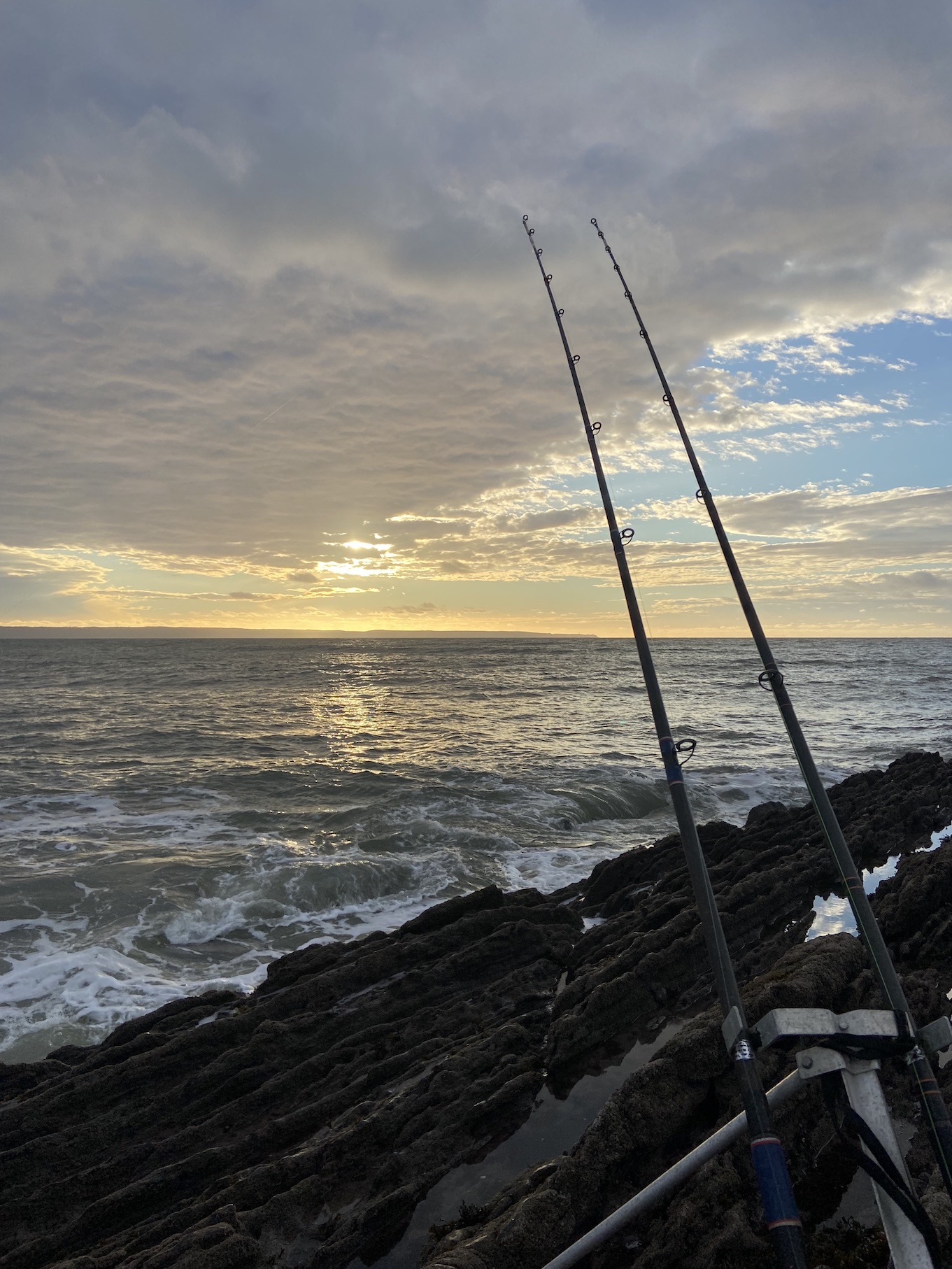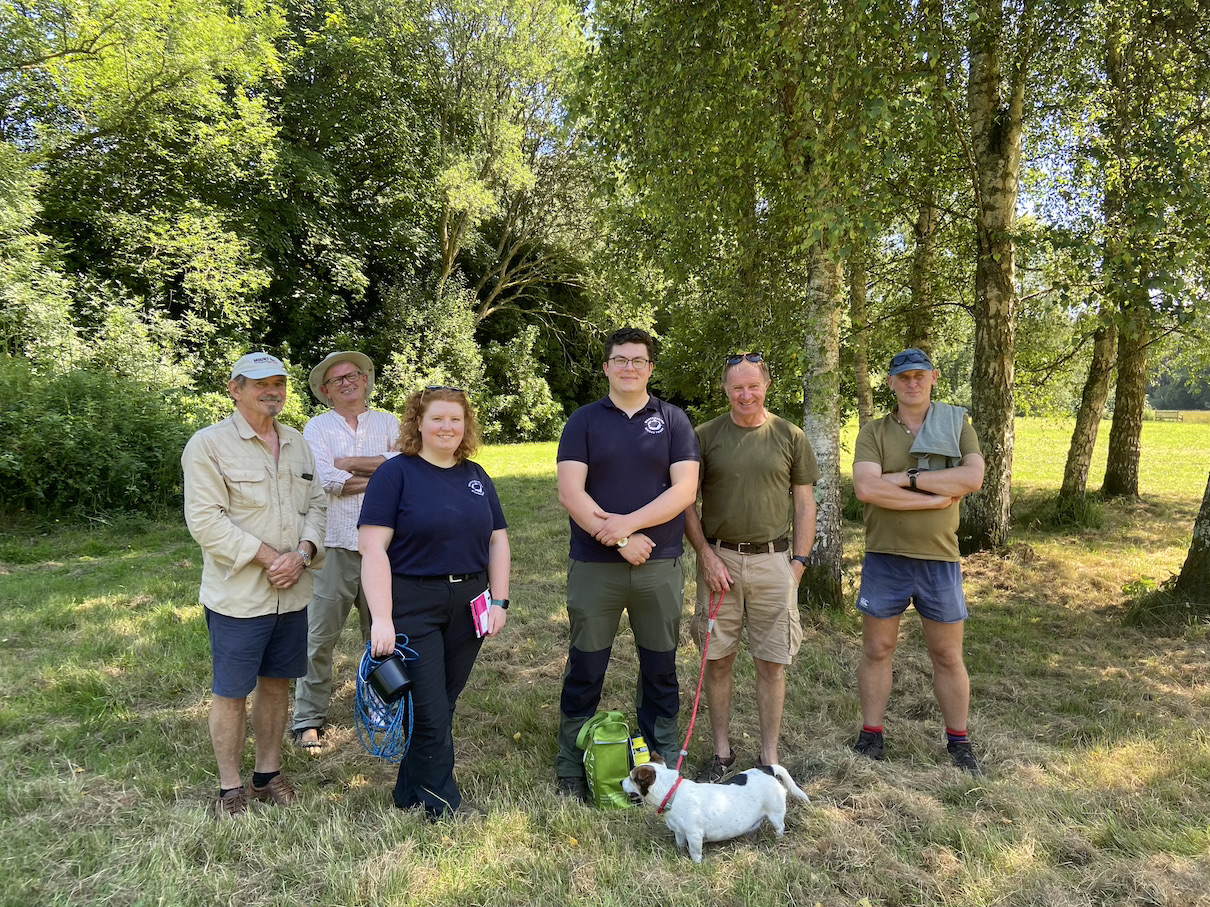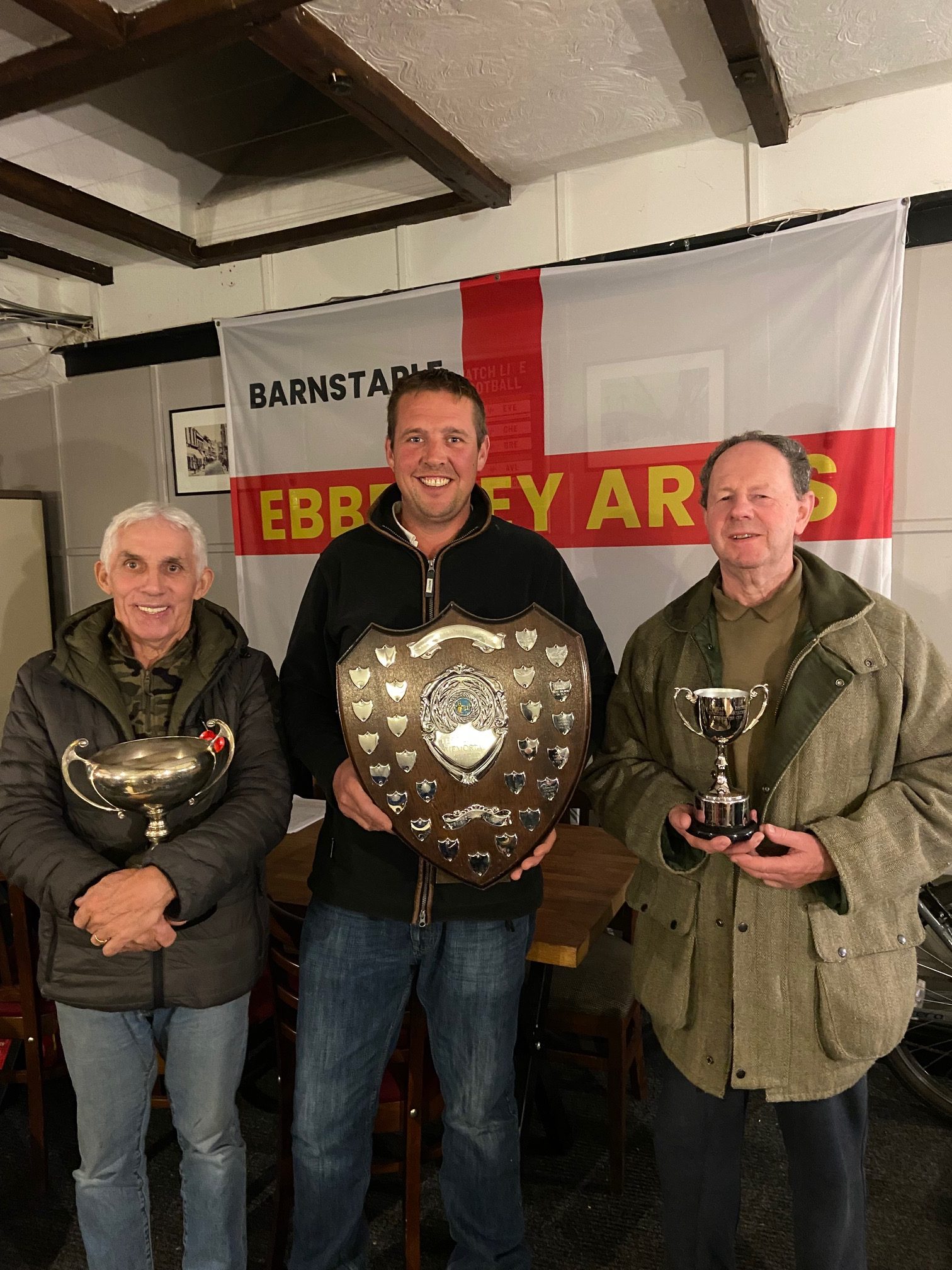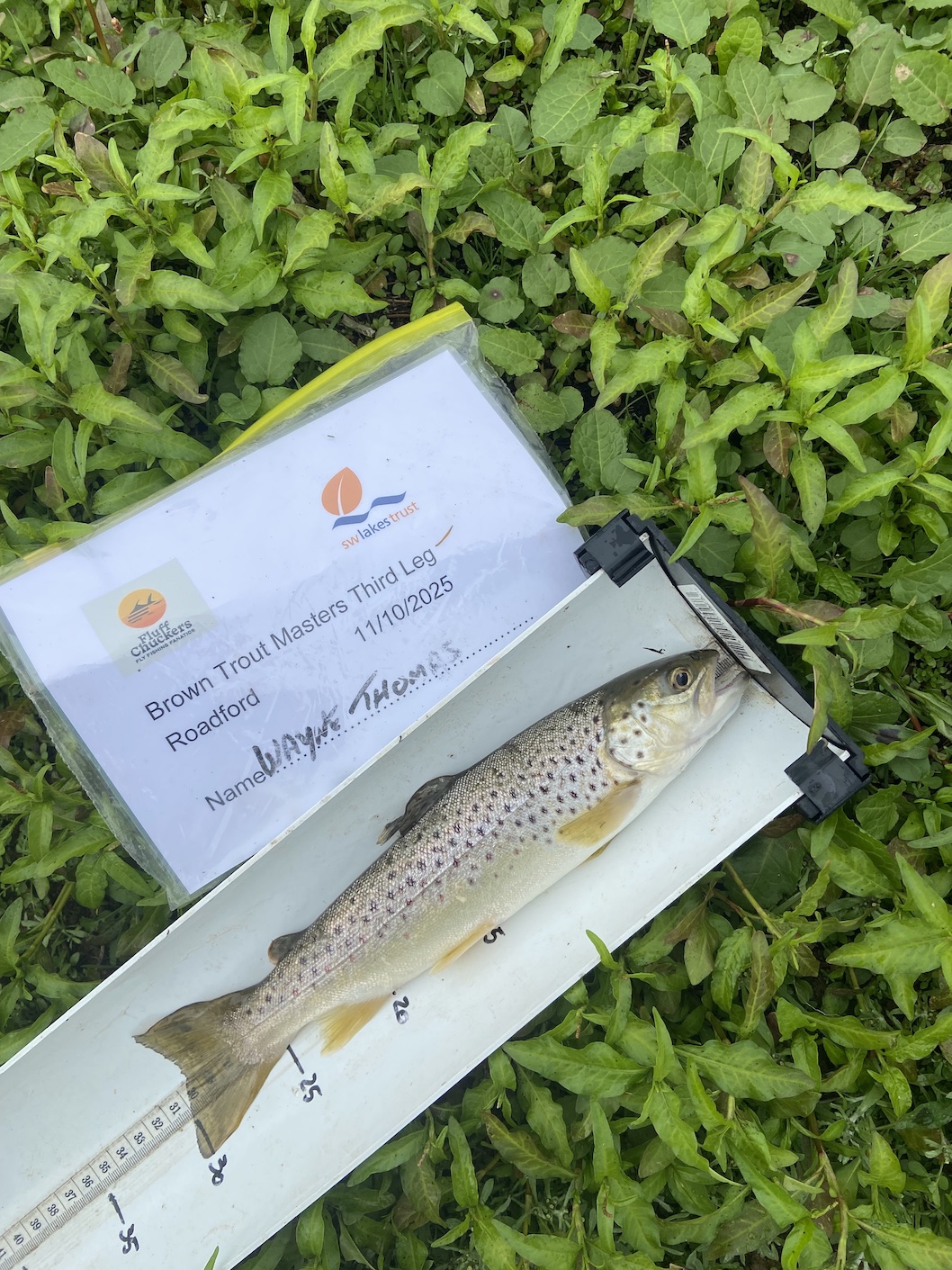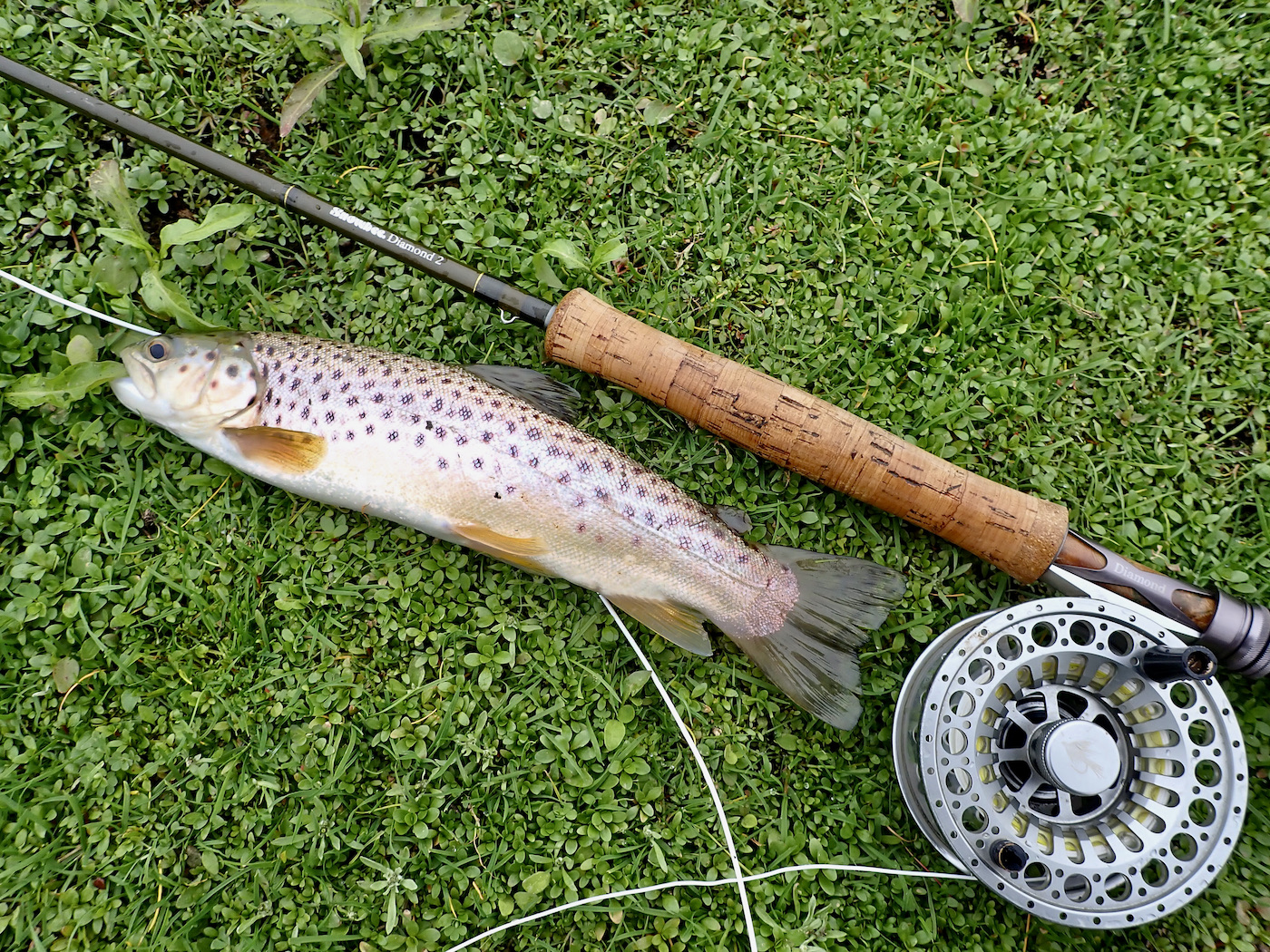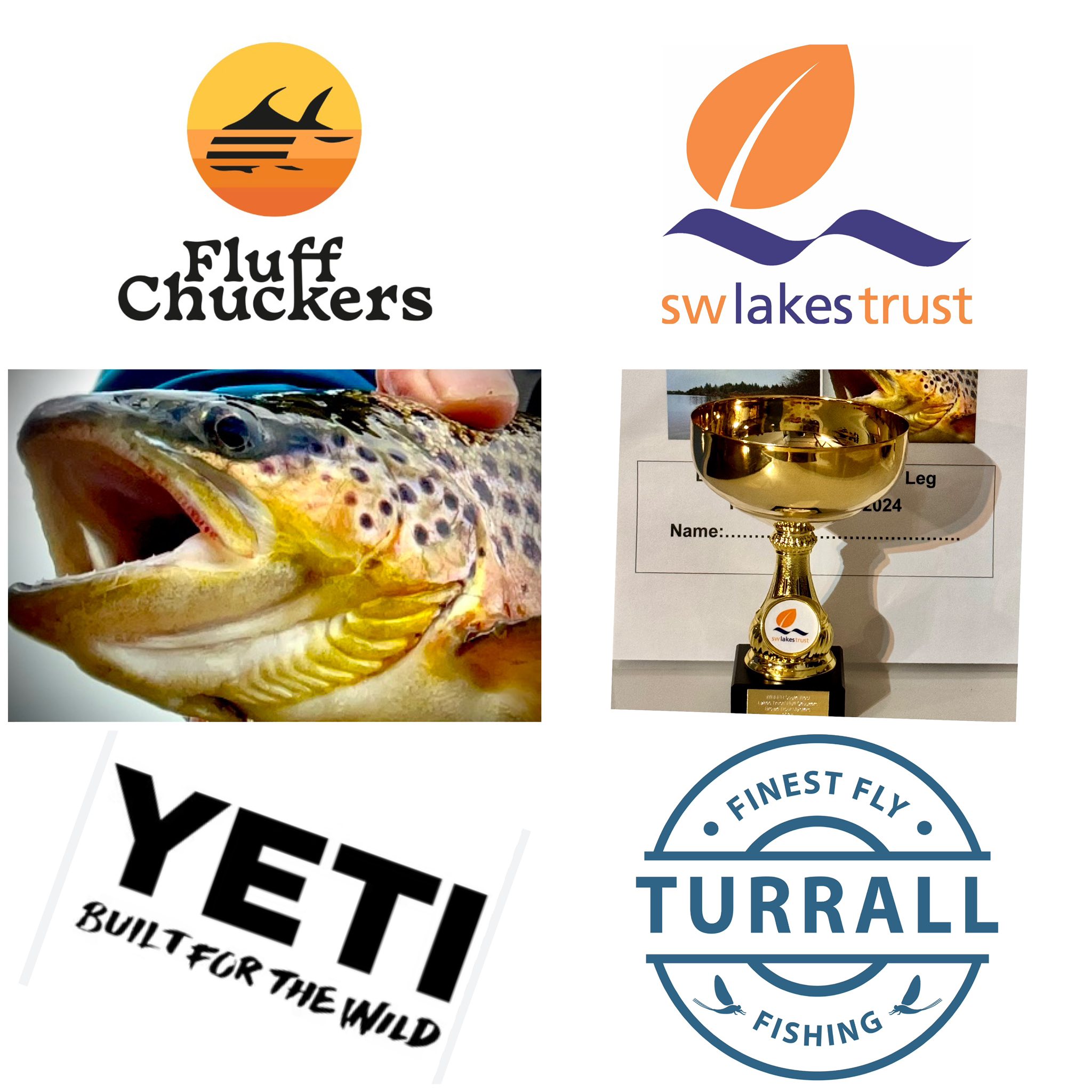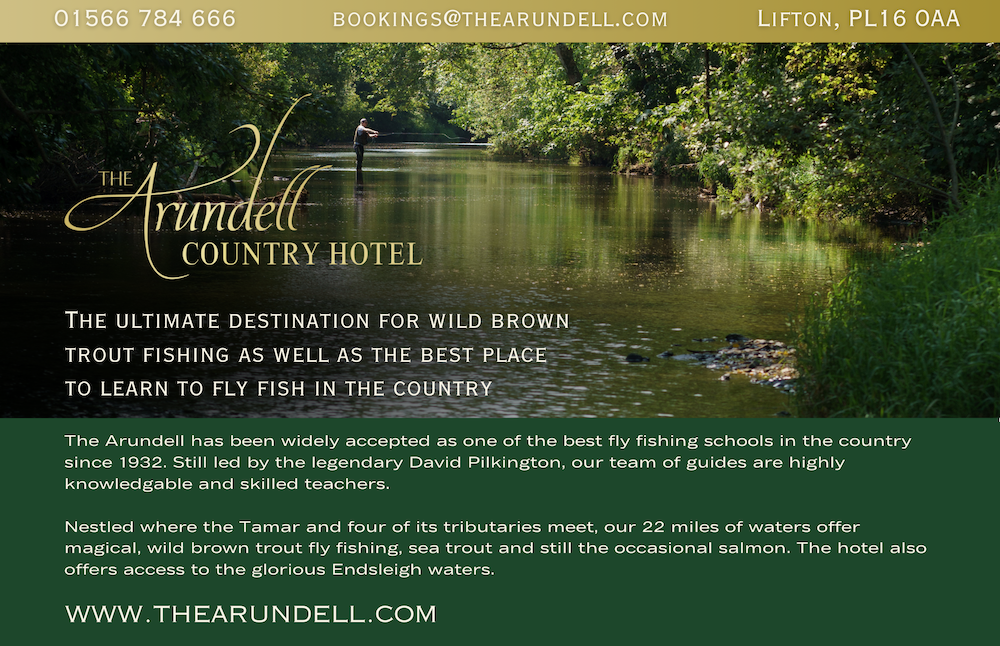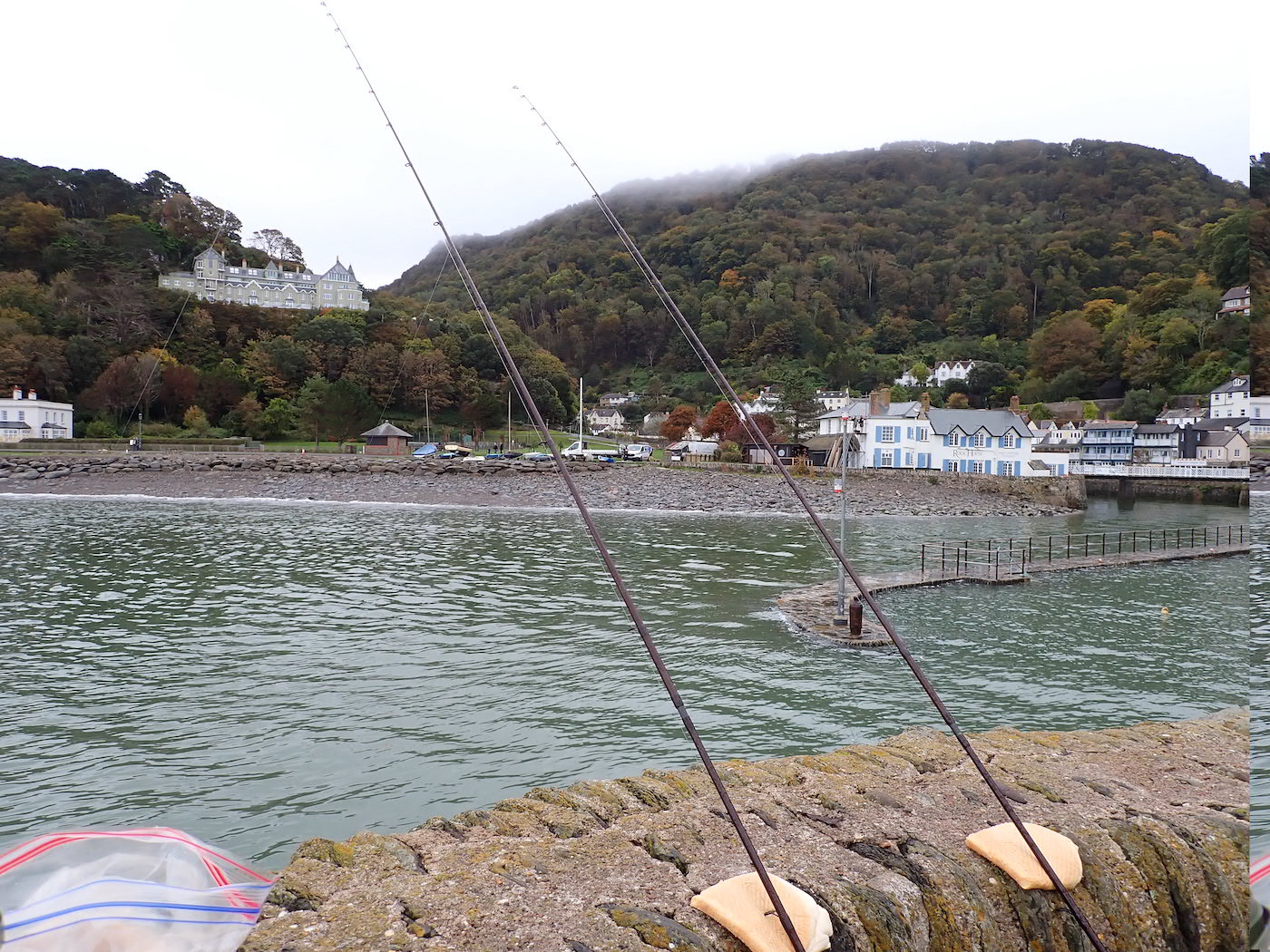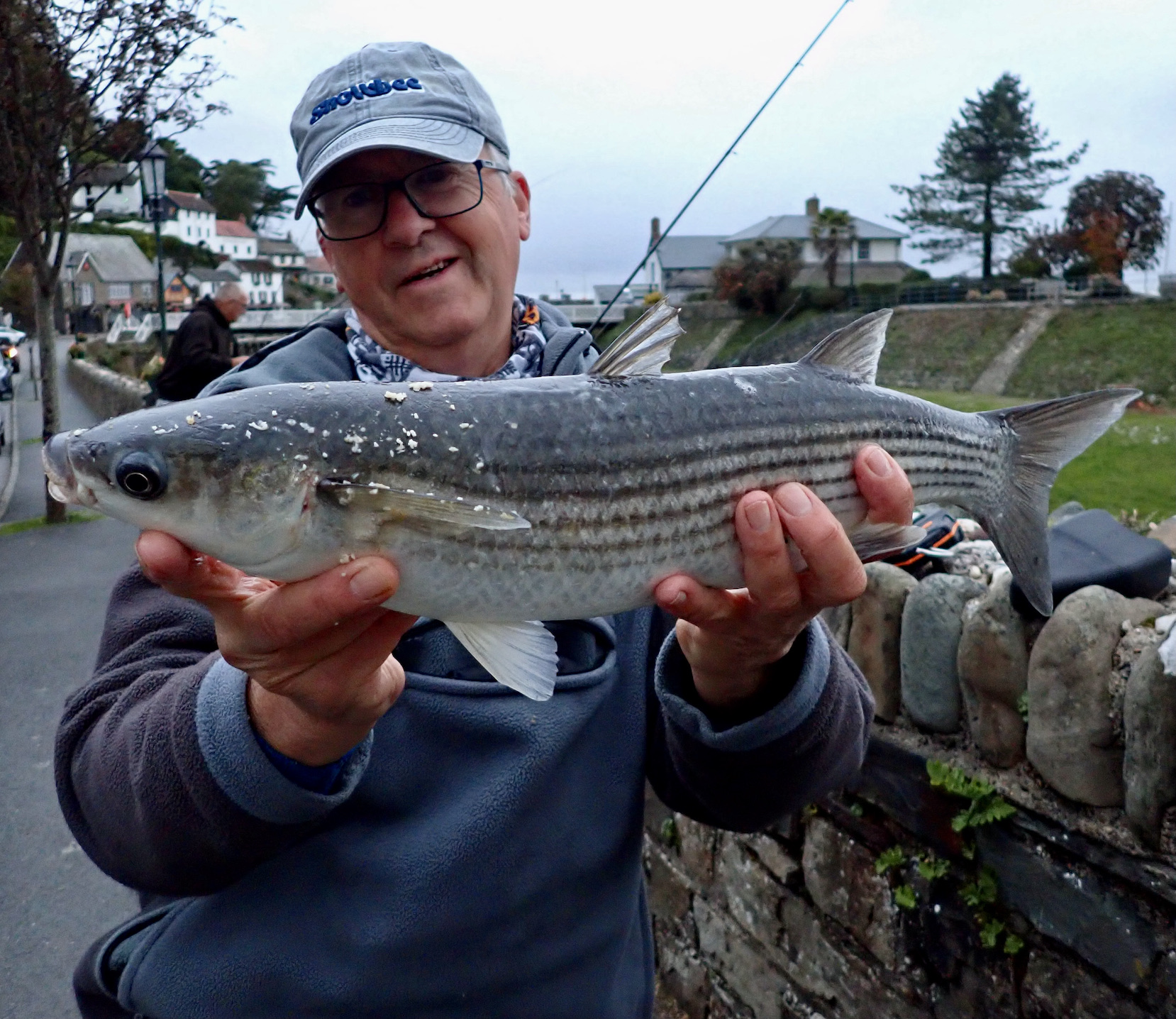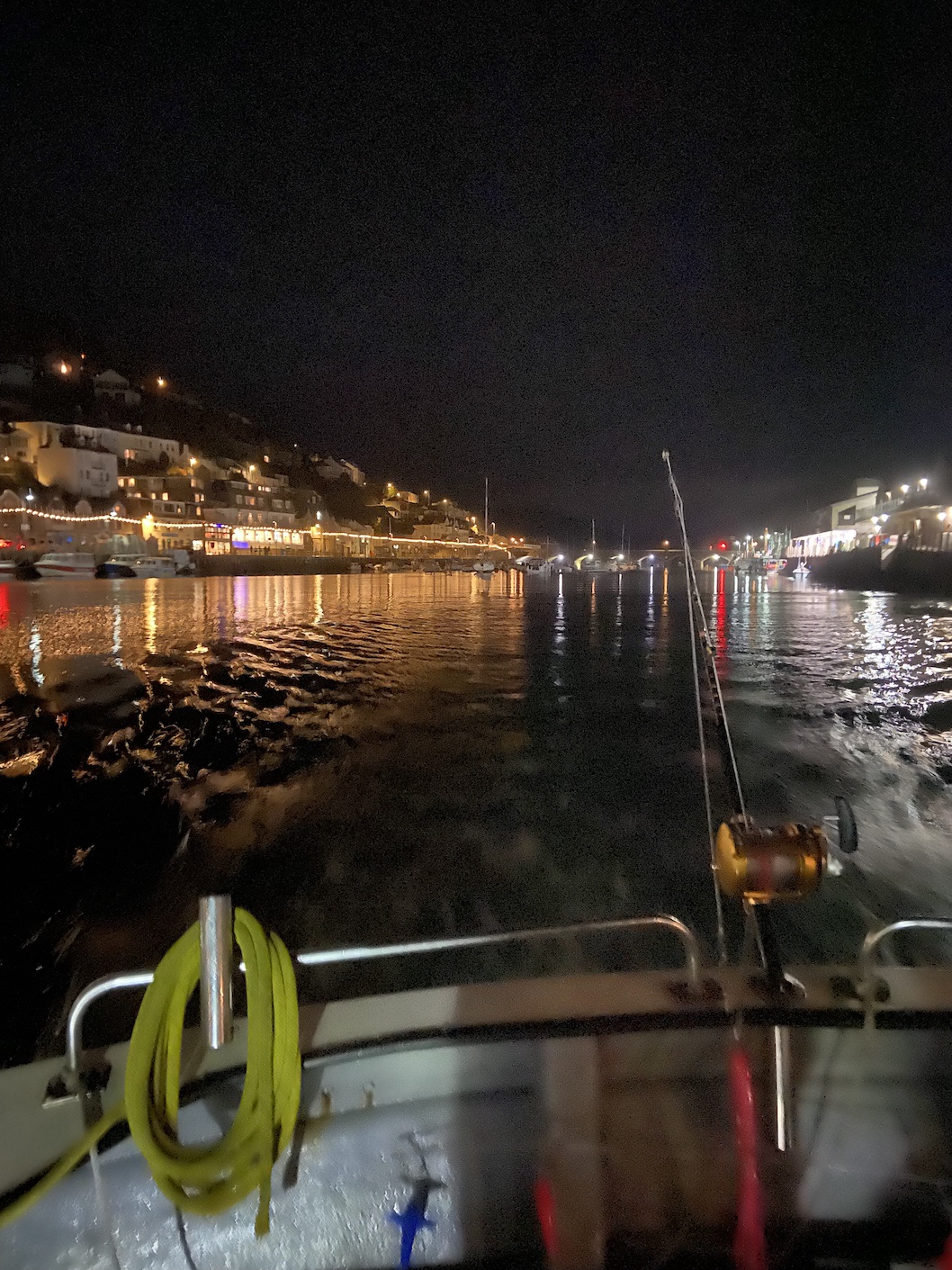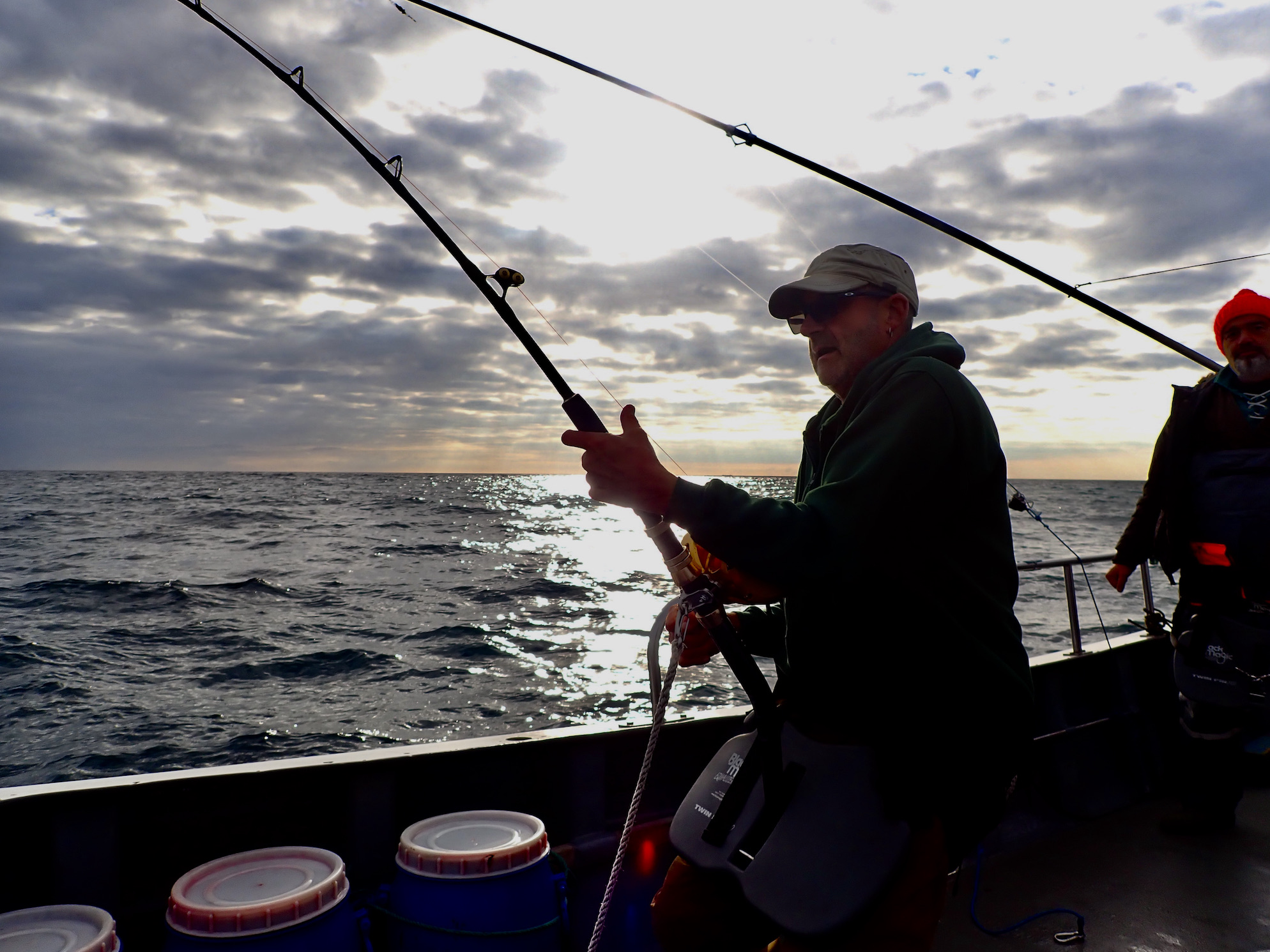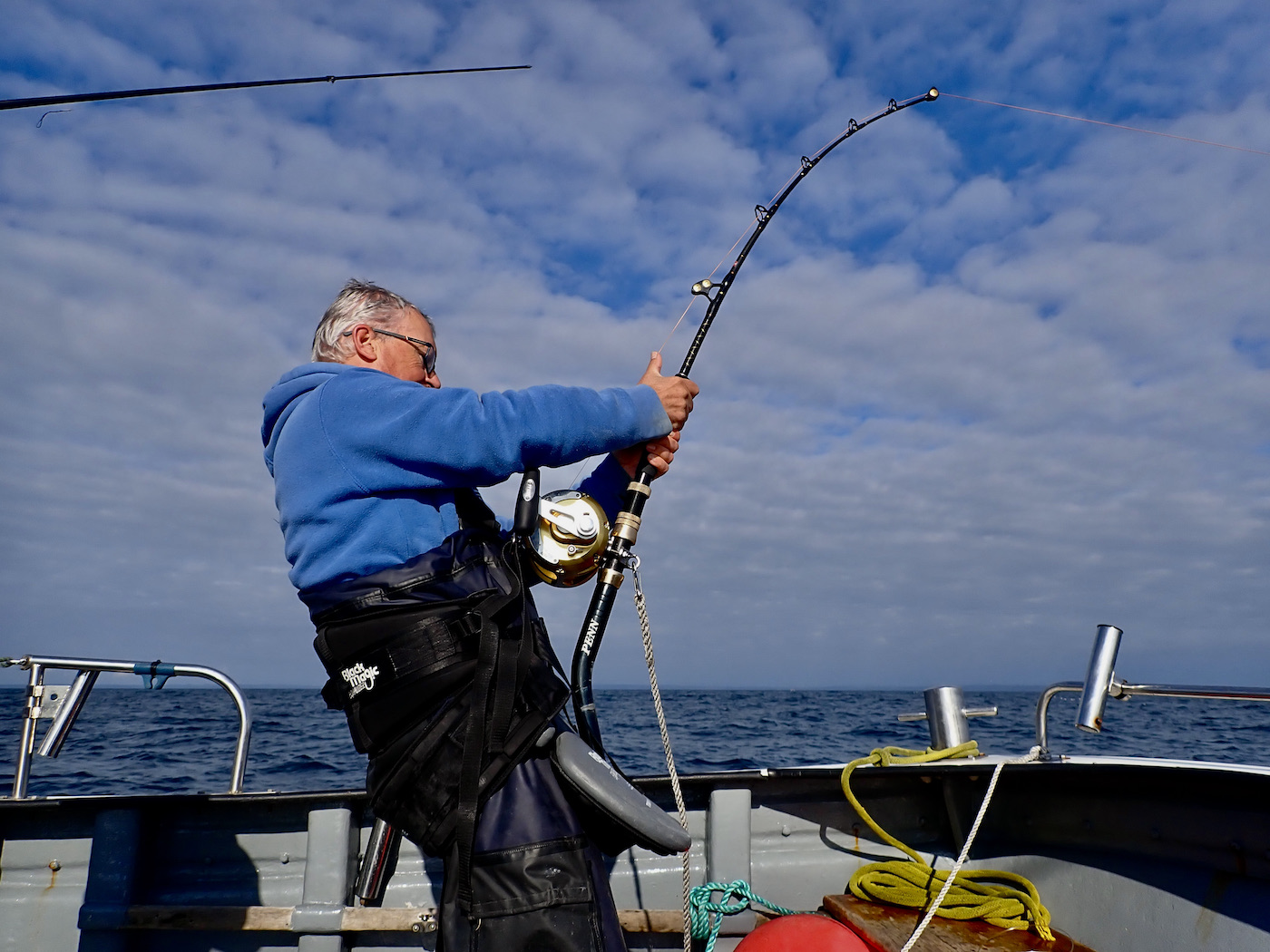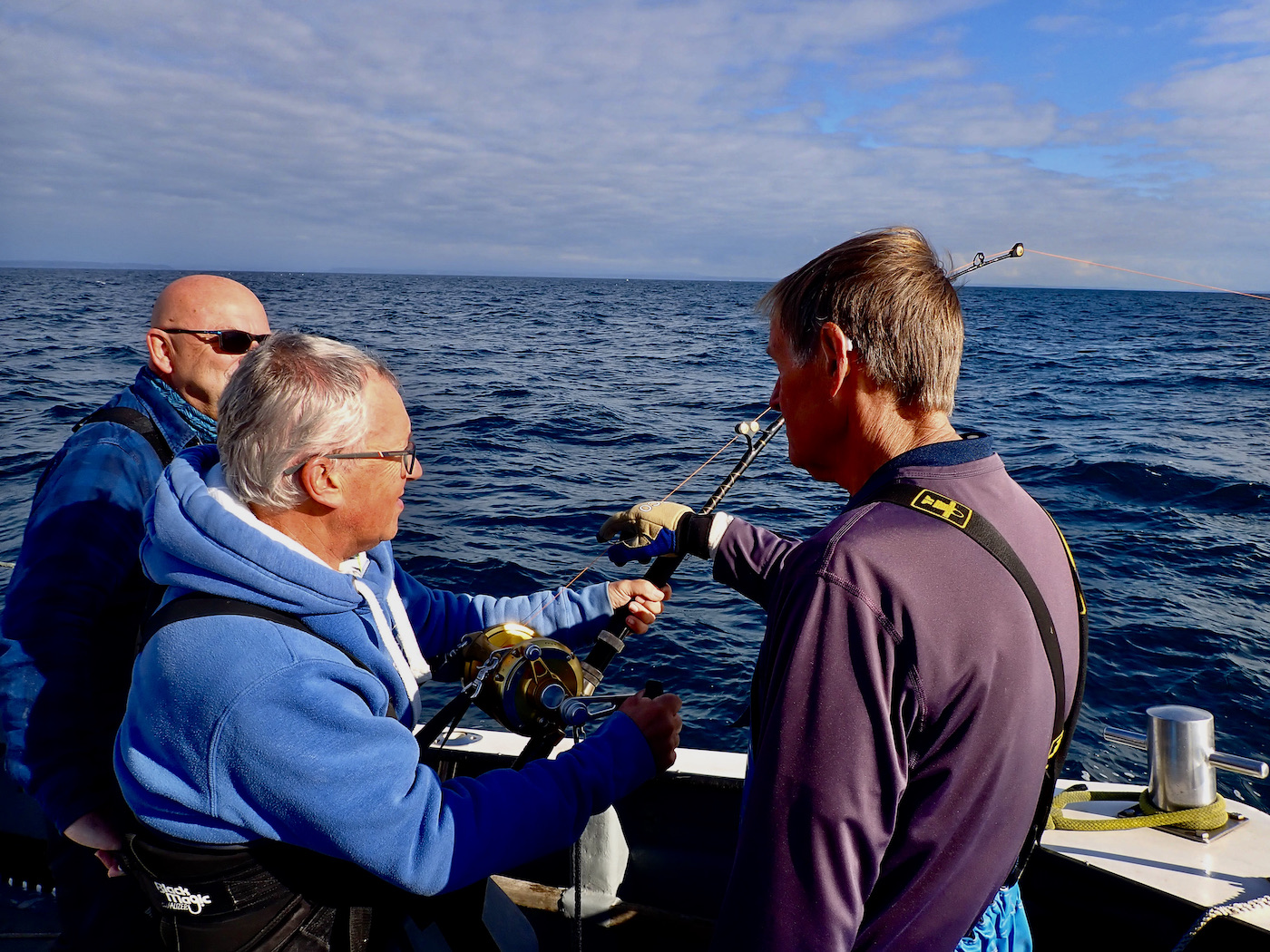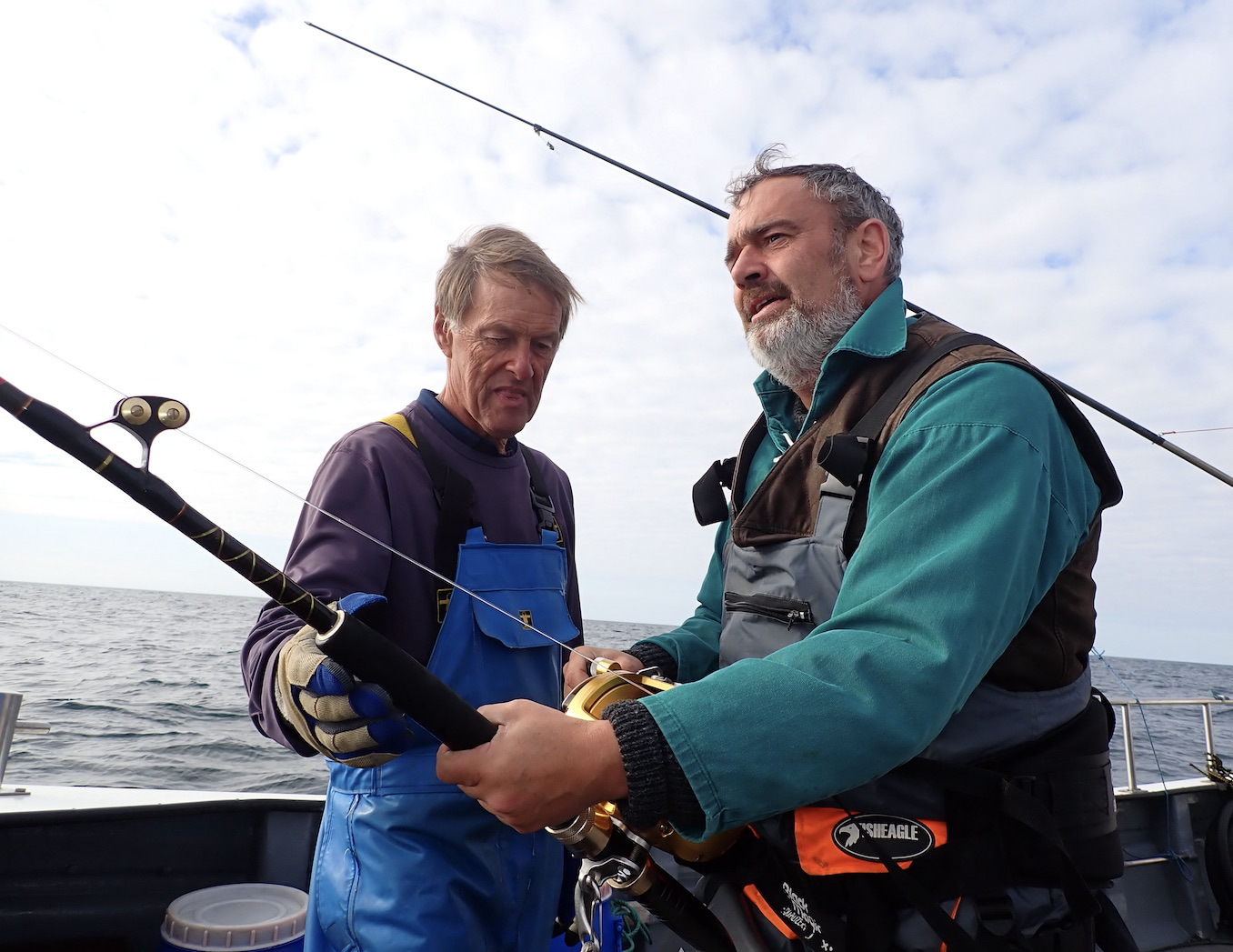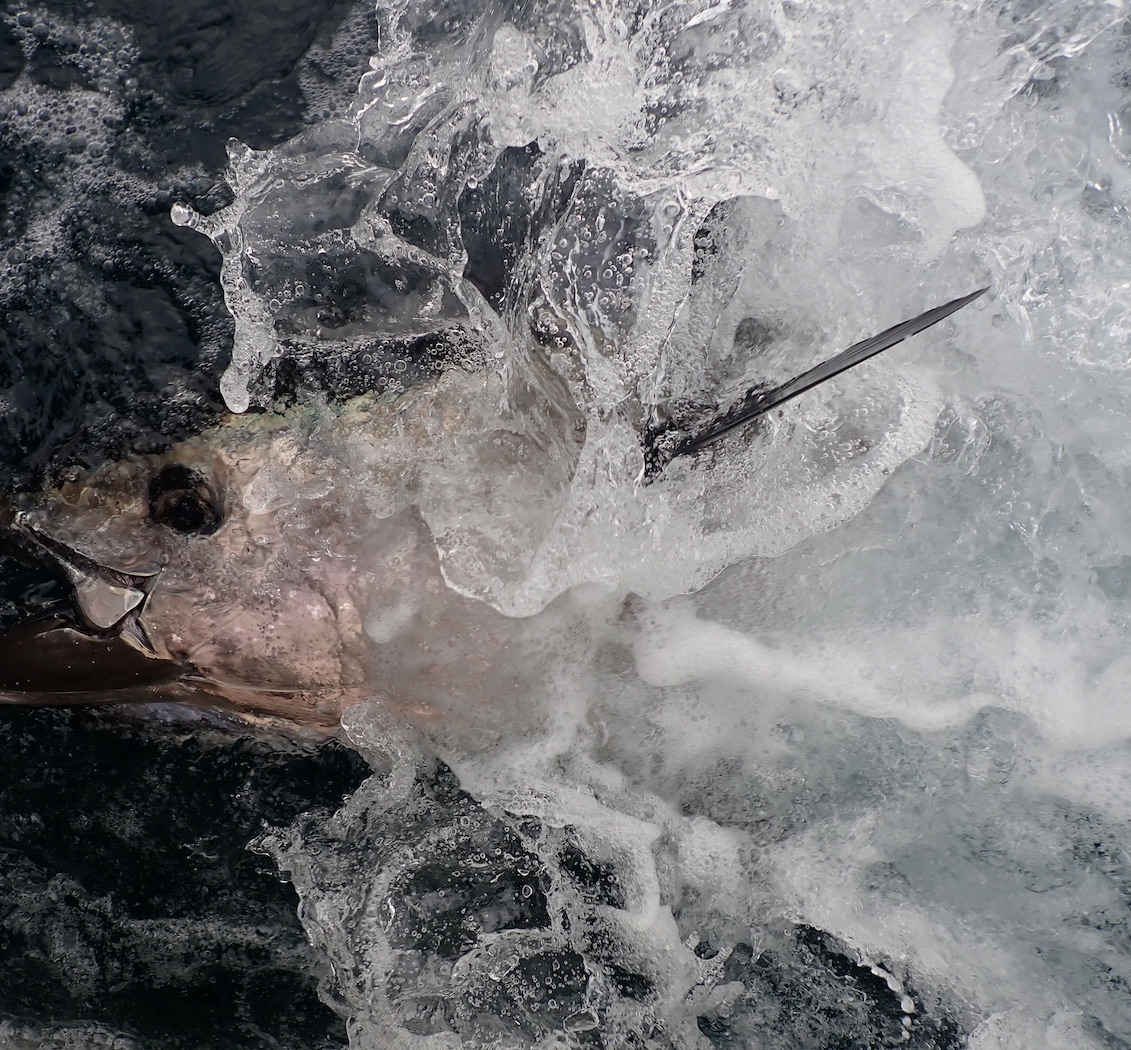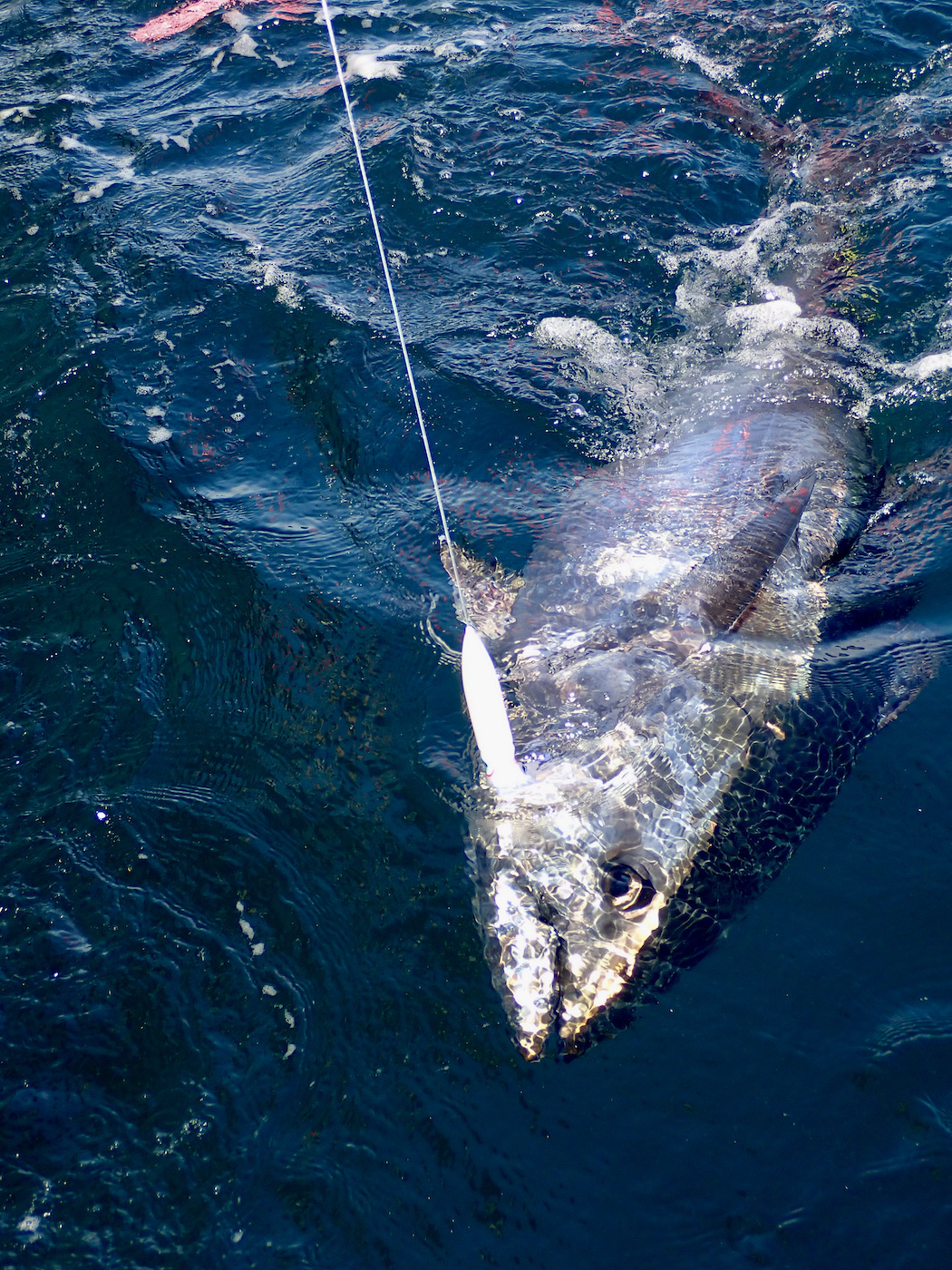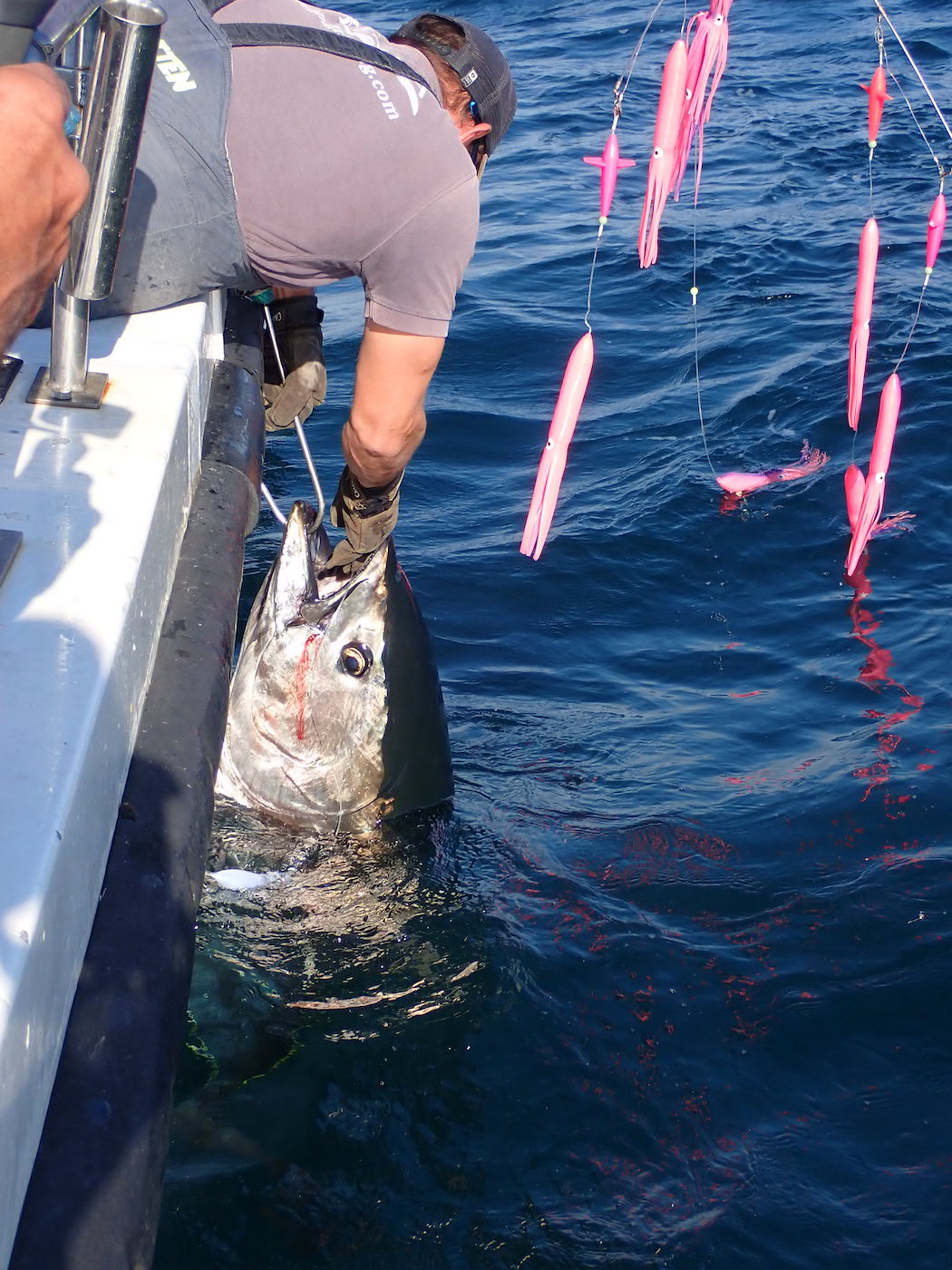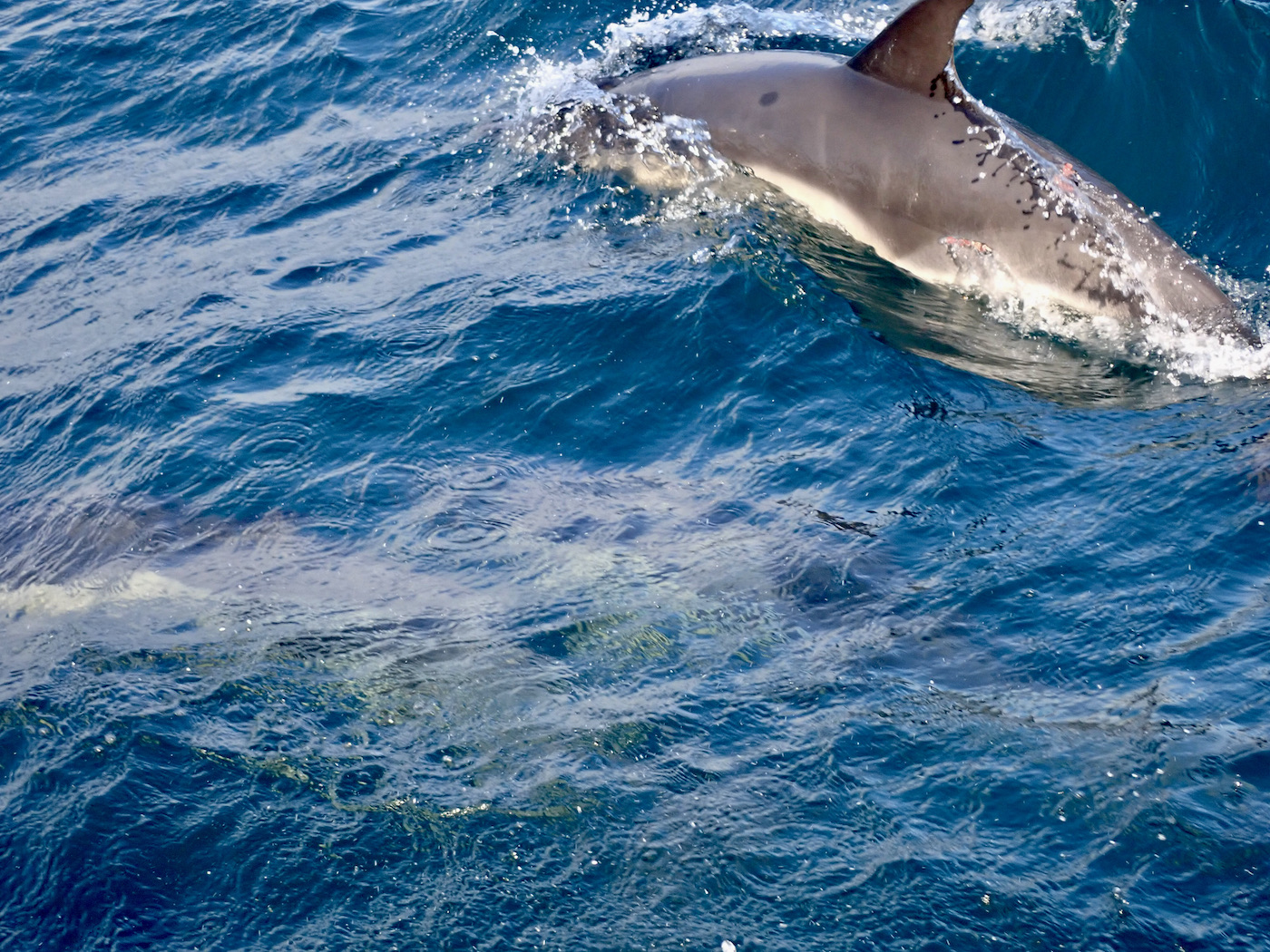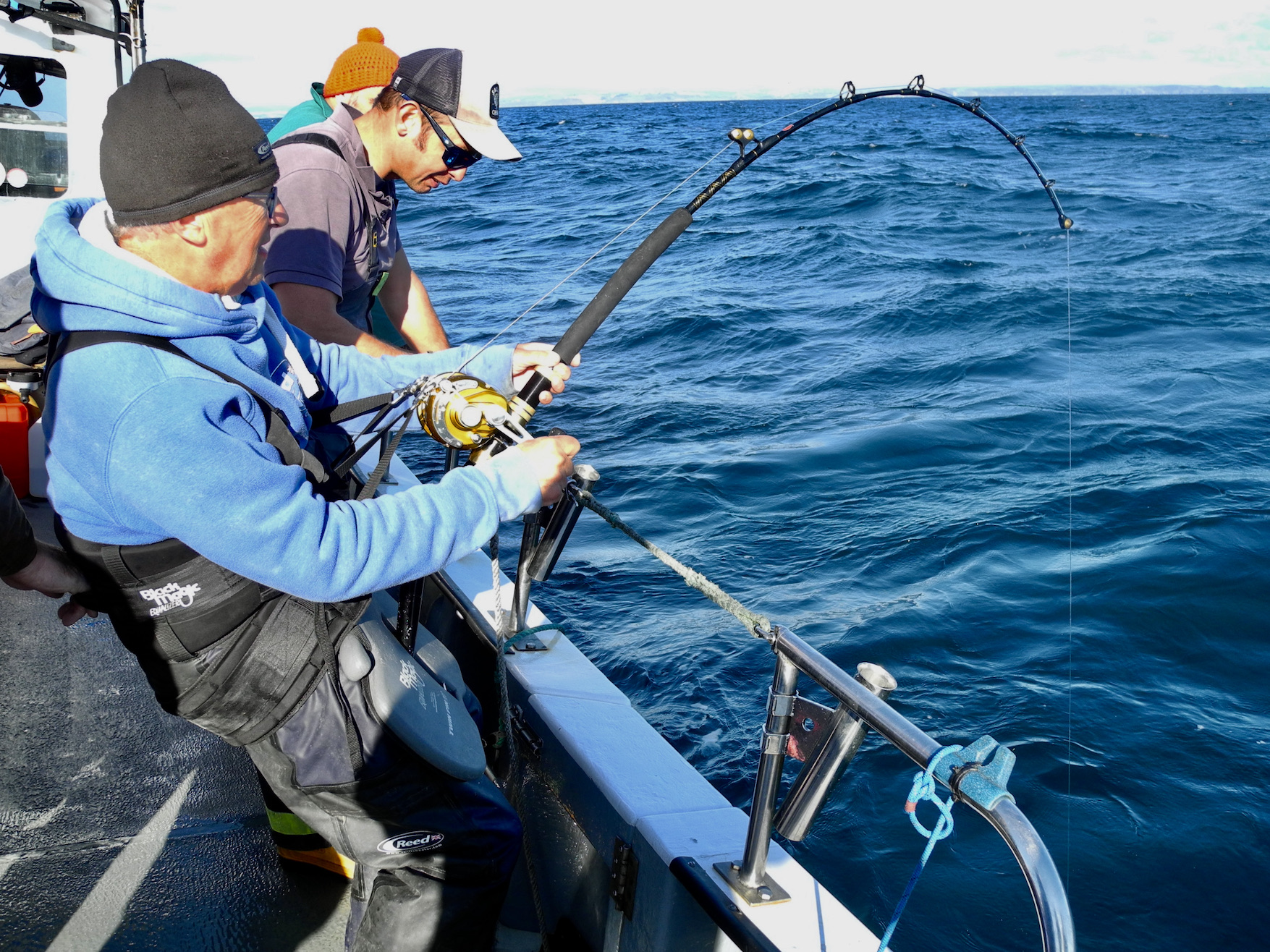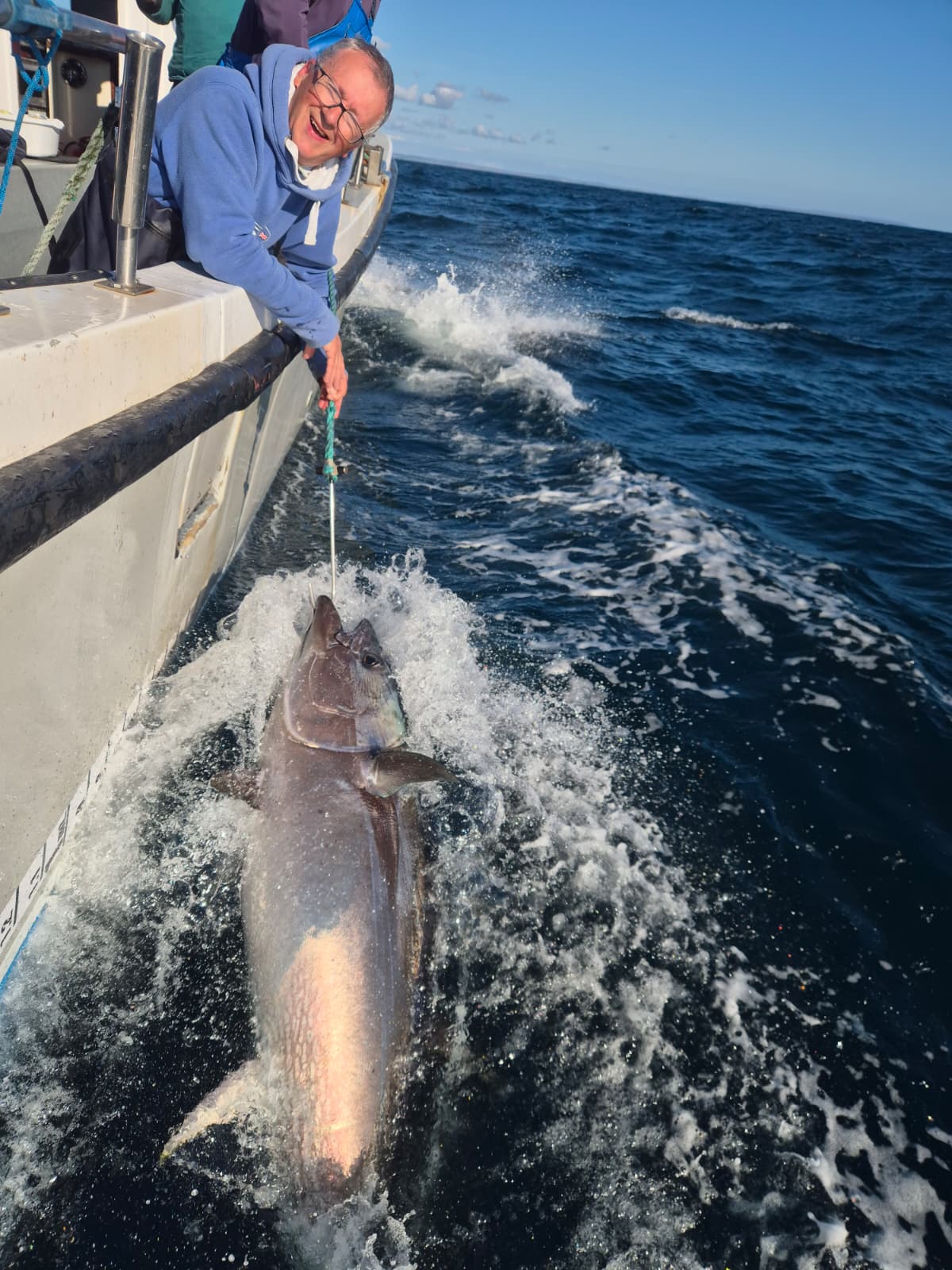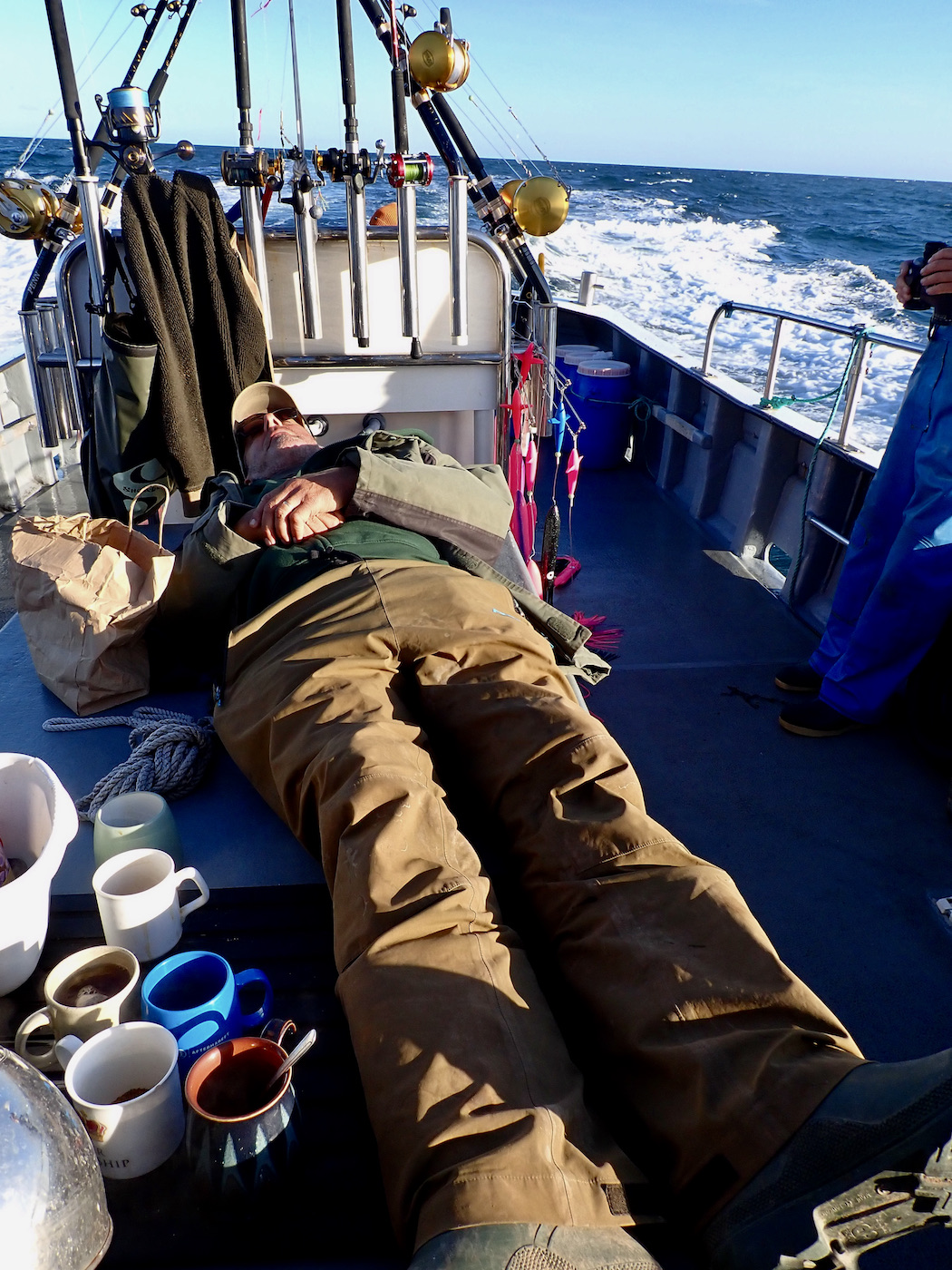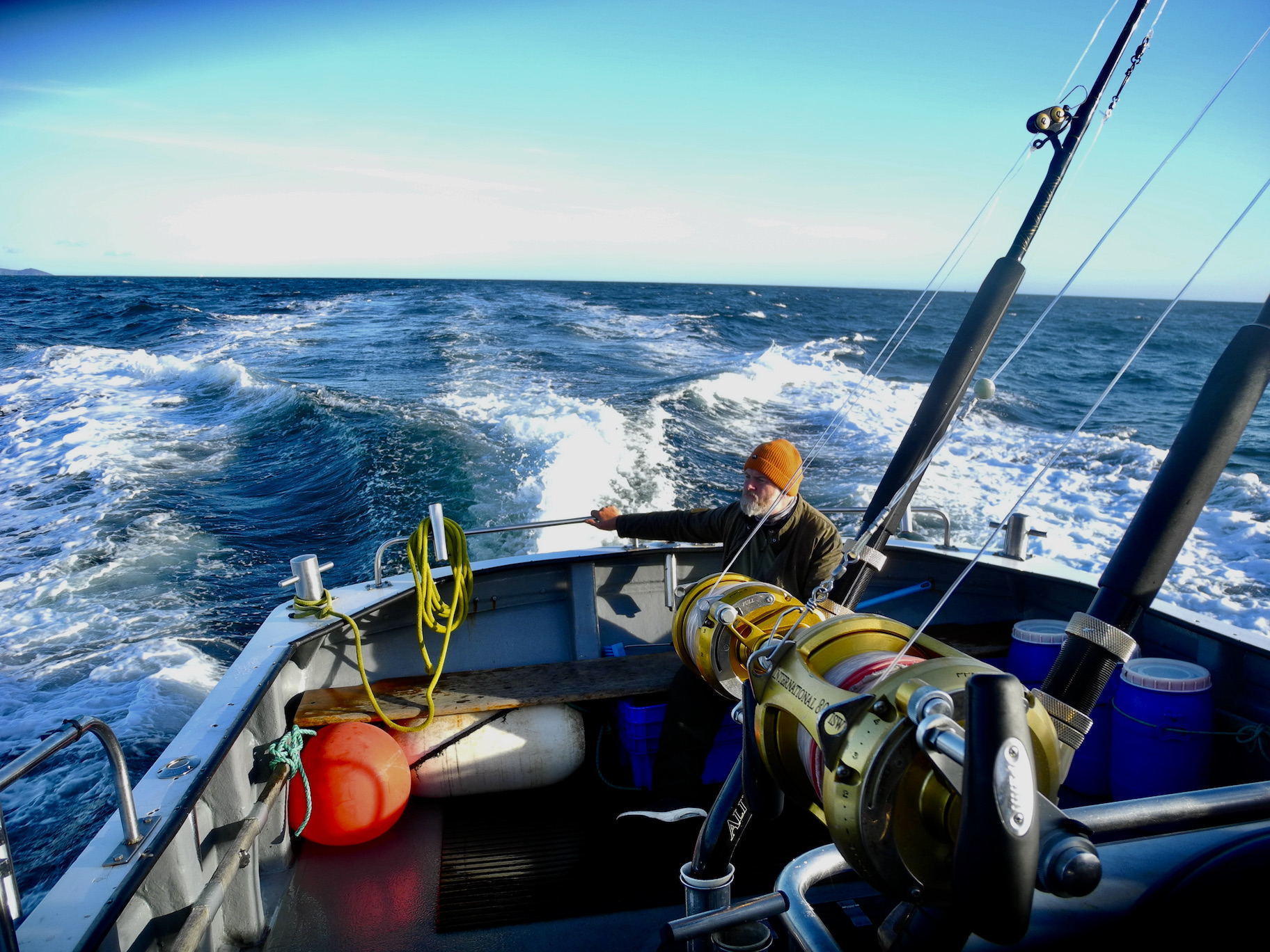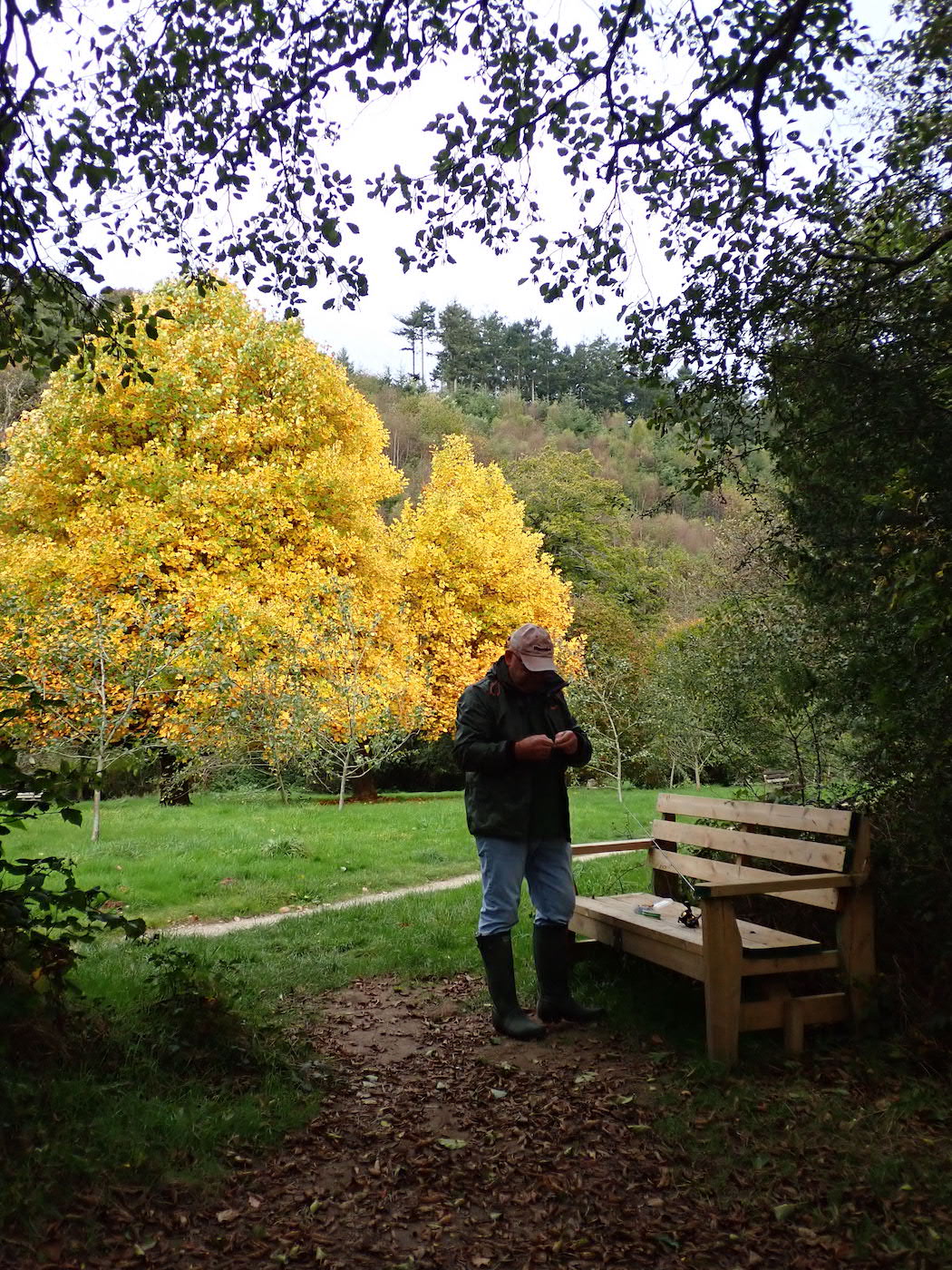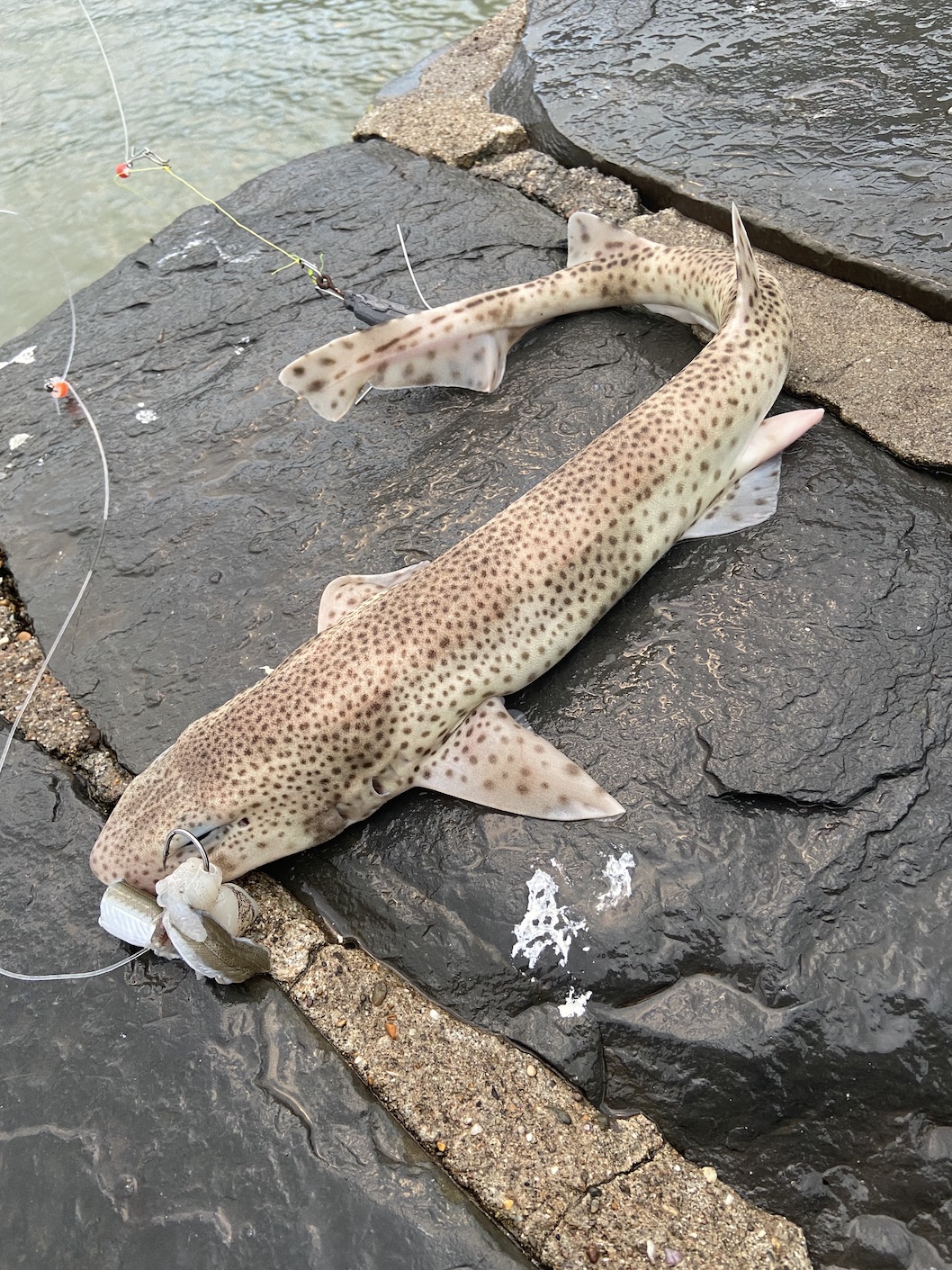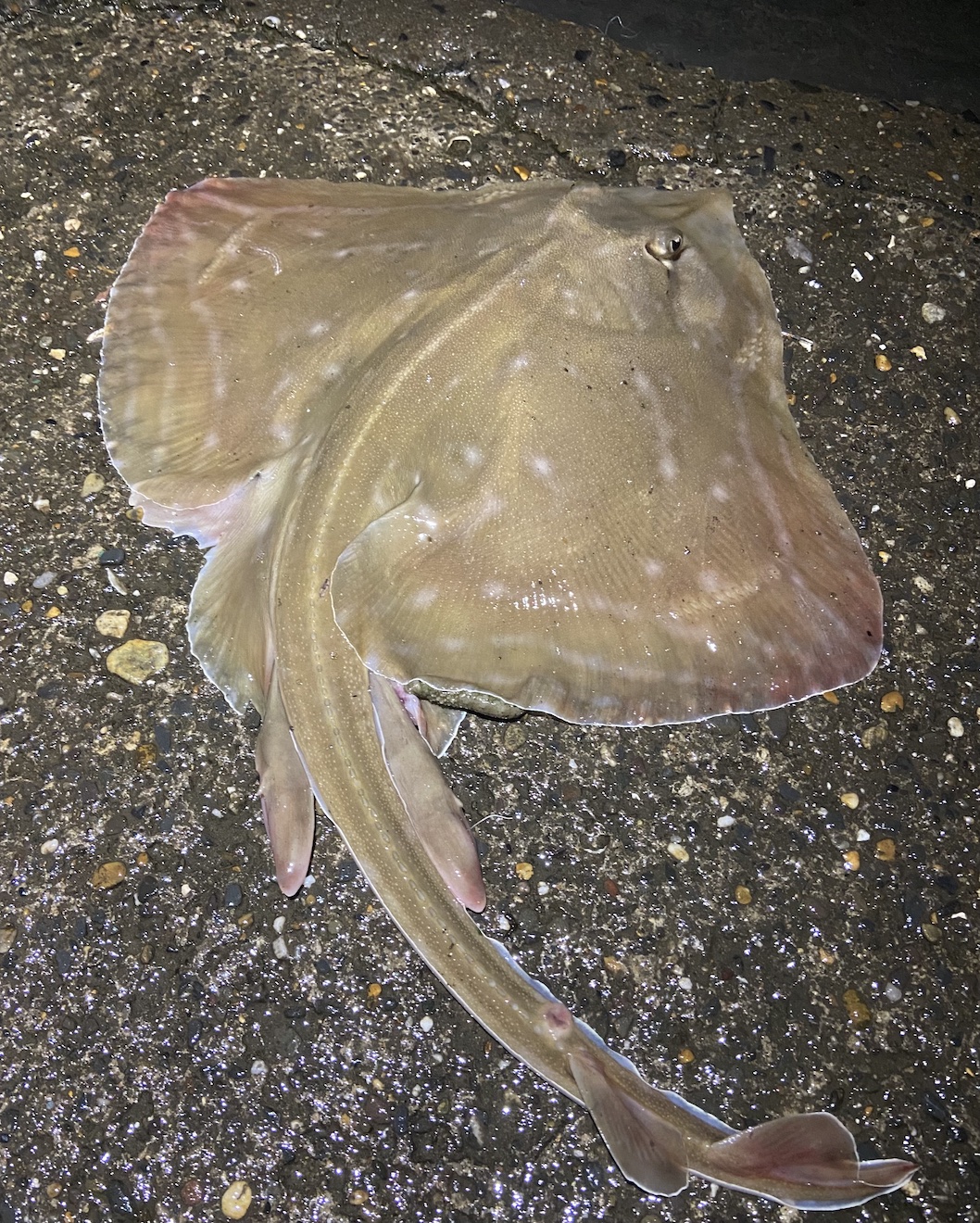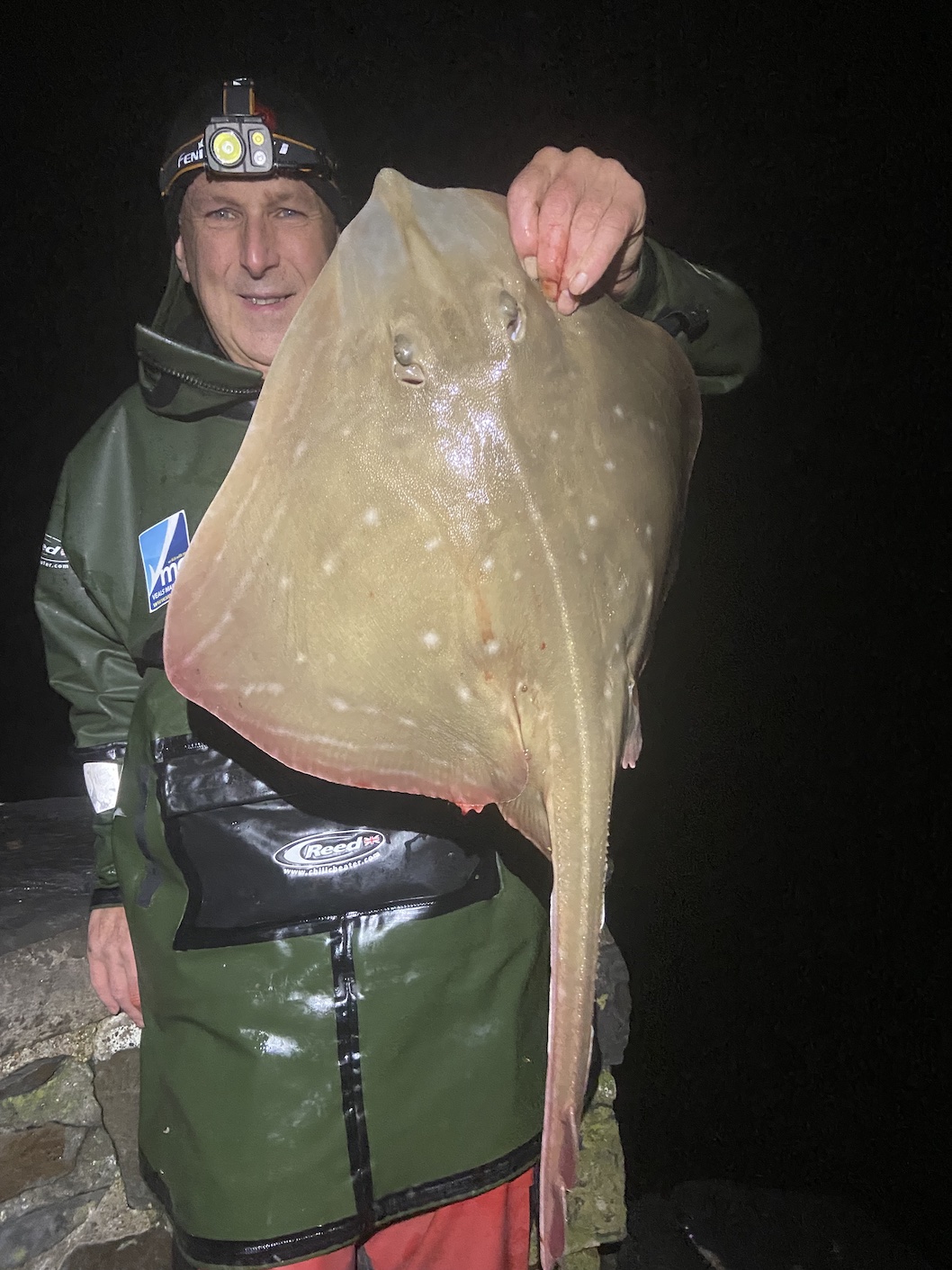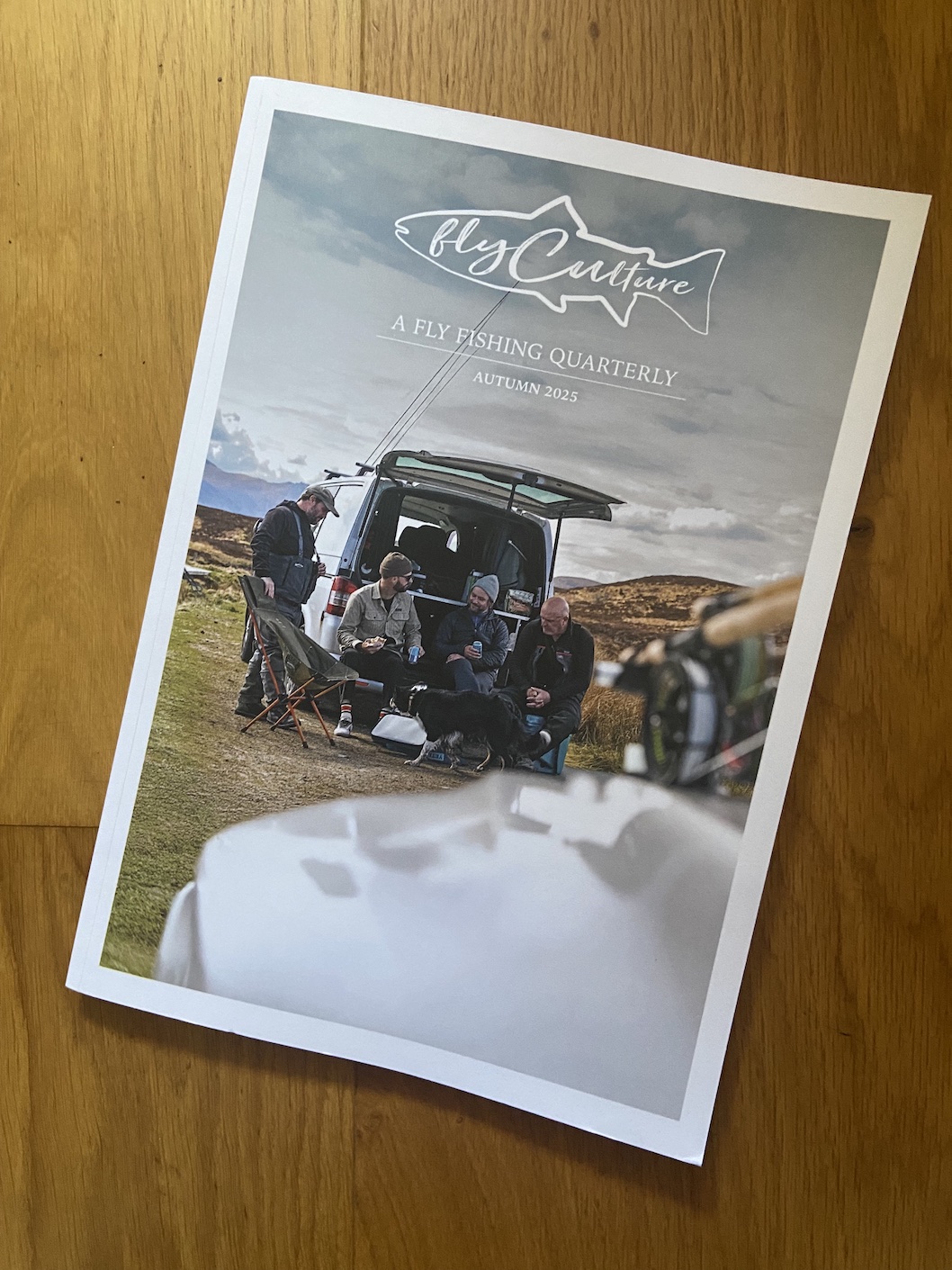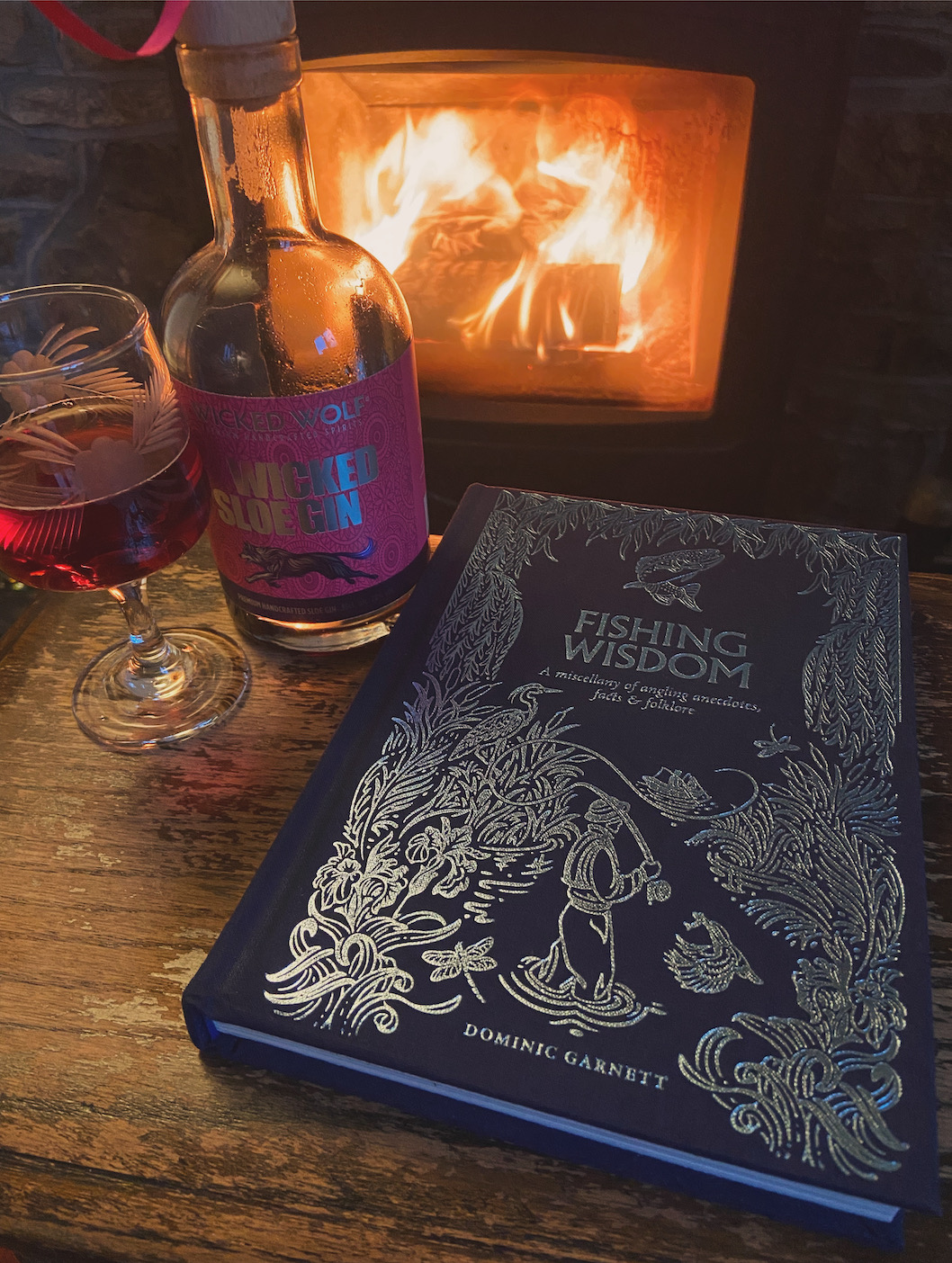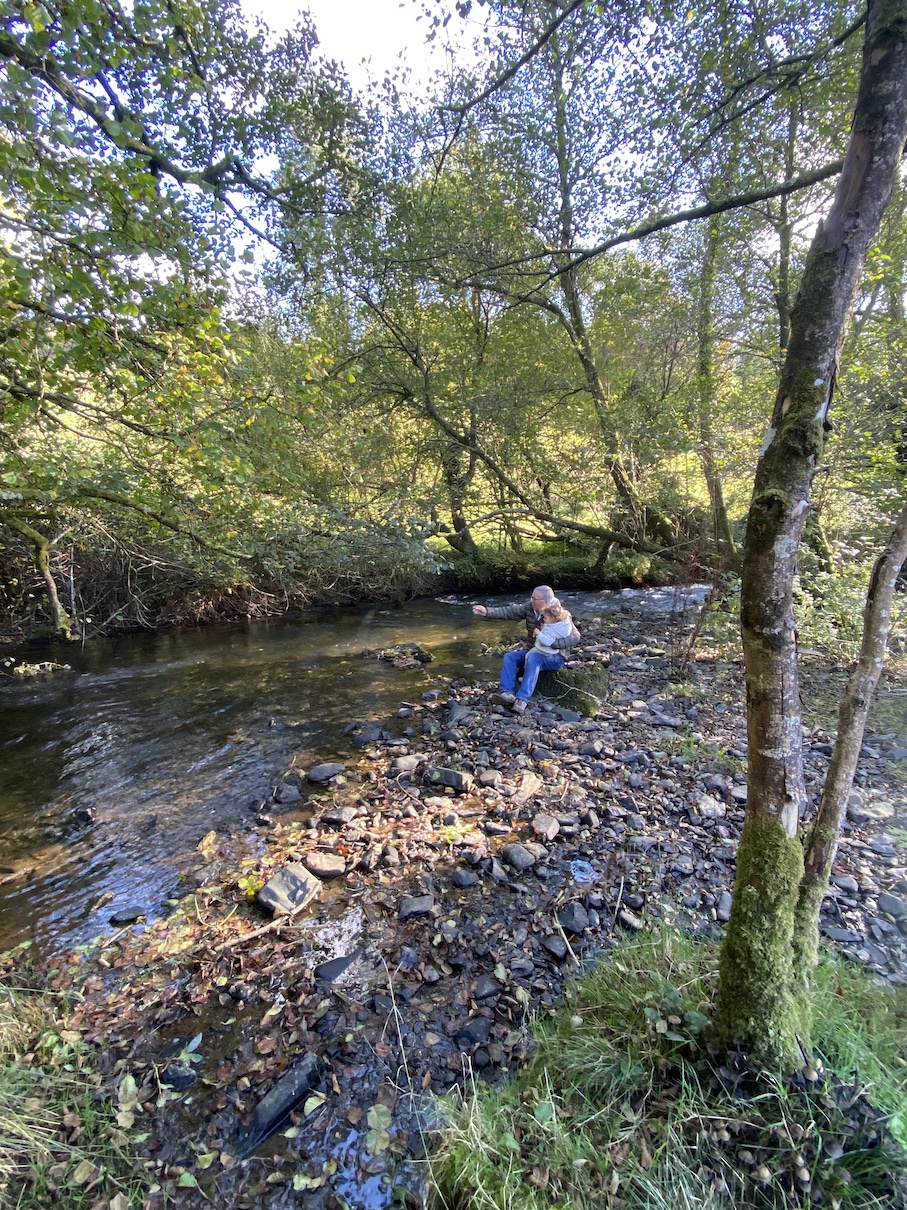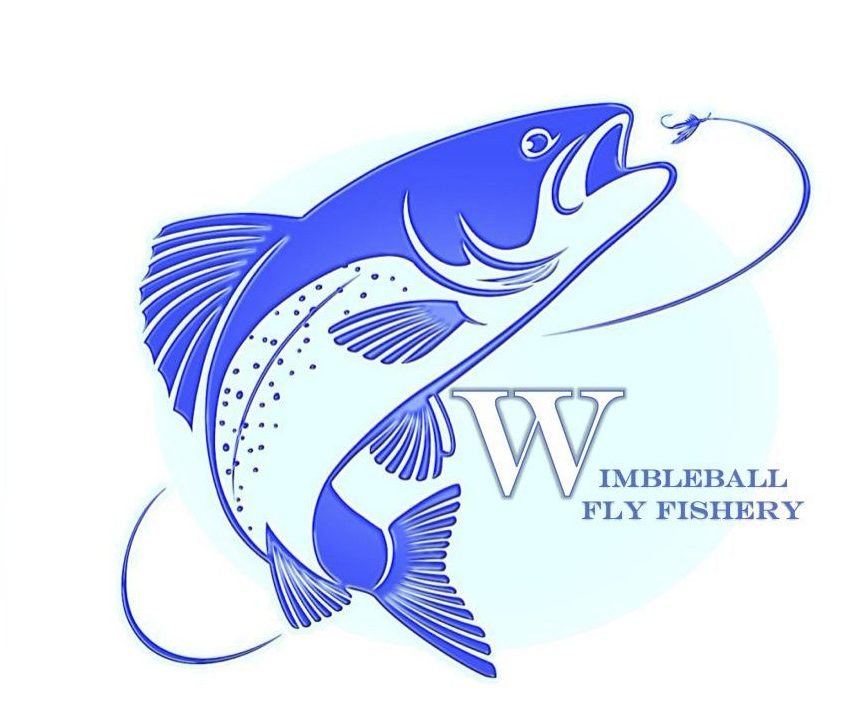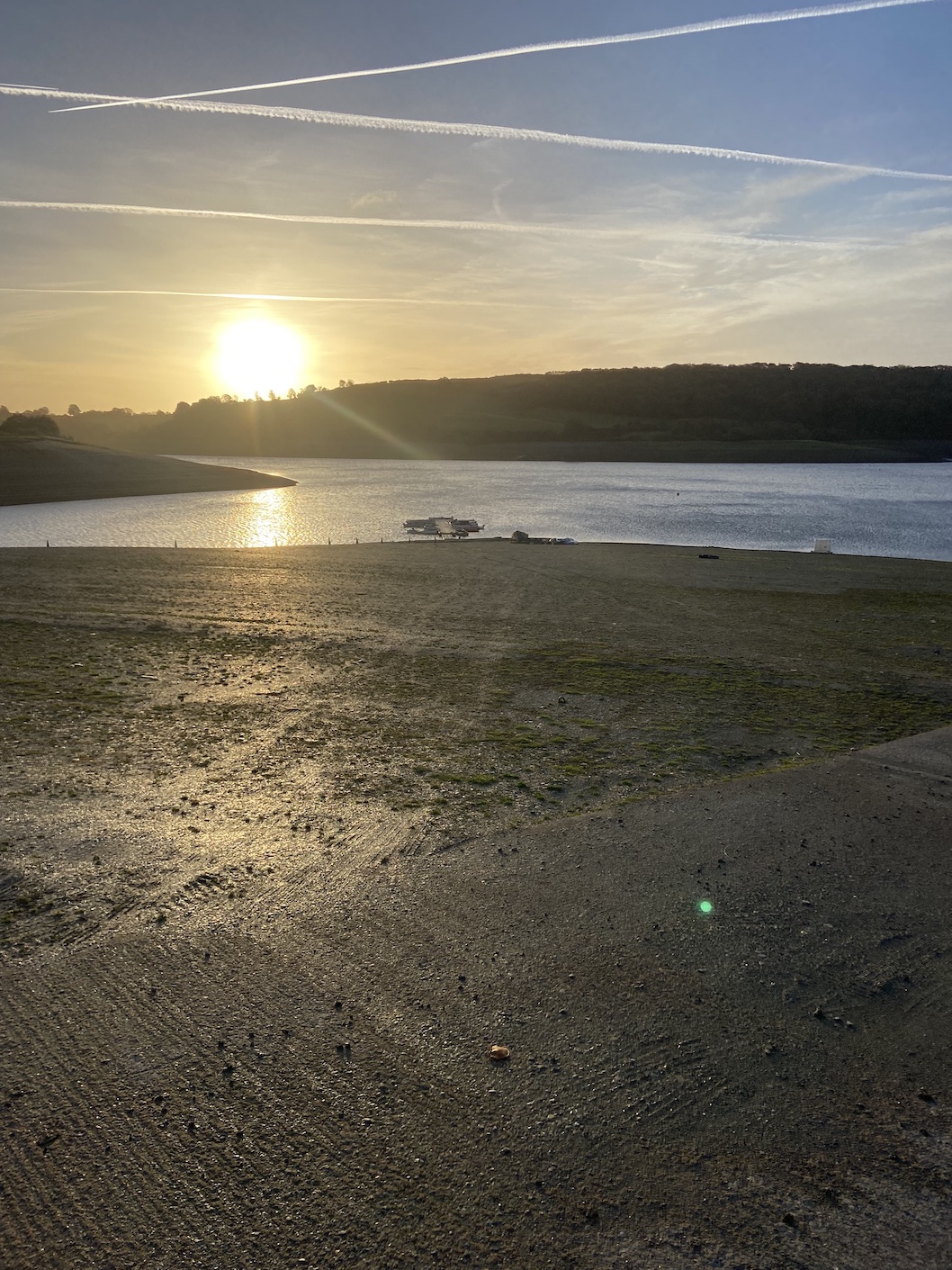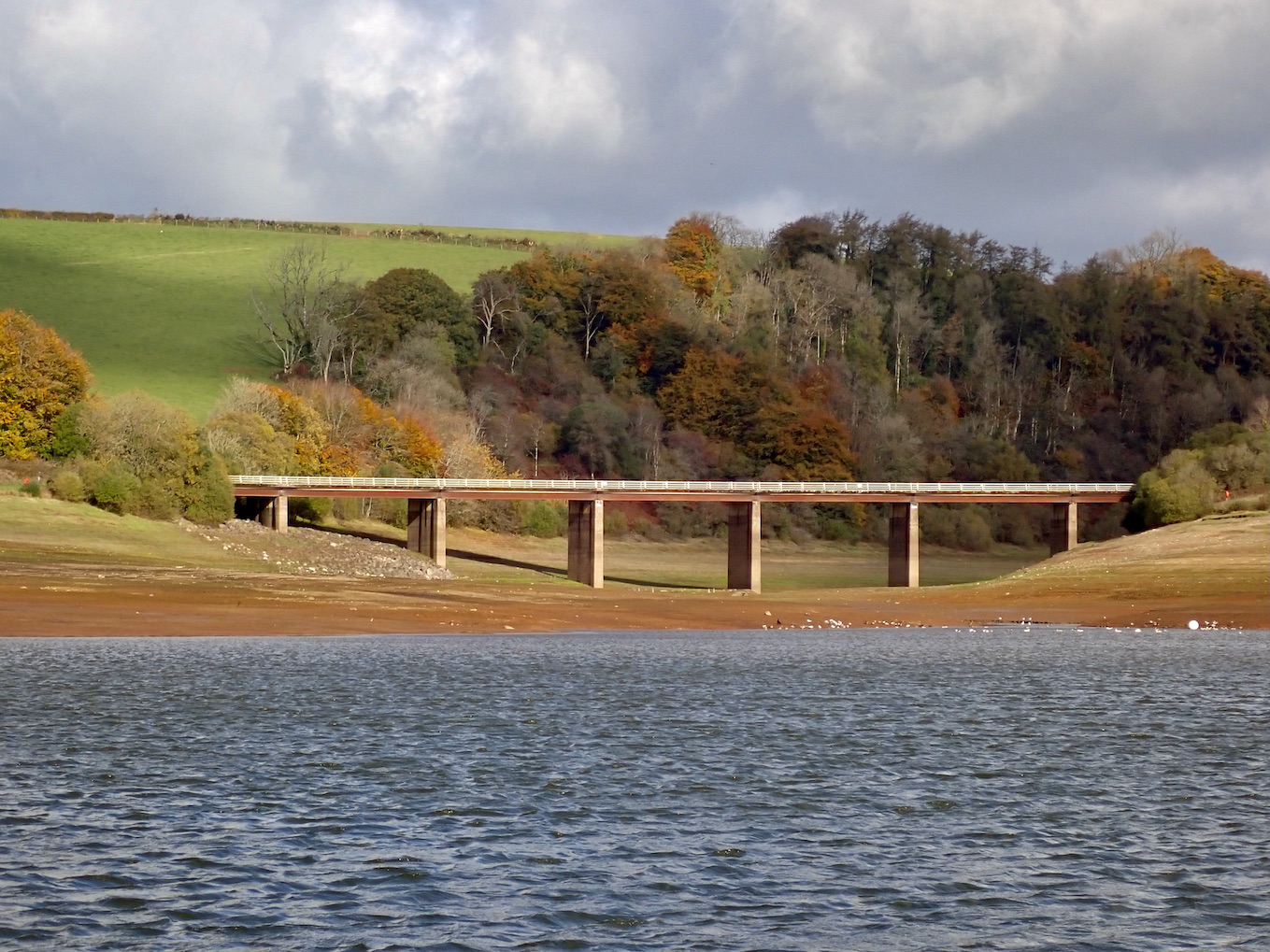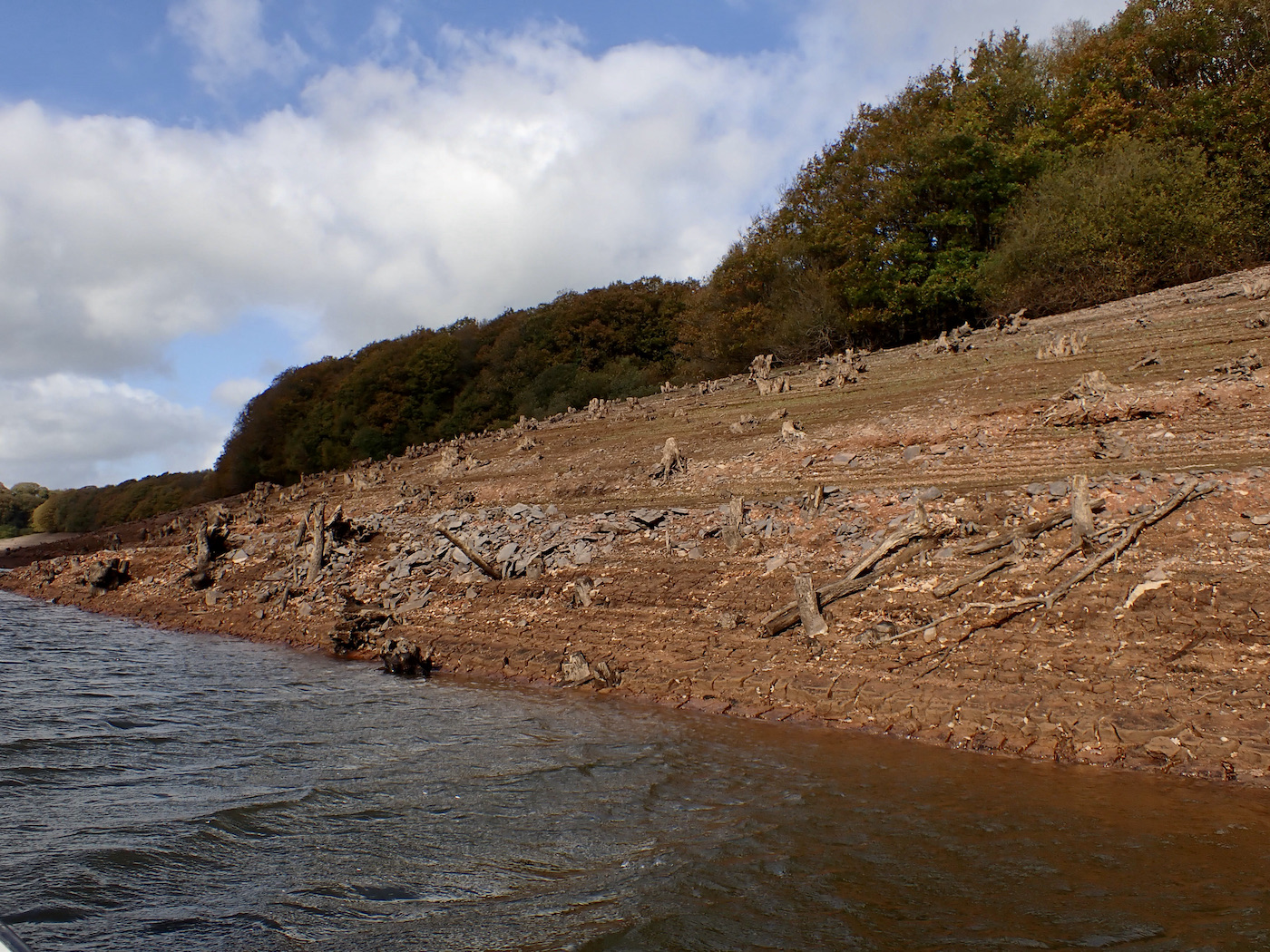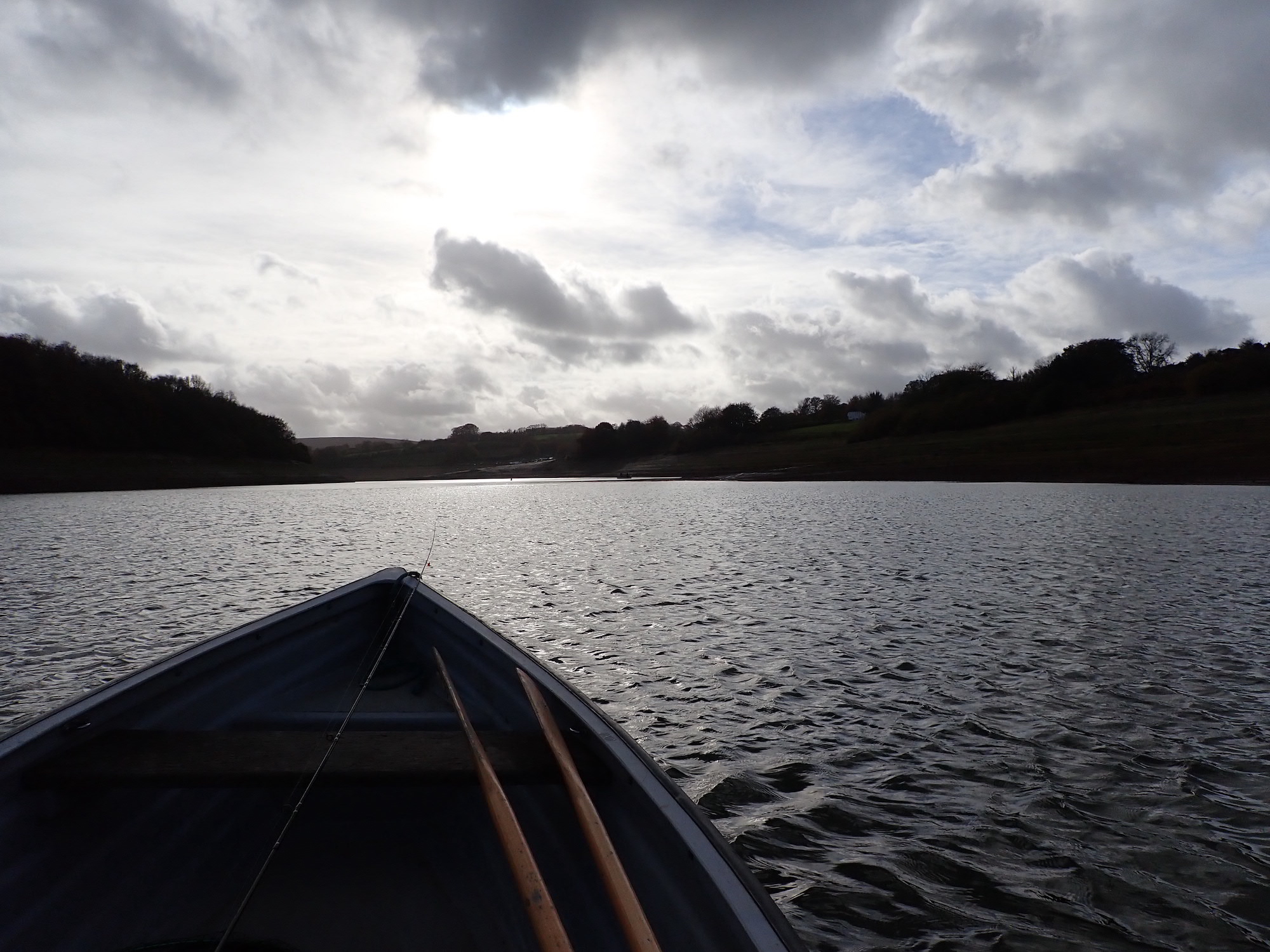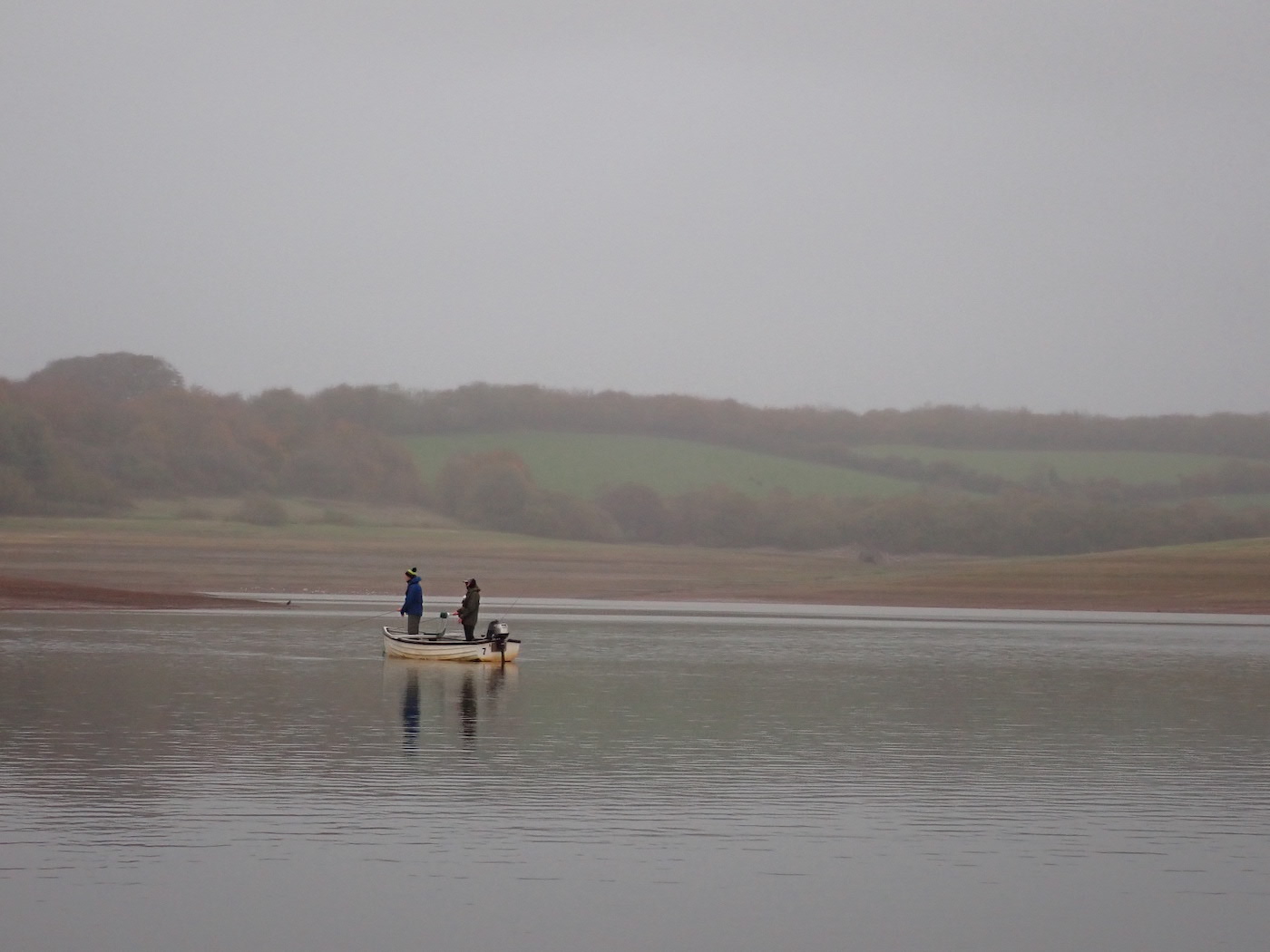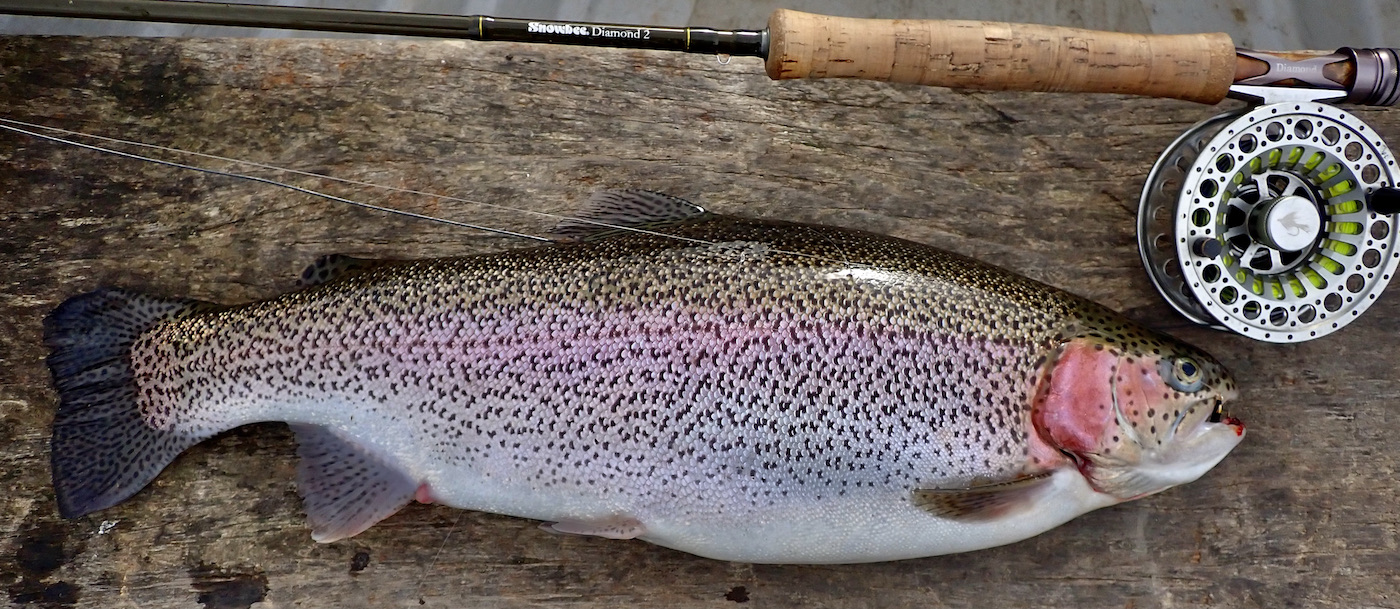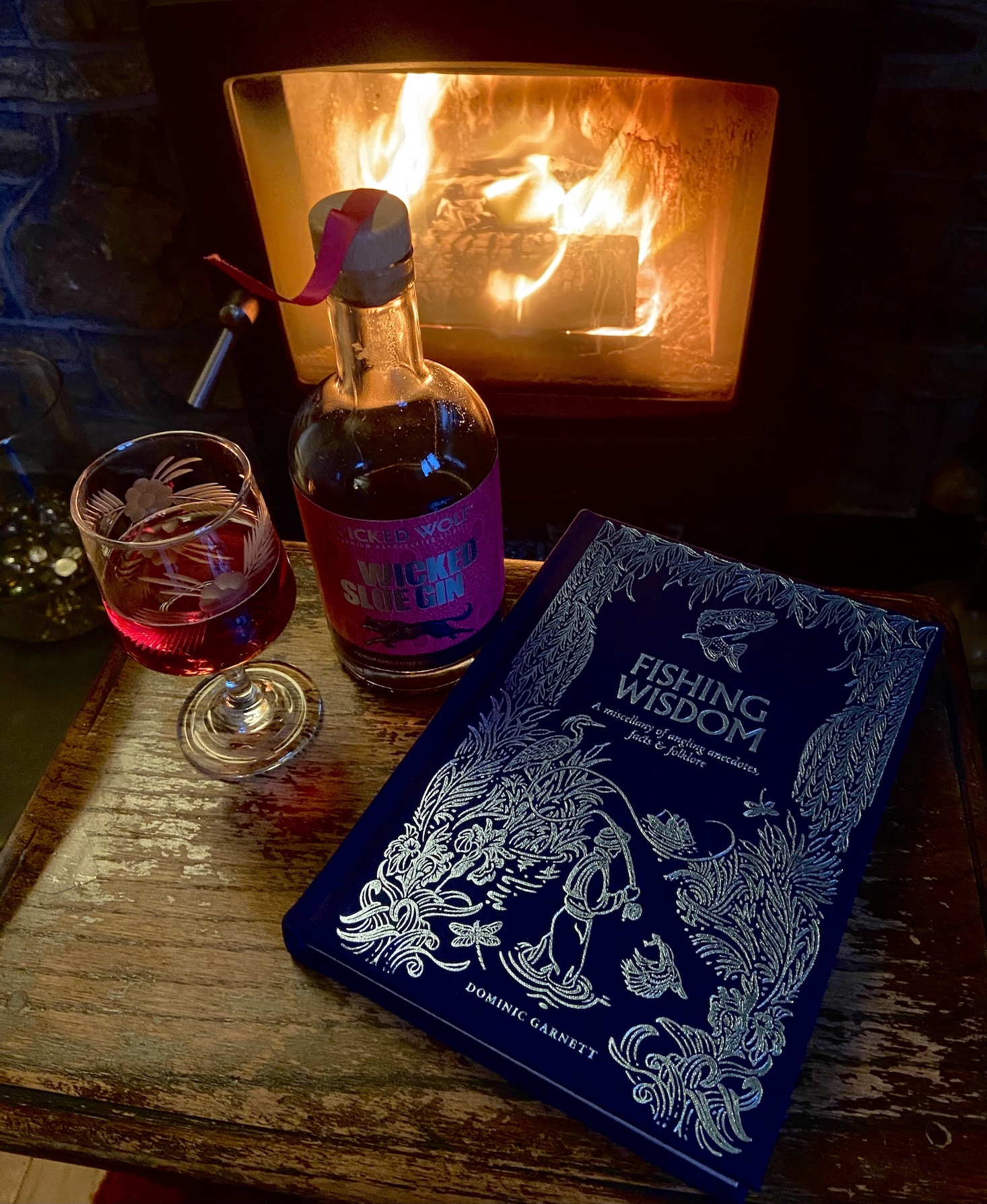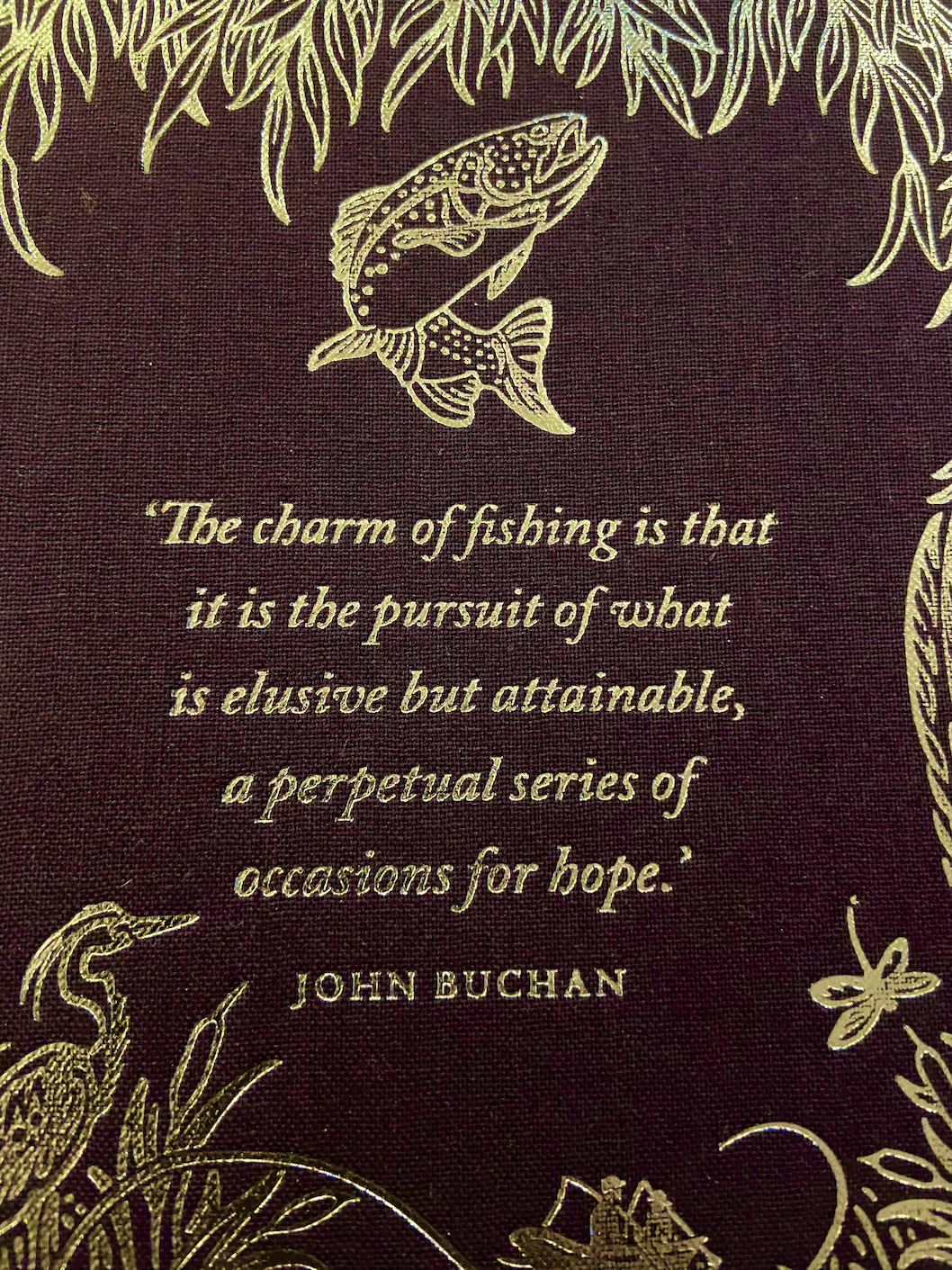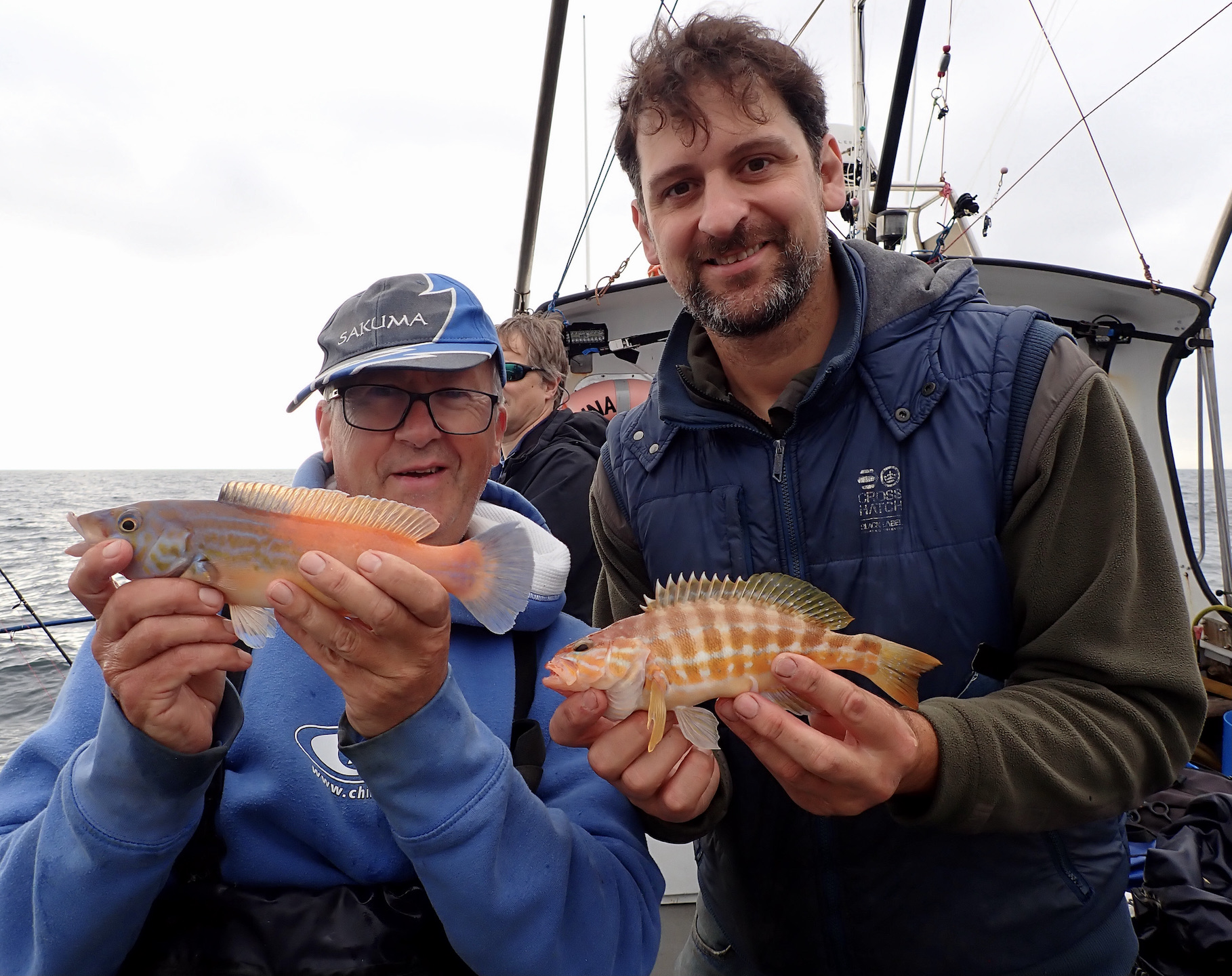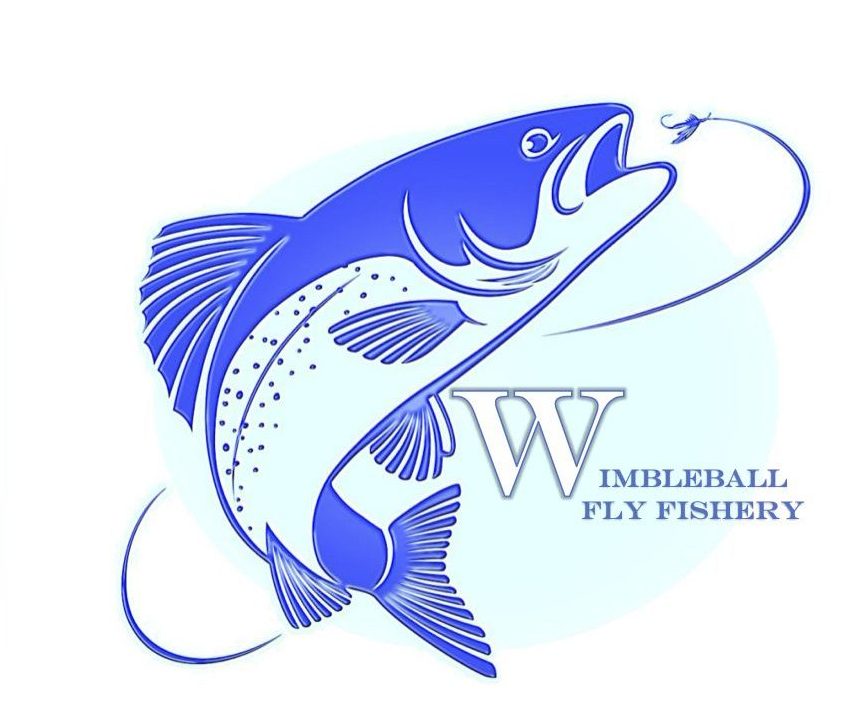
It had been too long since my last visit to Wimbleball Reservoir and on arrival at the lake shoreline I was shocked to stand at top water level and gaze at the distant boat launching pontoon far away at the water’s edge.

The lake now at less than 30% capacity demonstrates the impact of a dry spring followed by a long dry summer. The recent Autumn rainfall has had little impact so far and we can only hope for a very wet winter to restore the reservoir to full before next Spring. Abstraction from the River Exe will be key for Wessex and South West Water in achieving this goal for the lake is a shared resource that provides water across Devon and Somerset. I believe there are plans to build a new reservoir adjacent to Cheddar Reservoir that will take some of the load off Wimbleball but this is several years away.
There was a brisk North West Wind blowing which would undoubtedly influence where to fish. After loading the boat I headed up to Bessom’s an area that had been producing and is often productive at this time of year.

The road bridge stood high and dry a stark indication of the low level already mentioned. Autumn leaves in shades of bronze stood as a backdrop to the scene. It was indeed well worth visiting the lake to witness the banks revealing scars from its living past before the huge concrete dam held back the River Haddeo that joins the River Exe a mile or so below Dulverton.
The water at this shallow end of the lake was rather murky as a result of recent rain. I thought this could be the reason I could get no action as I searched the water with my flies. I headed to the dam end of the lake and passed the two other boats fishing the lake. I enquired as to success to be told that they too were struggling to find the fish.

I ventured into the deeply wooded Upton Arm hoping to find some shelter but the North West Wind seemed to be increasing in strength making fishing difficult. It was fascinating to explore the steep slopes with the rotting roots of tree’s an eery testament to the valley that was flooded in the late 1970’s.


I felt slightly ill at ease alone in this secluded area and decided to head back up to the dam area where I found more sheltered water. After half an hour or so I still failed to connect with any of the lakes trout. I was using a sinking line with a damsel nymph on the point and a black cormorant on a dropper. This was a combination I felt confident with and my gut feeling was to stick with this and search for fish.
I headed back up the lake again trying the shallow end. It was one of those days when things just seemed hard going. Those days when the wind catches the fly and it ends up stuck right in the middle of your back forcing you to disrobe to remove it. The fly you have just selected and put on the seat blows off into your fishing bag resulting in five minutes playing find the fly.

Deciding on another move I pulled the starter rope to be met with a brief splutter and total engine seizure. Looking over the back of the boat I spied a short length of rope wrapped tightly around the prop. It was impossible to remove the rope in situation so I had to haul the outboard on to the boat. The rope was solid and there was no way I could untangle it. All I had on me was a pair of line snips totally inadequate for cutting the rope free. Fortunately a friend of mine was within hailing distance and was able to assist cutting the rope free with a pair of robust garden scissors. A valuable lesson was learnt; always carry a knife in your fishing bag just in case you need to cut yourself free. Luck was to some extent on my side though for if this had happened whilst in the Upton Arm my days fishing would undoubtedly have been ruined. As the long row back against the strong wind would have been challenging to say the least.
Persistence will generally pay off and I headed to the North shore where I found better clarity and deep water close to the bank. I stuck to the same fly combination and was encouraged to see anglers in another boat enjoying some success as their rods flexed as a fish splashed in the water.

I felt a momentary tightening of the line that injected a degree of optimism and belief. Five minutes later there came that delightful tug on the line as a rainbow trout devoured one of my offerings. The fish fought hard leaping from the water and giving numerous strong runs that tested both tackle and my nerves.


I was relieved to pull a splendid rainbow of around 4lb 8oz into the net. It had taken the black cormorant on the dropper and I noted that the barbless hook was held by just a sliver of skin in the side of the mouth. I noted that it was now cloudy with light drizzle, the wind had dropped and it was undoubtedly a couple of degrees warmer. A brace of rainbows followed in the next half an hour and with the light starting to fade I called it a day contented with success on a hard day.
These hard days are often more rewarding than those days when fish come easily to the lures.
As I drove away in the fading light a barn owl glided close to the road and I slowed down to watch it settle on an old farm trailer. The privileged sight of this ghostly bird still lingers in the mind as I reflect upon the day fishing Exmoor’s premier trout water.


